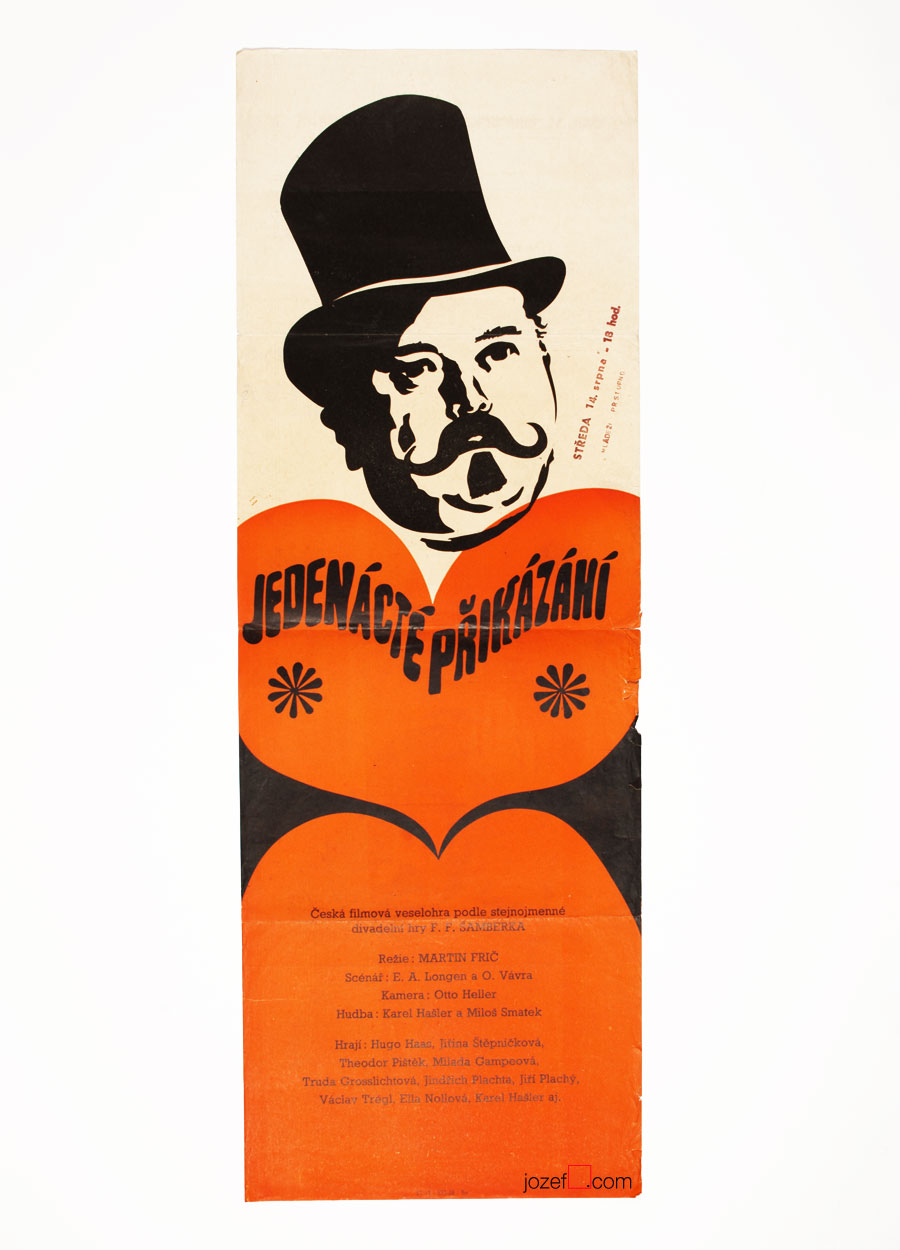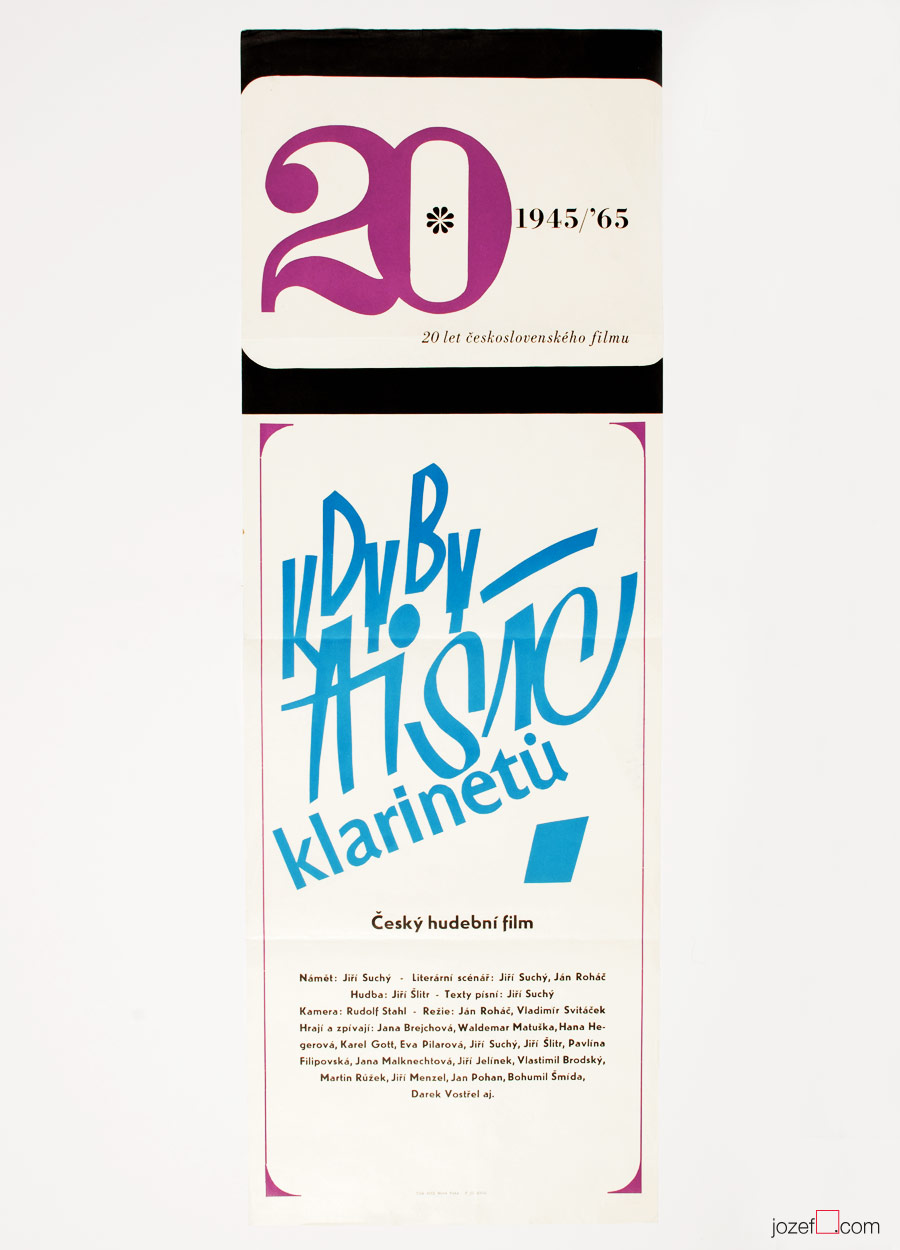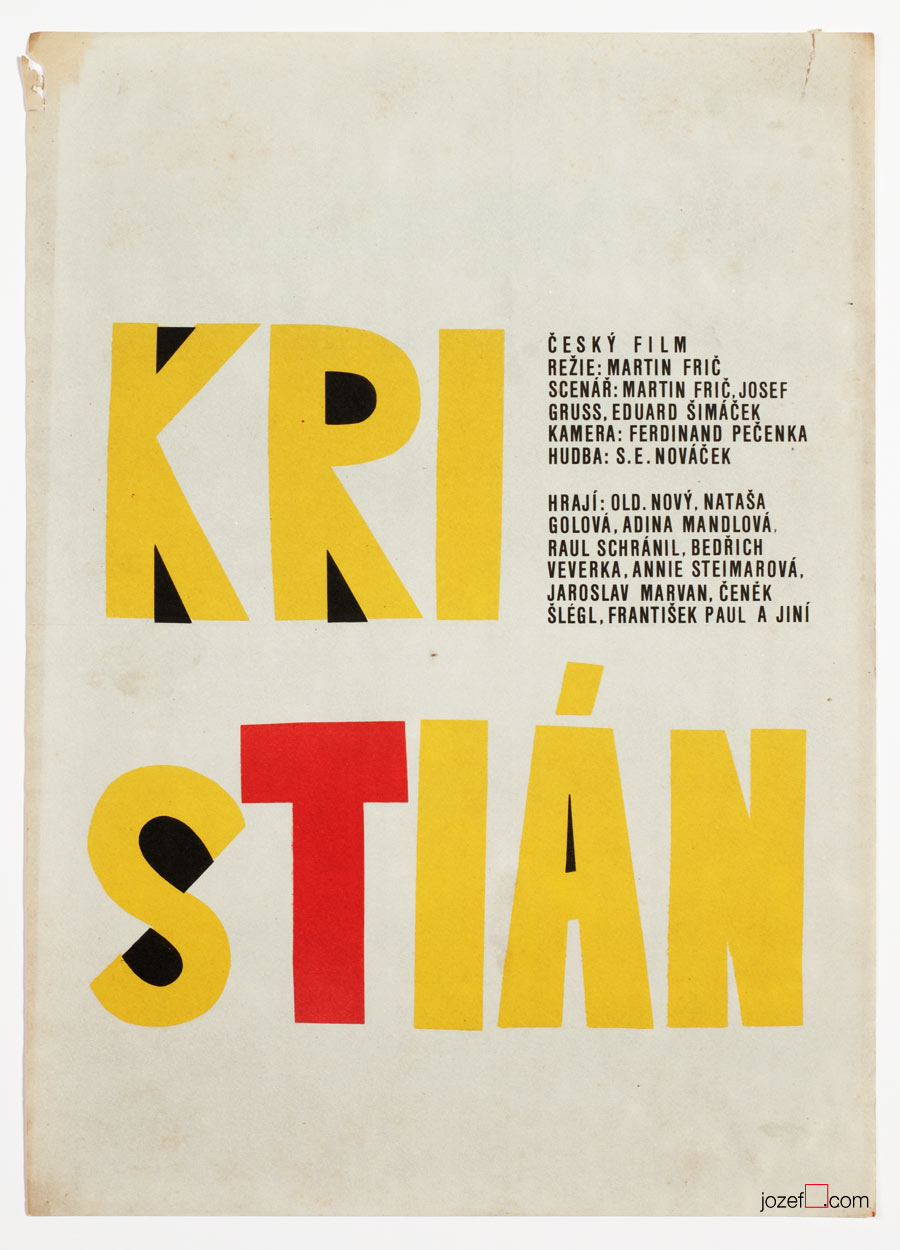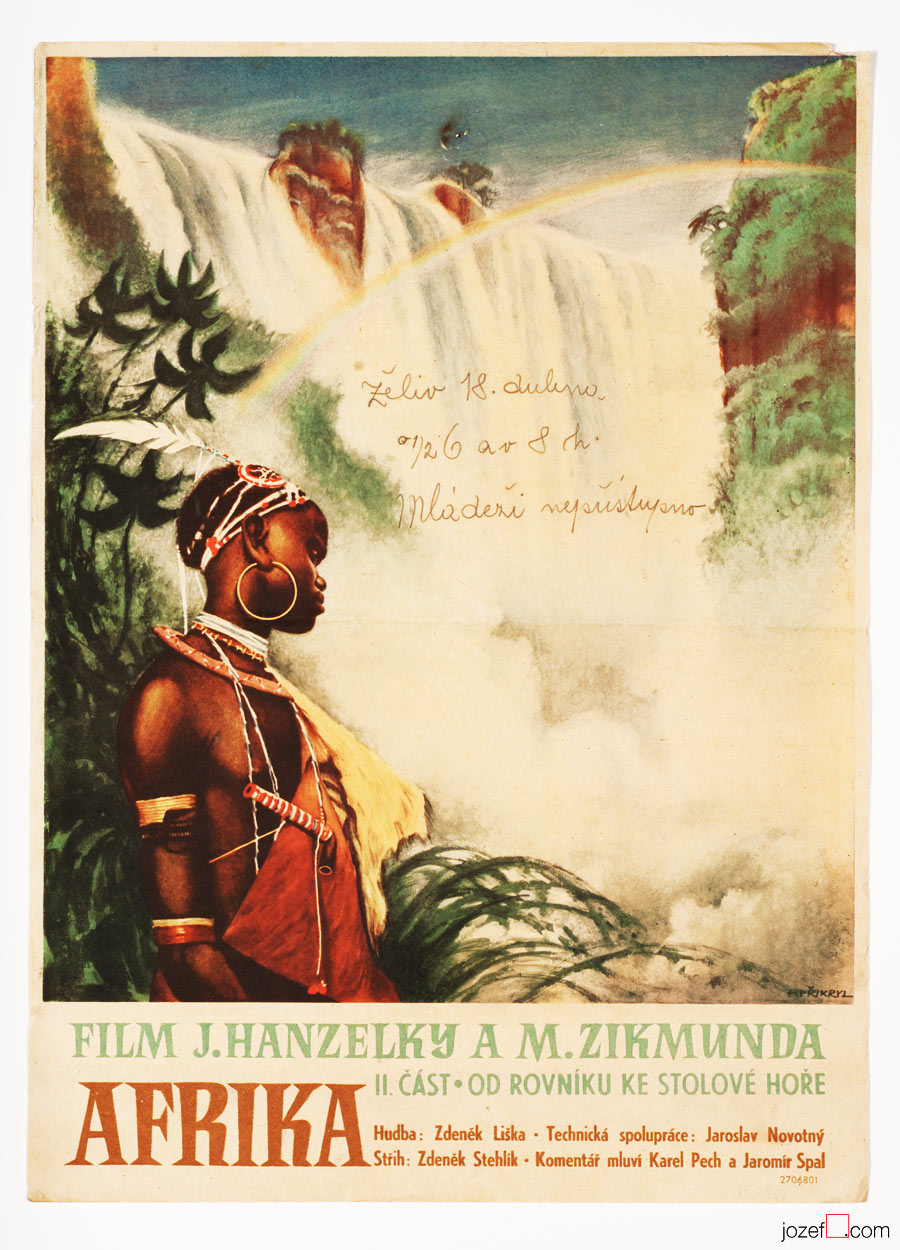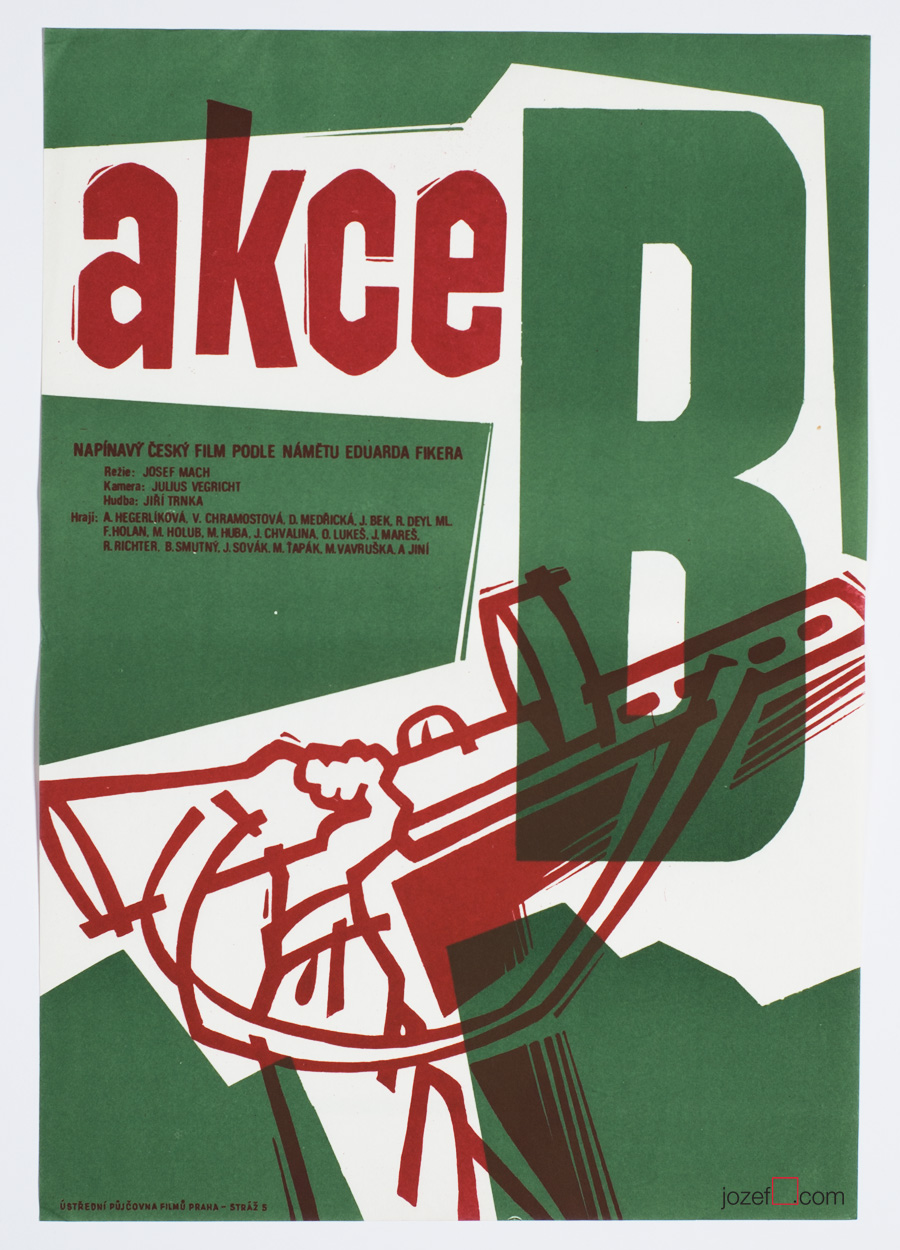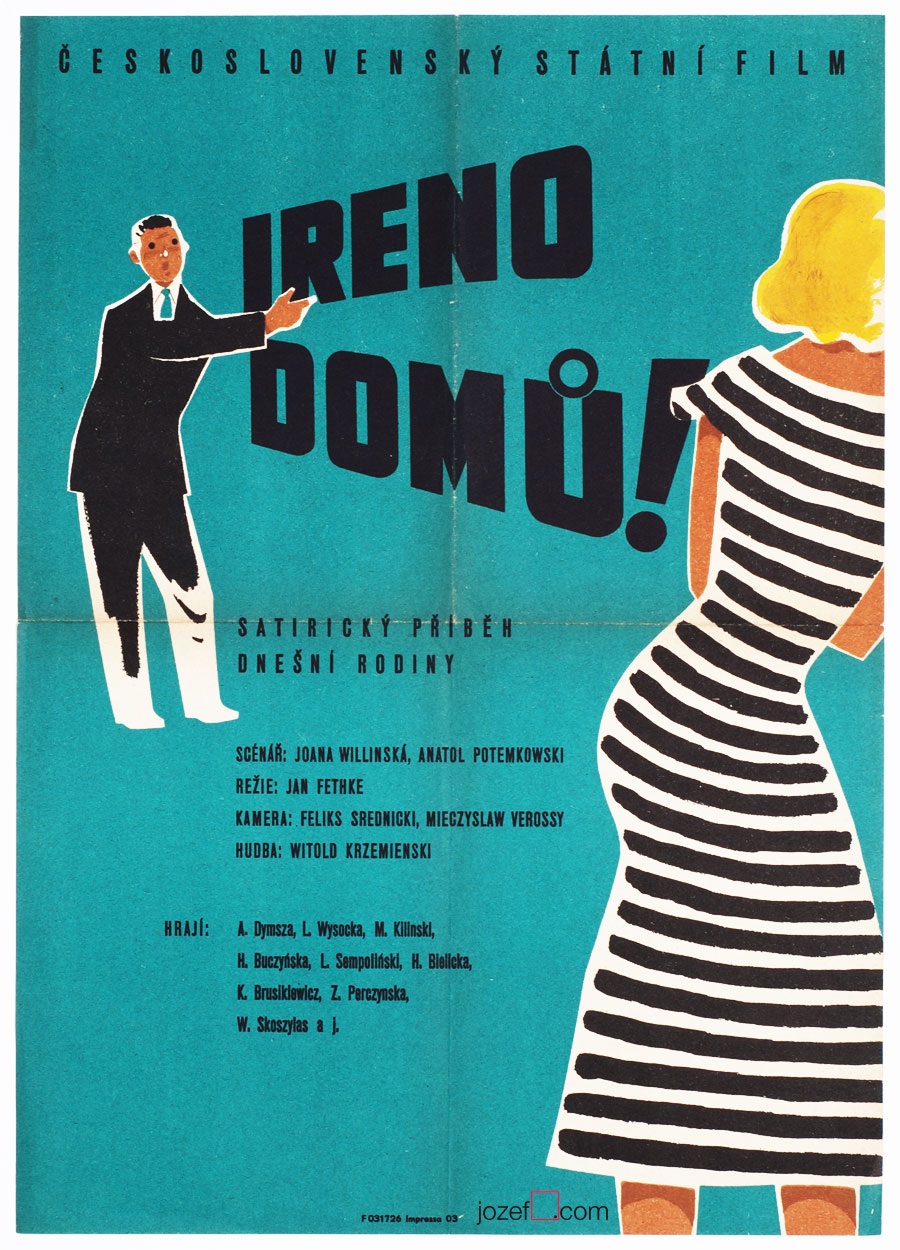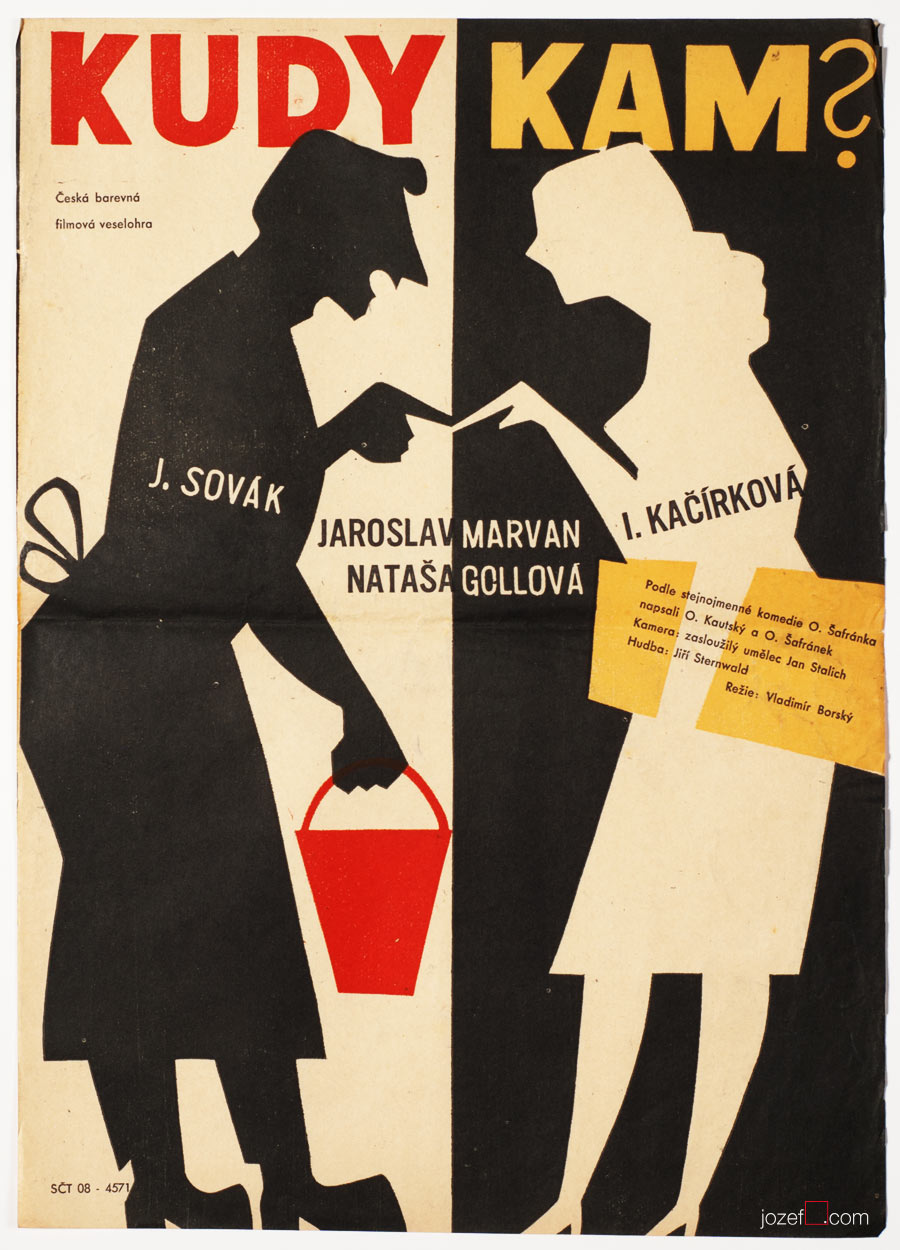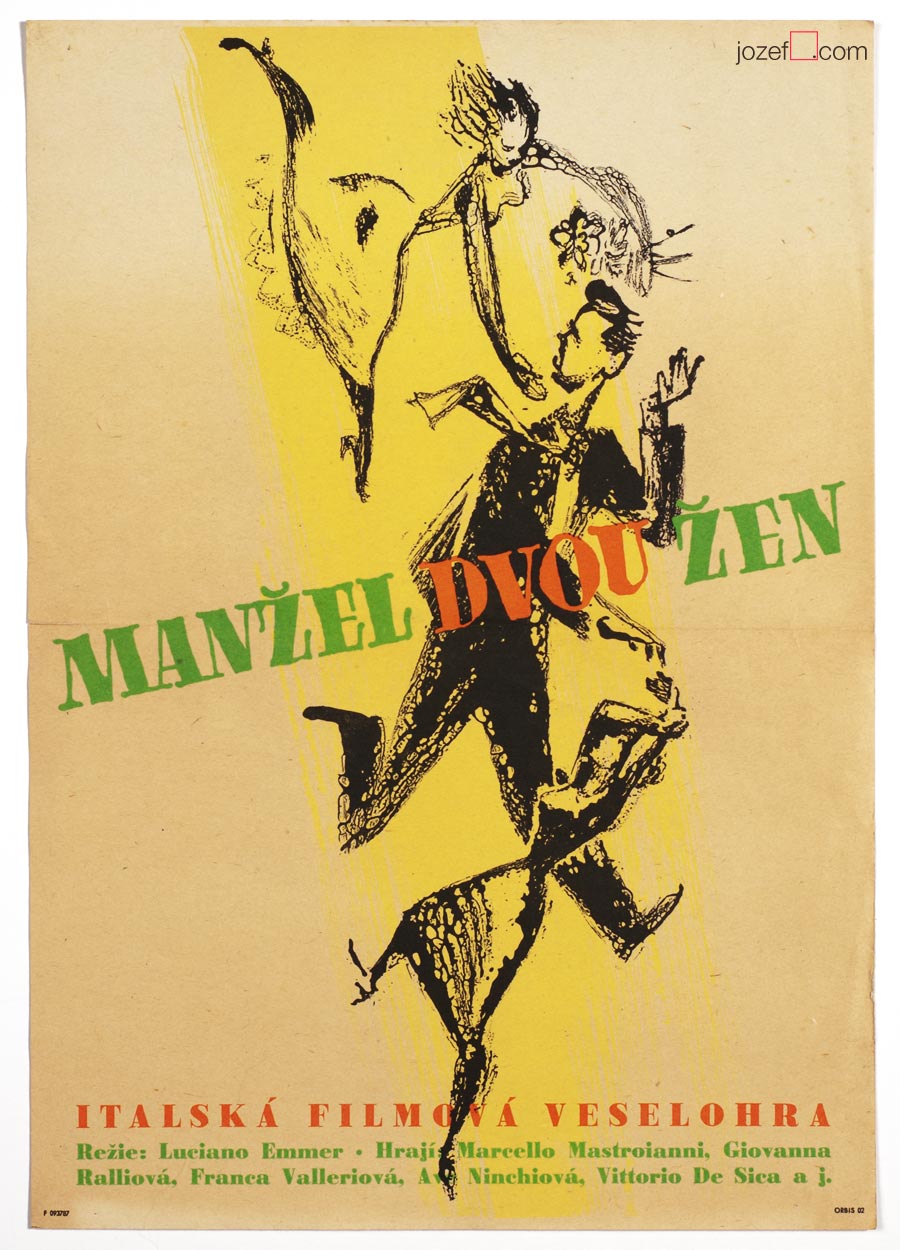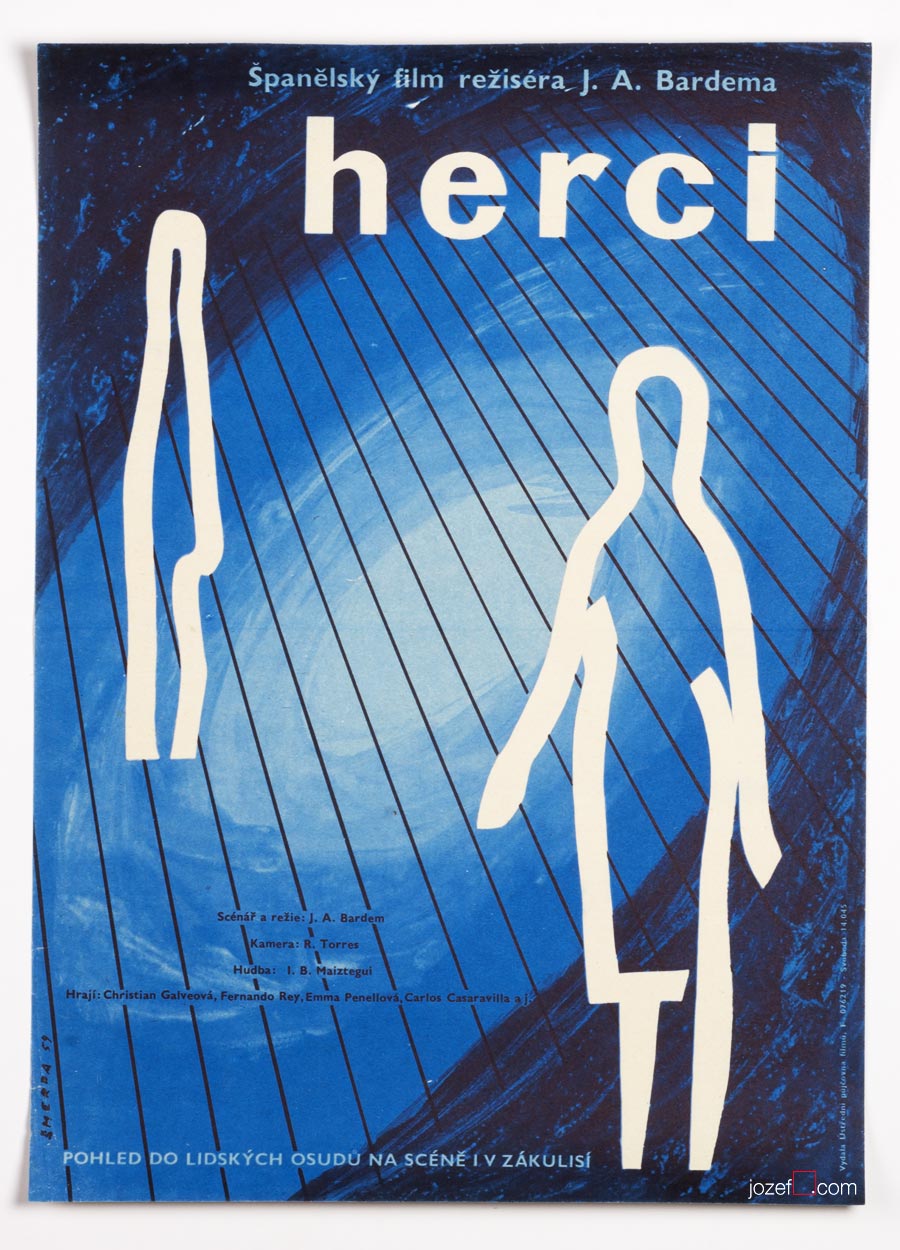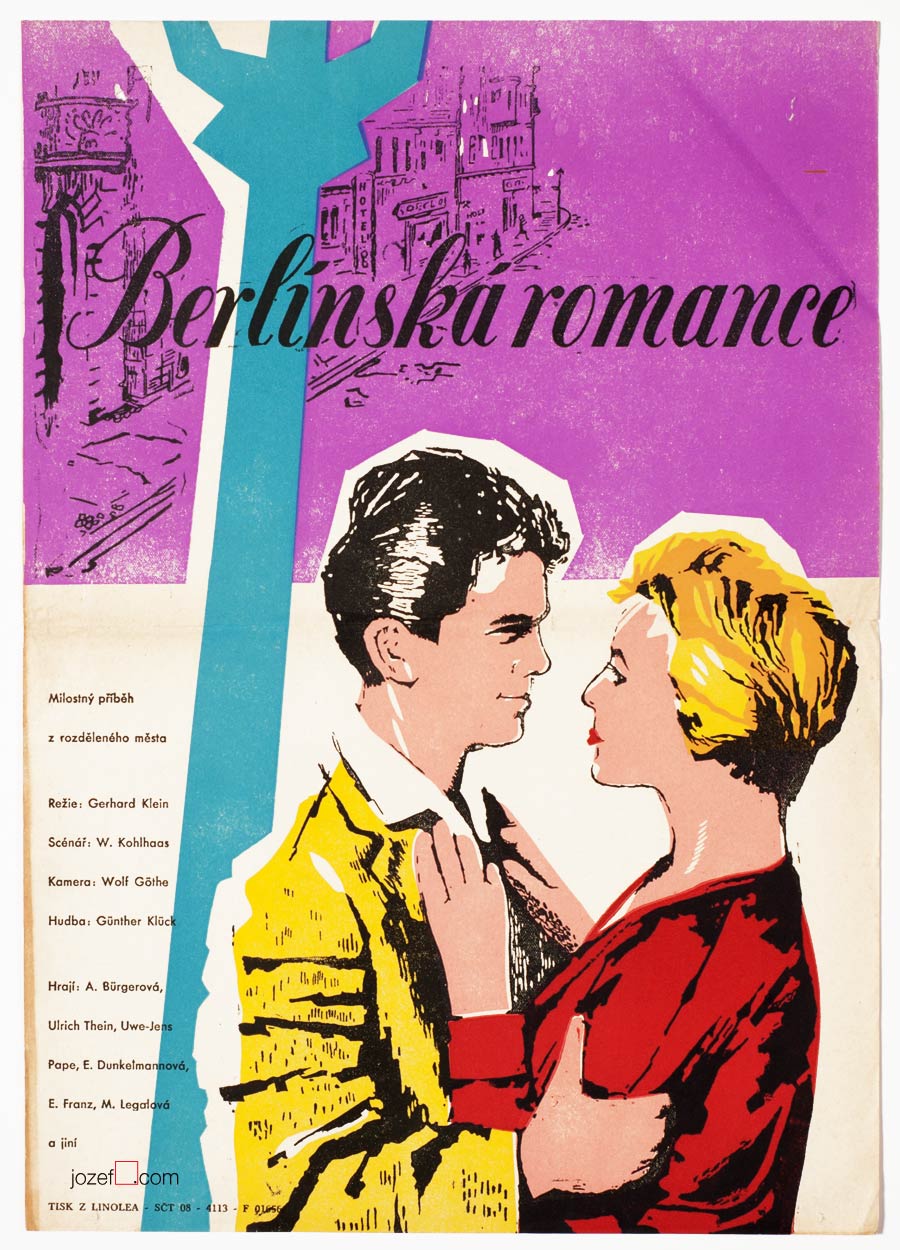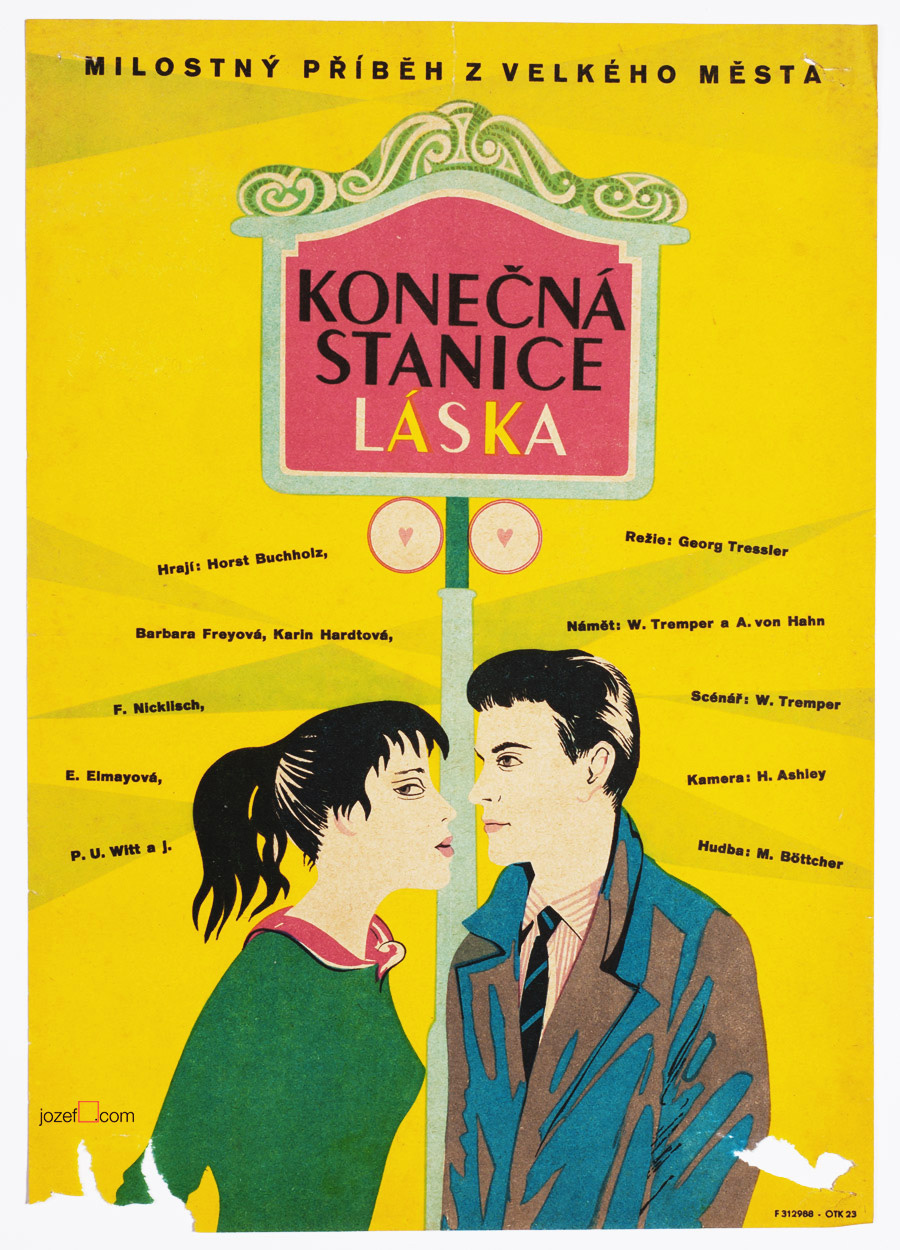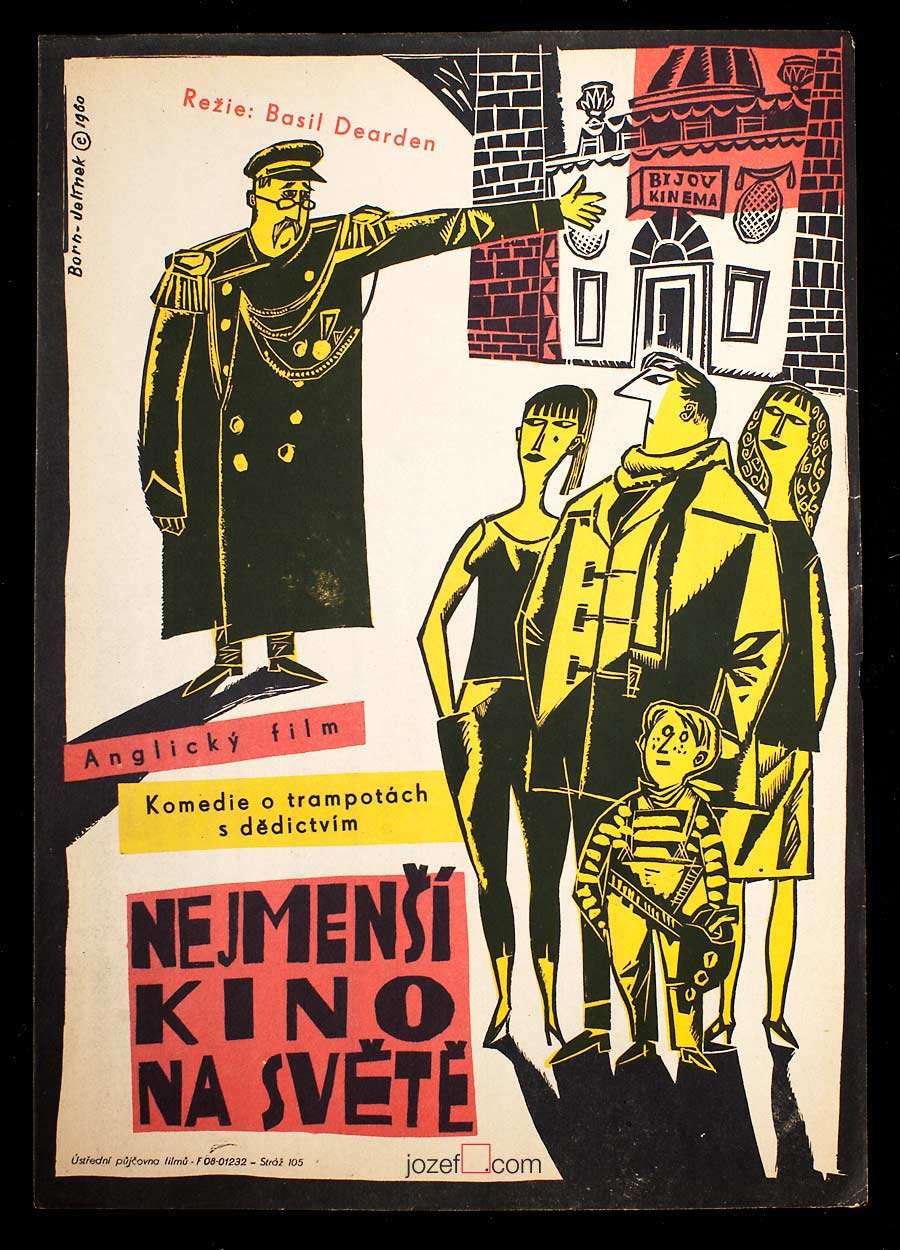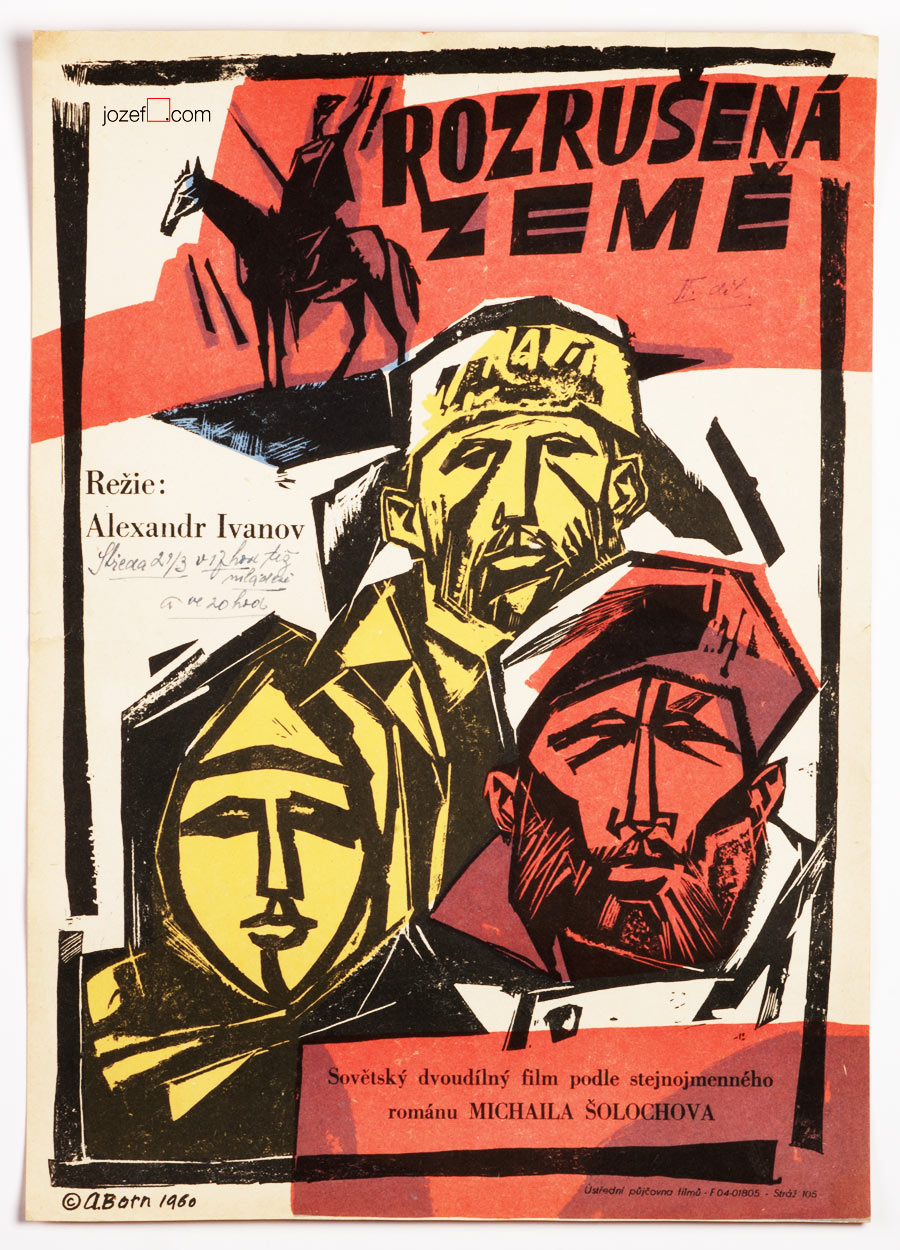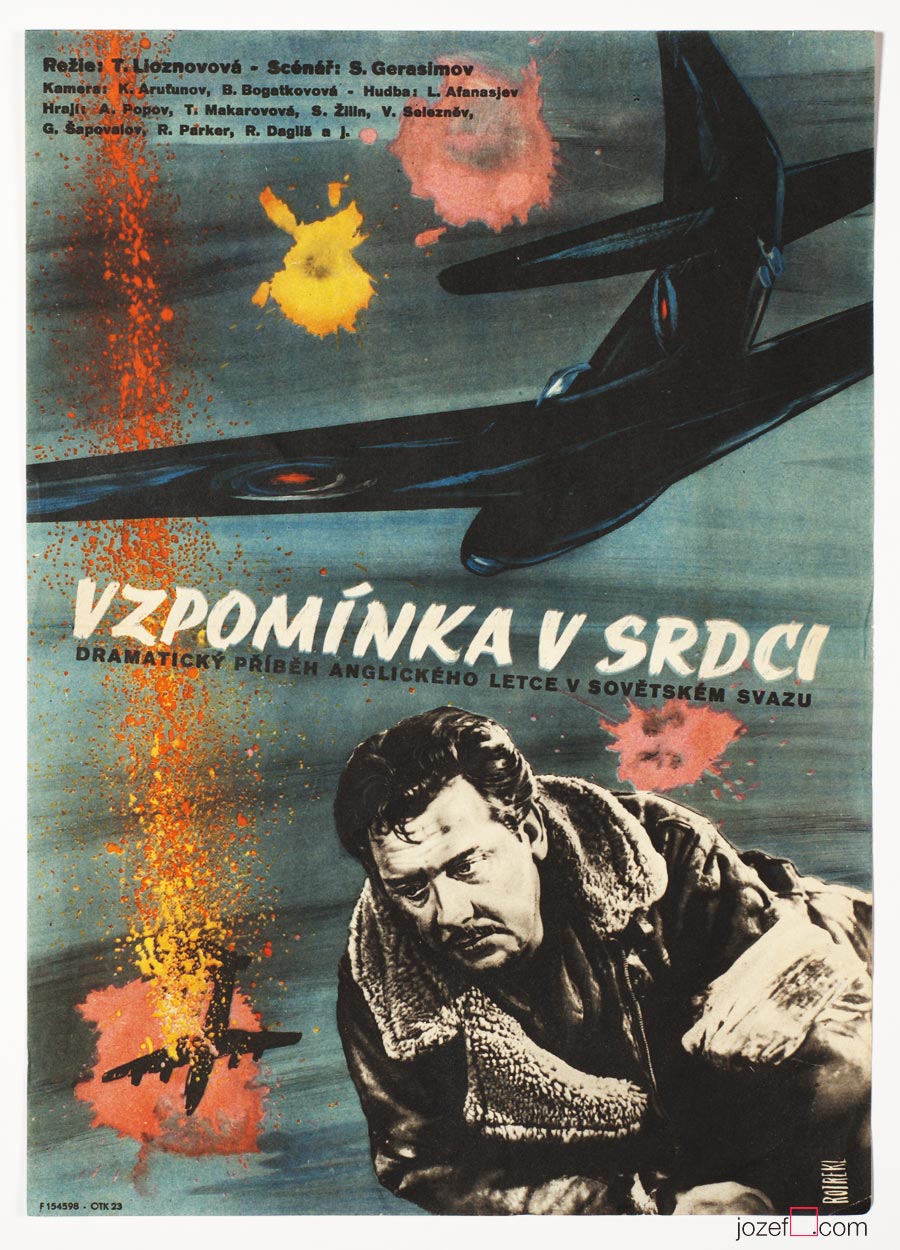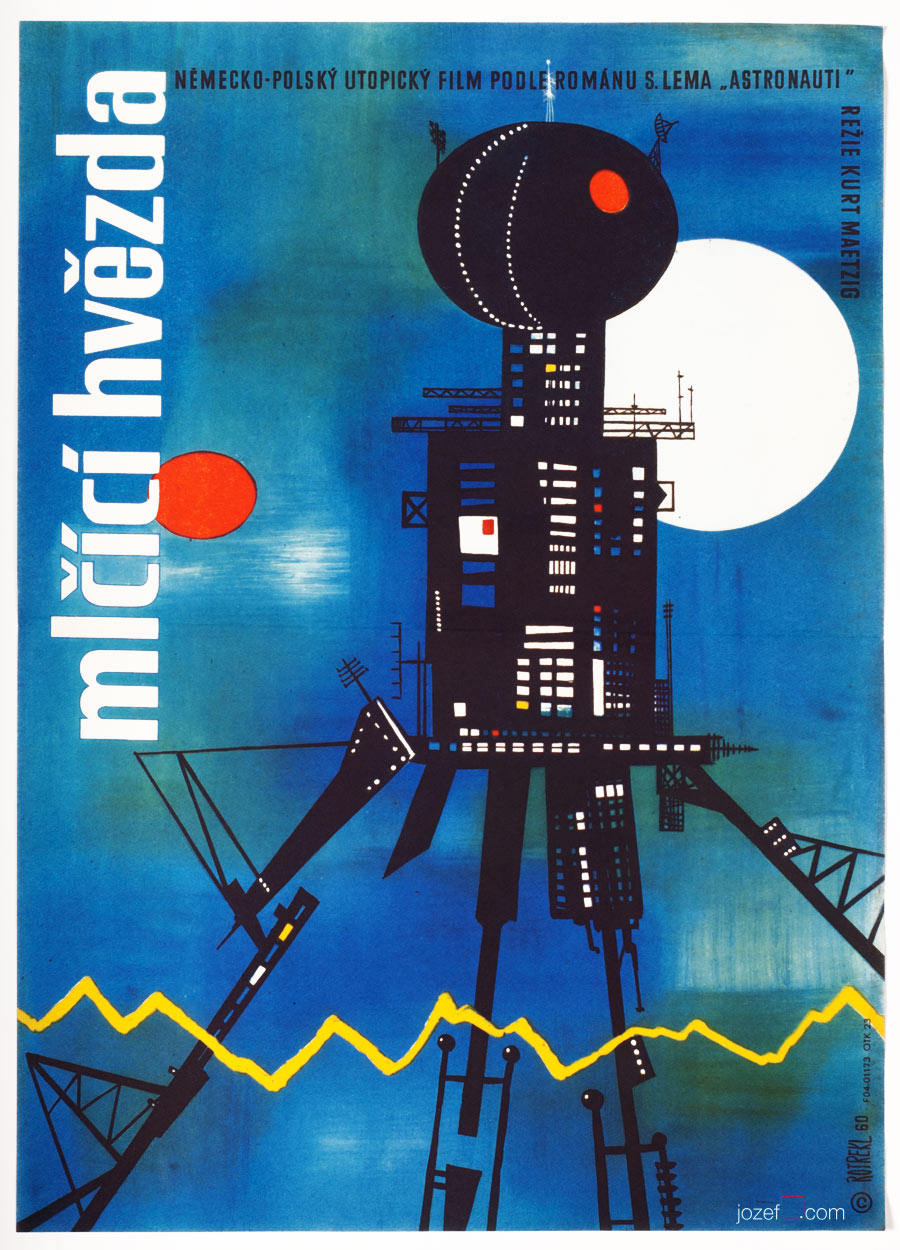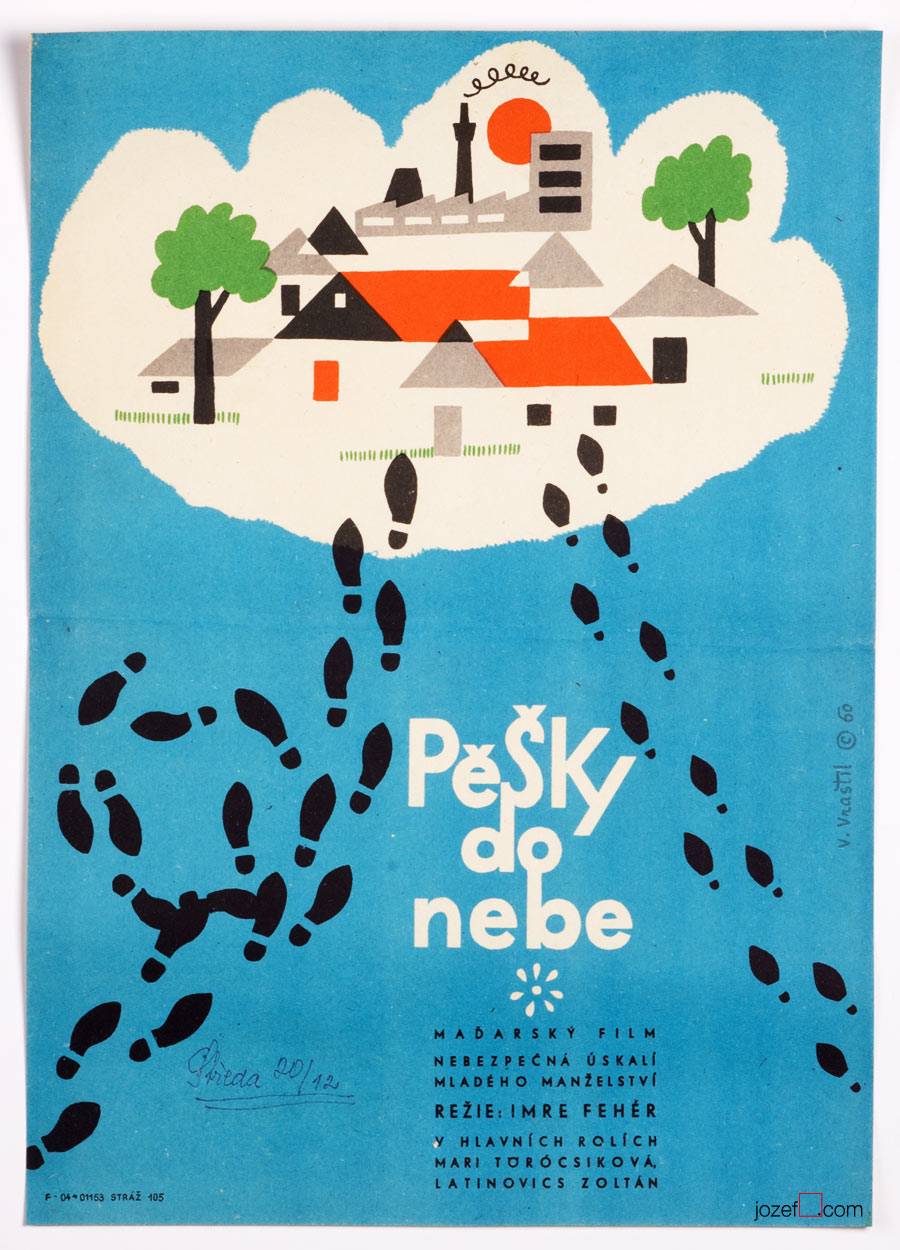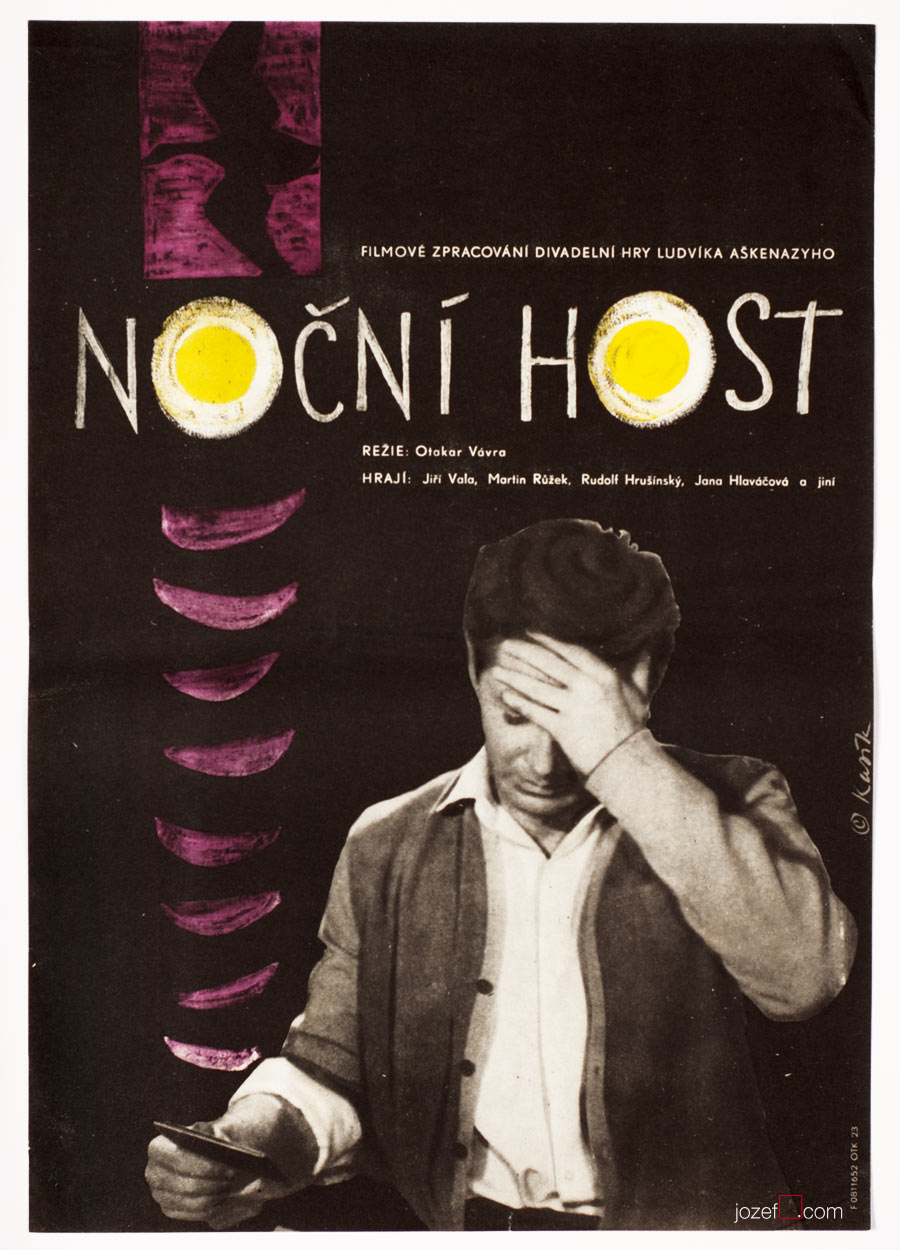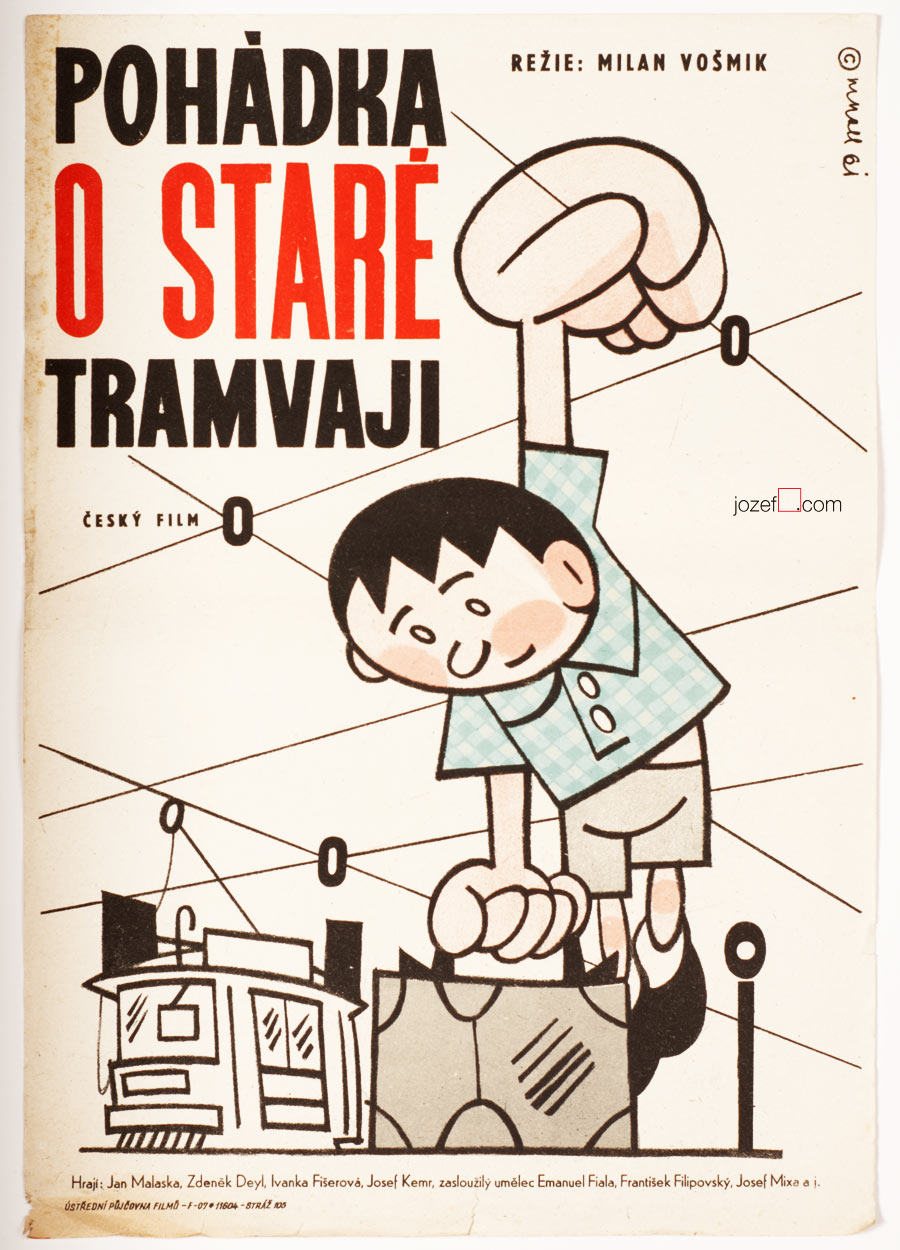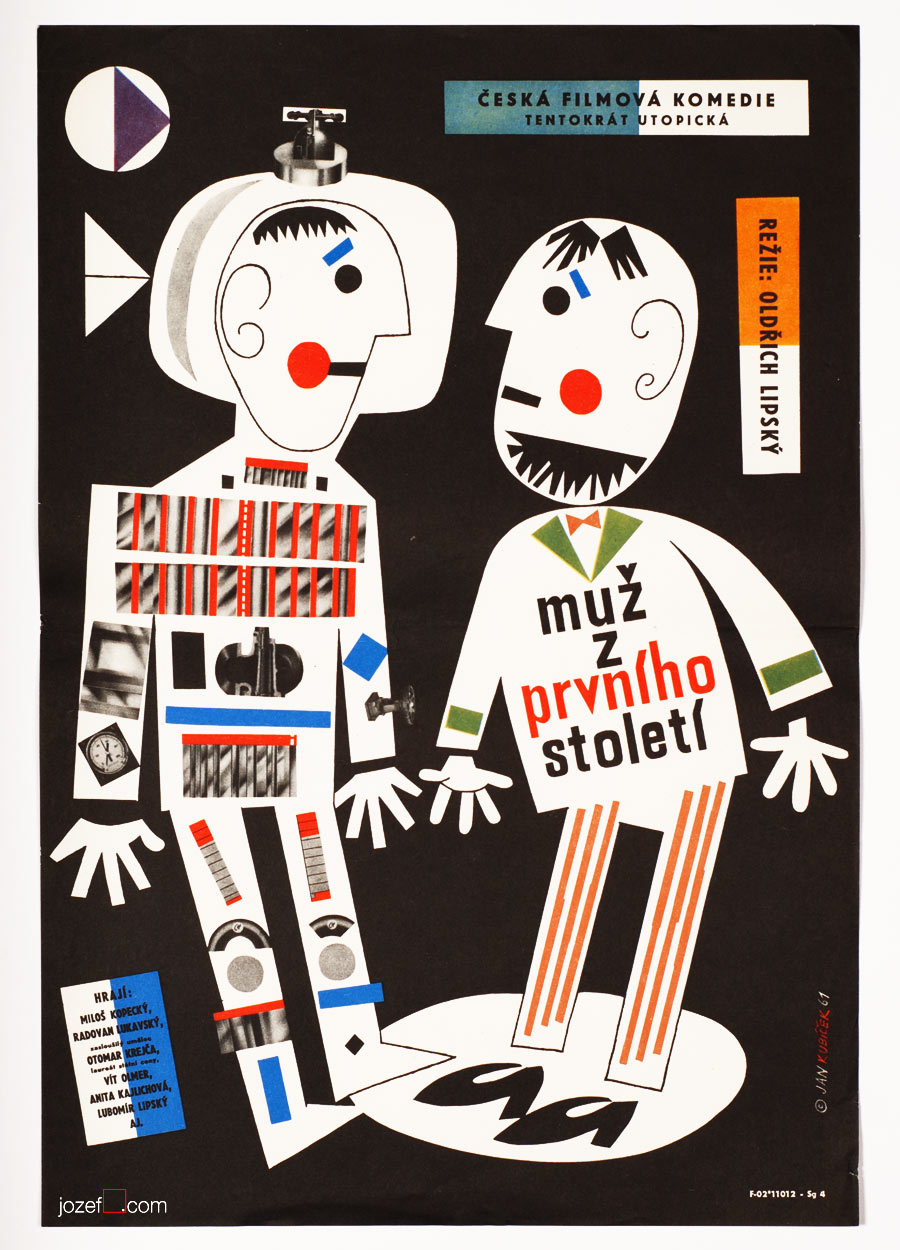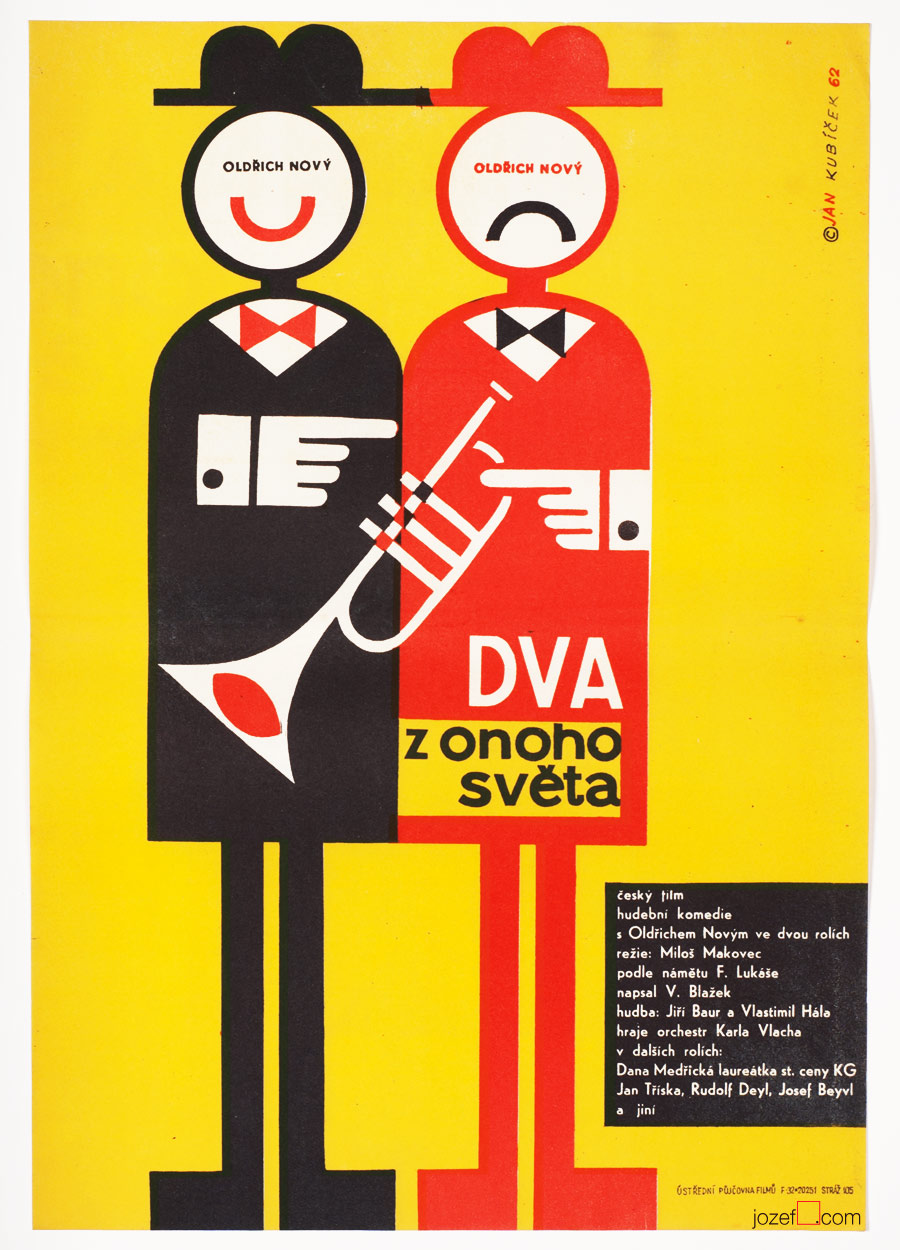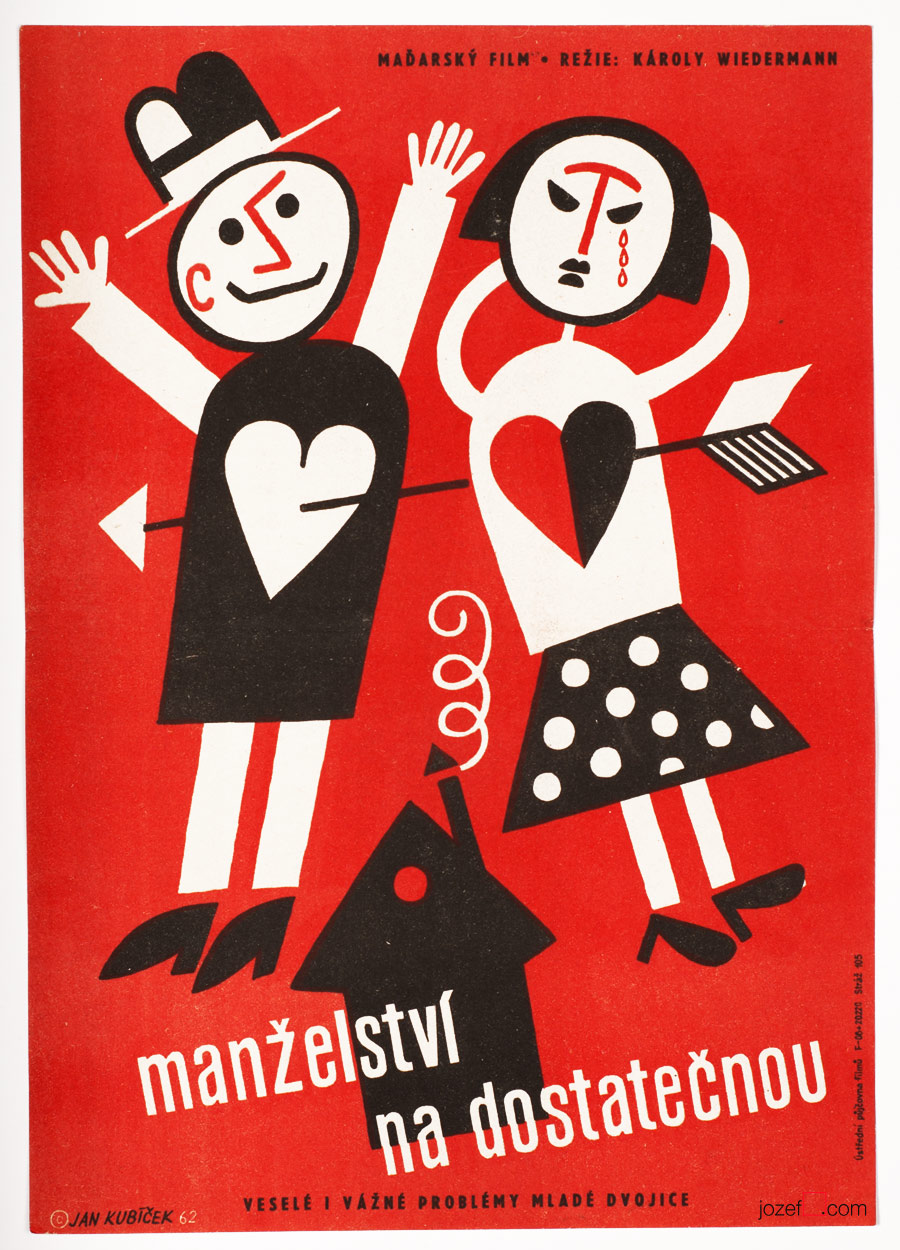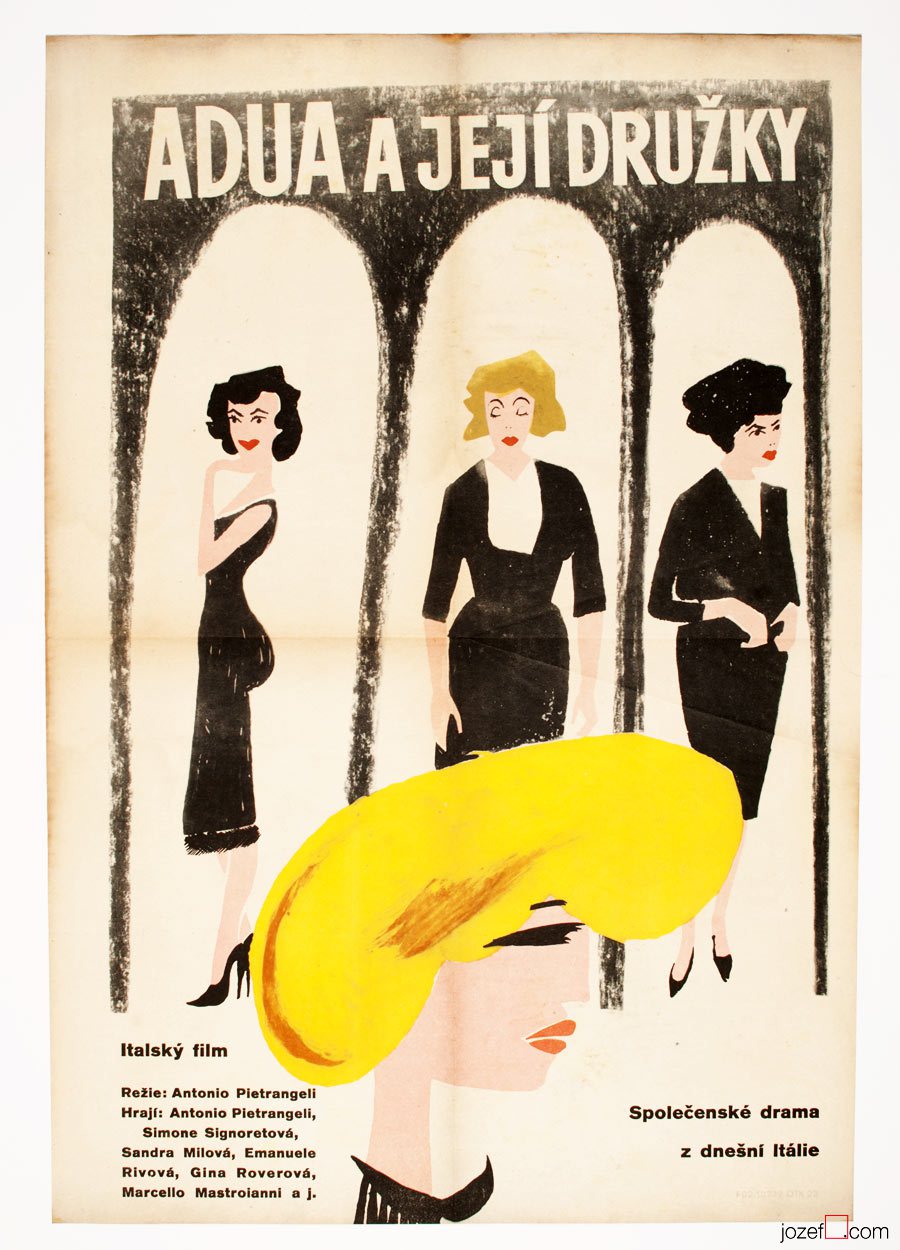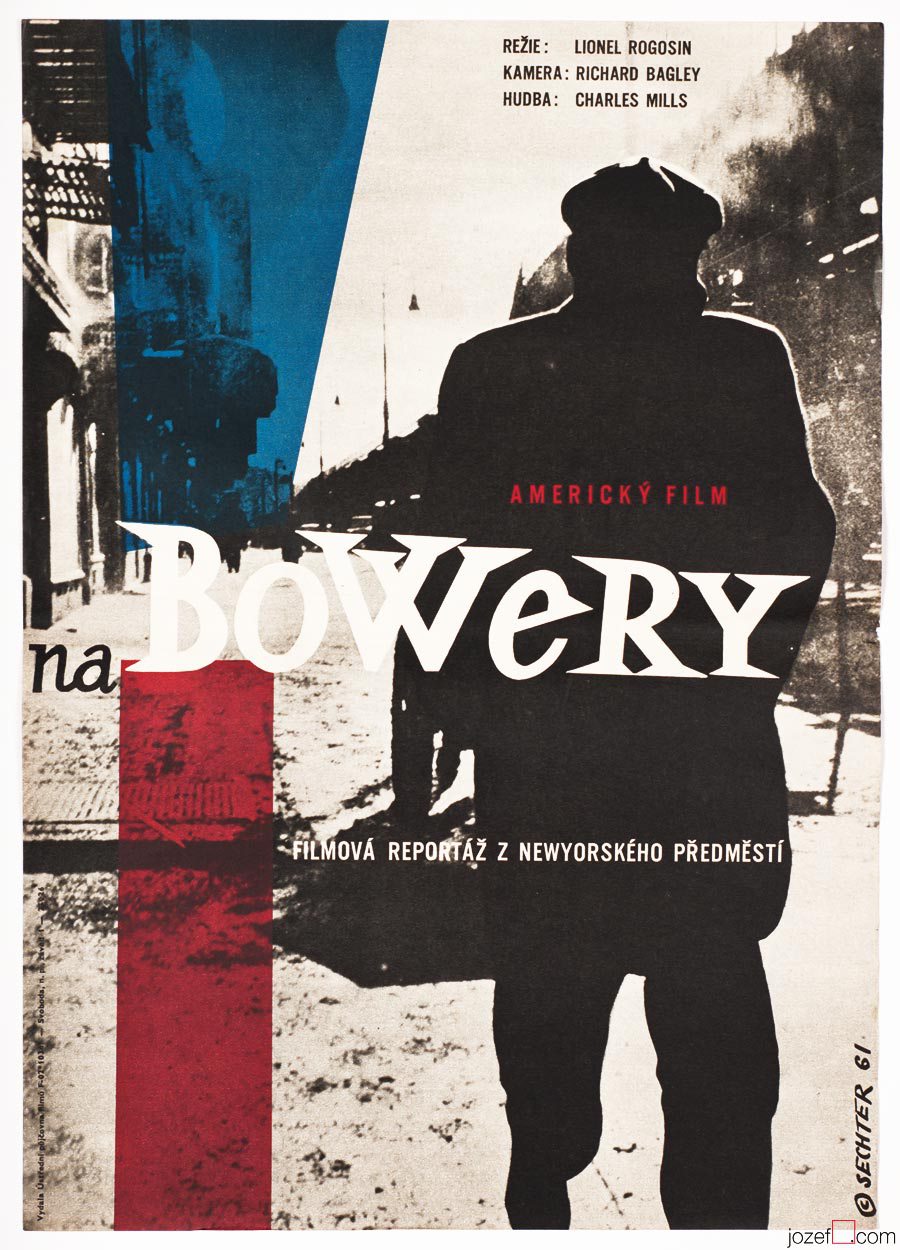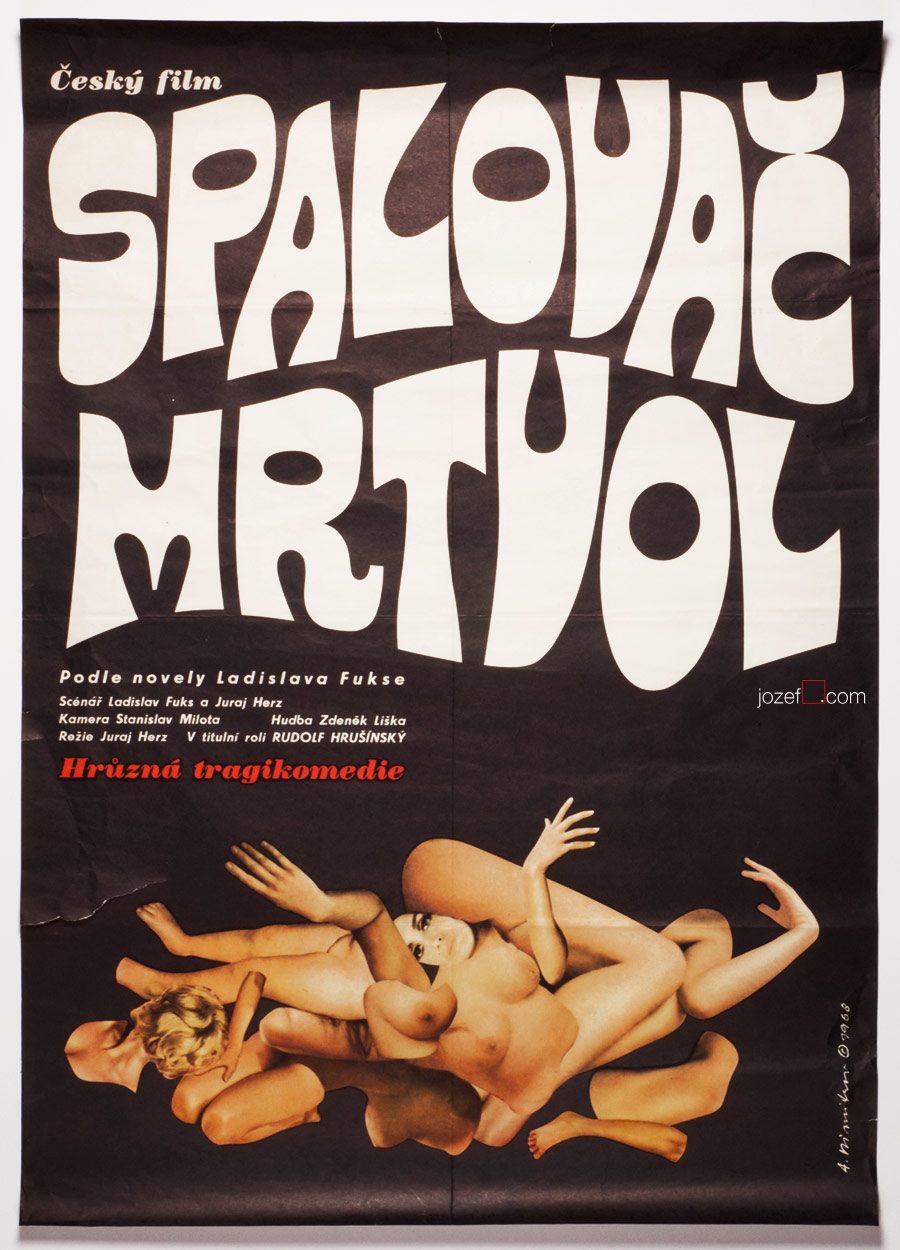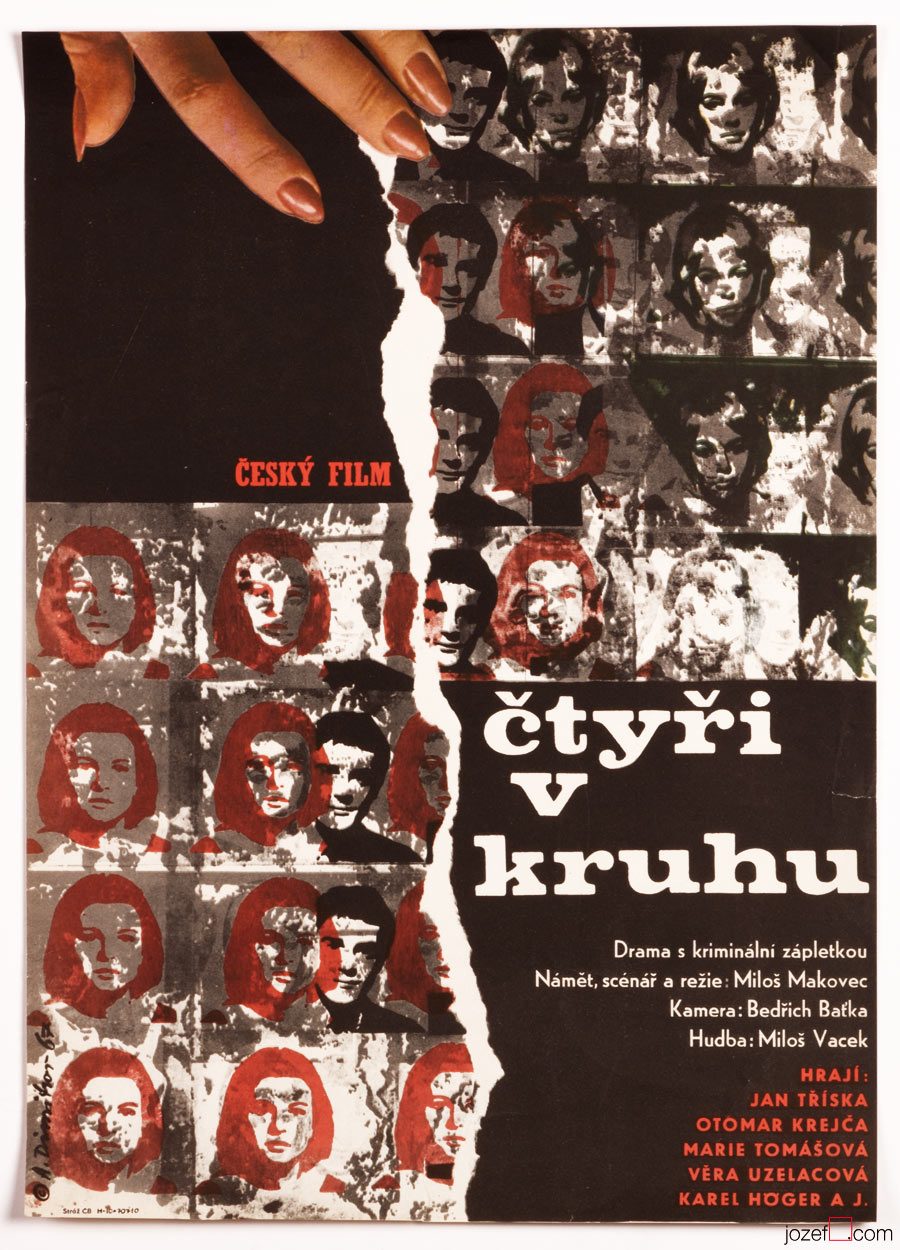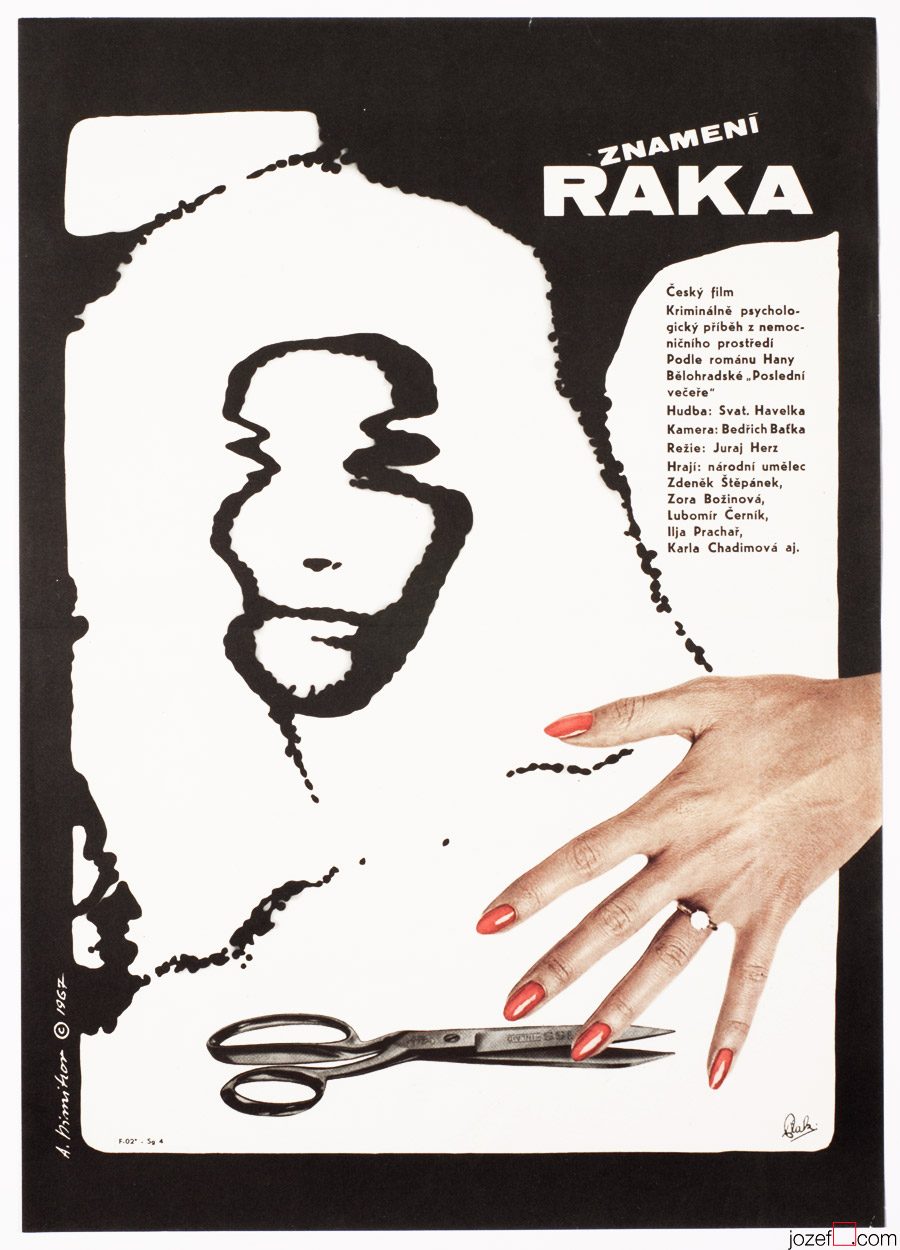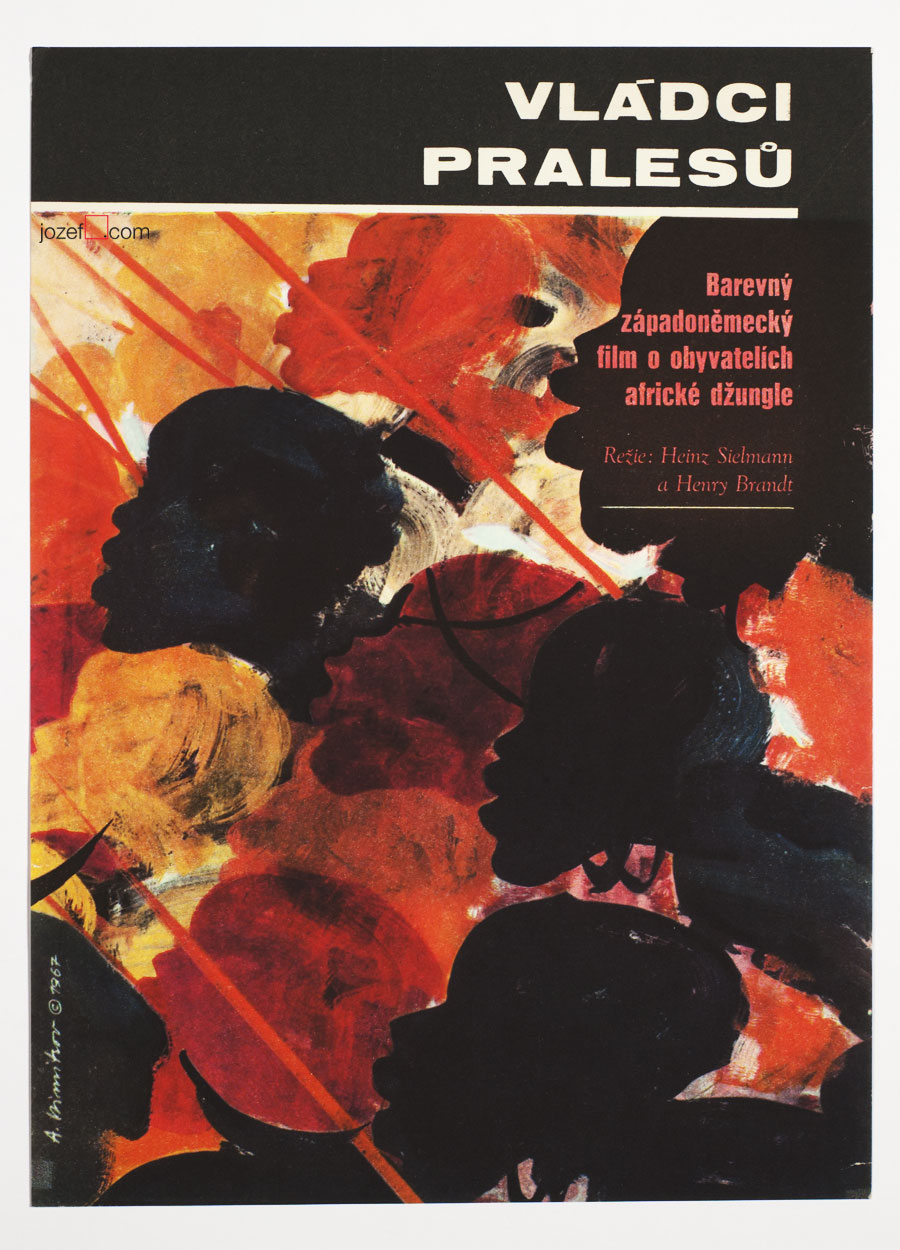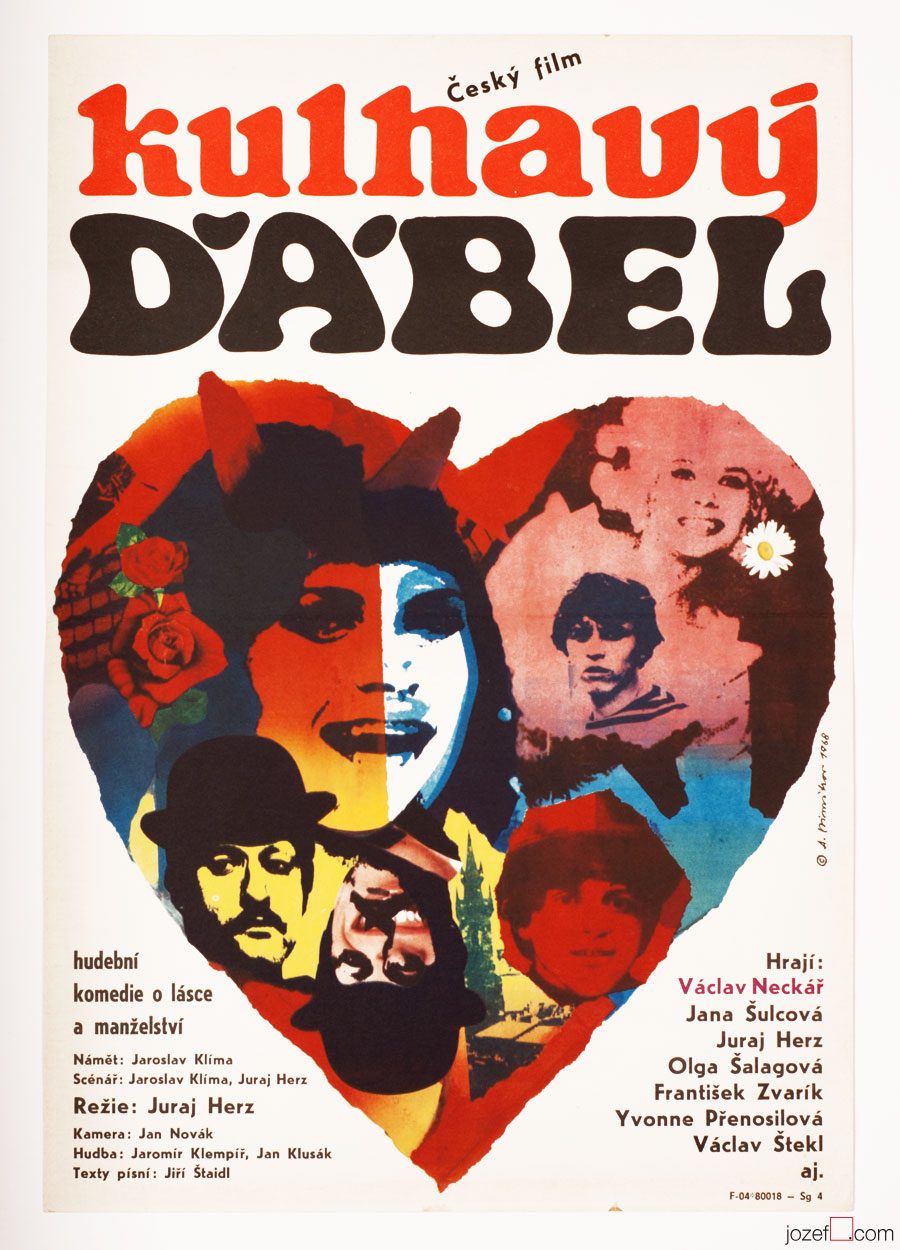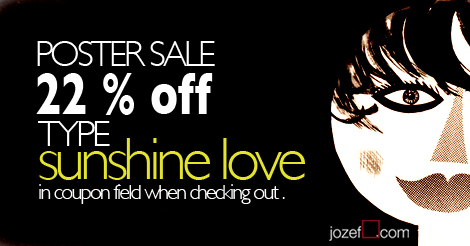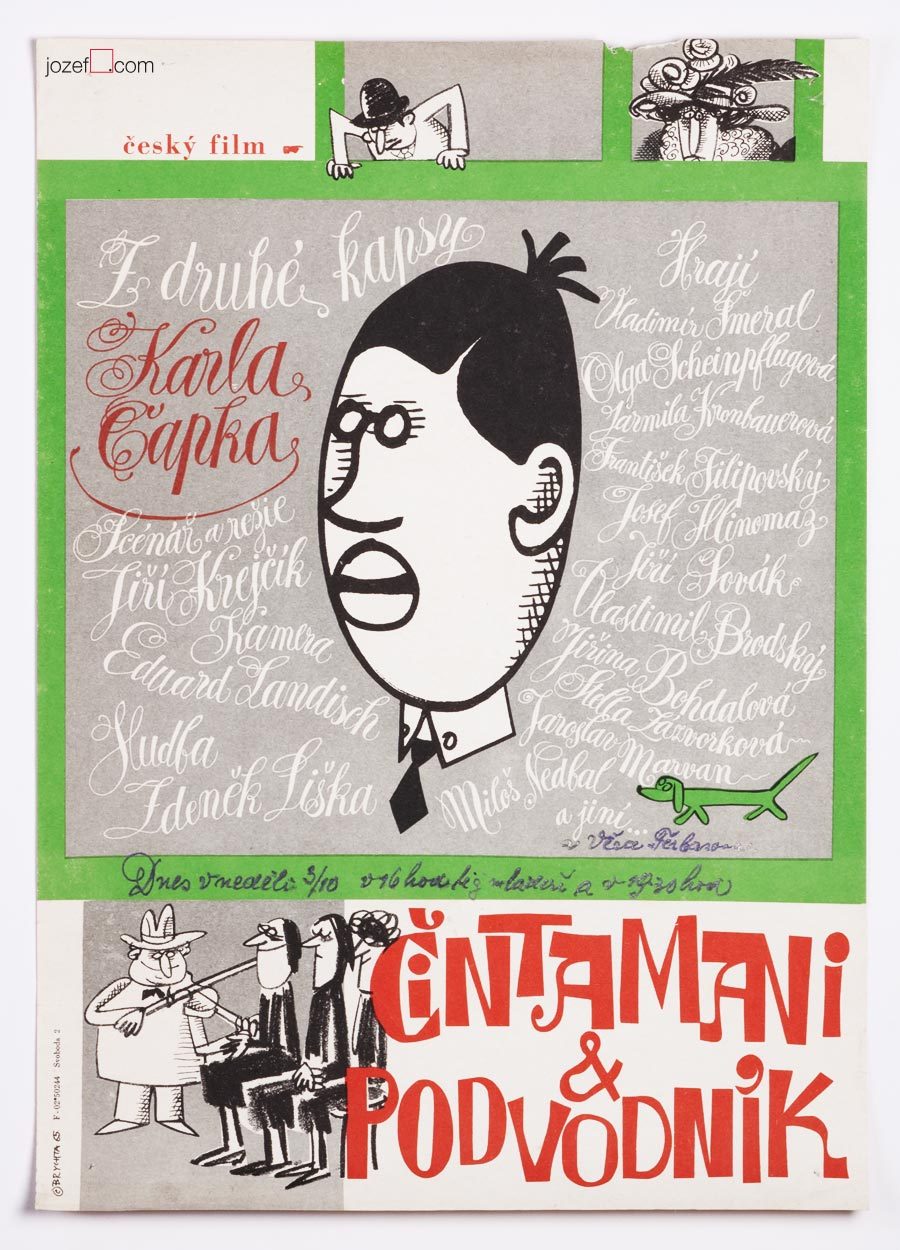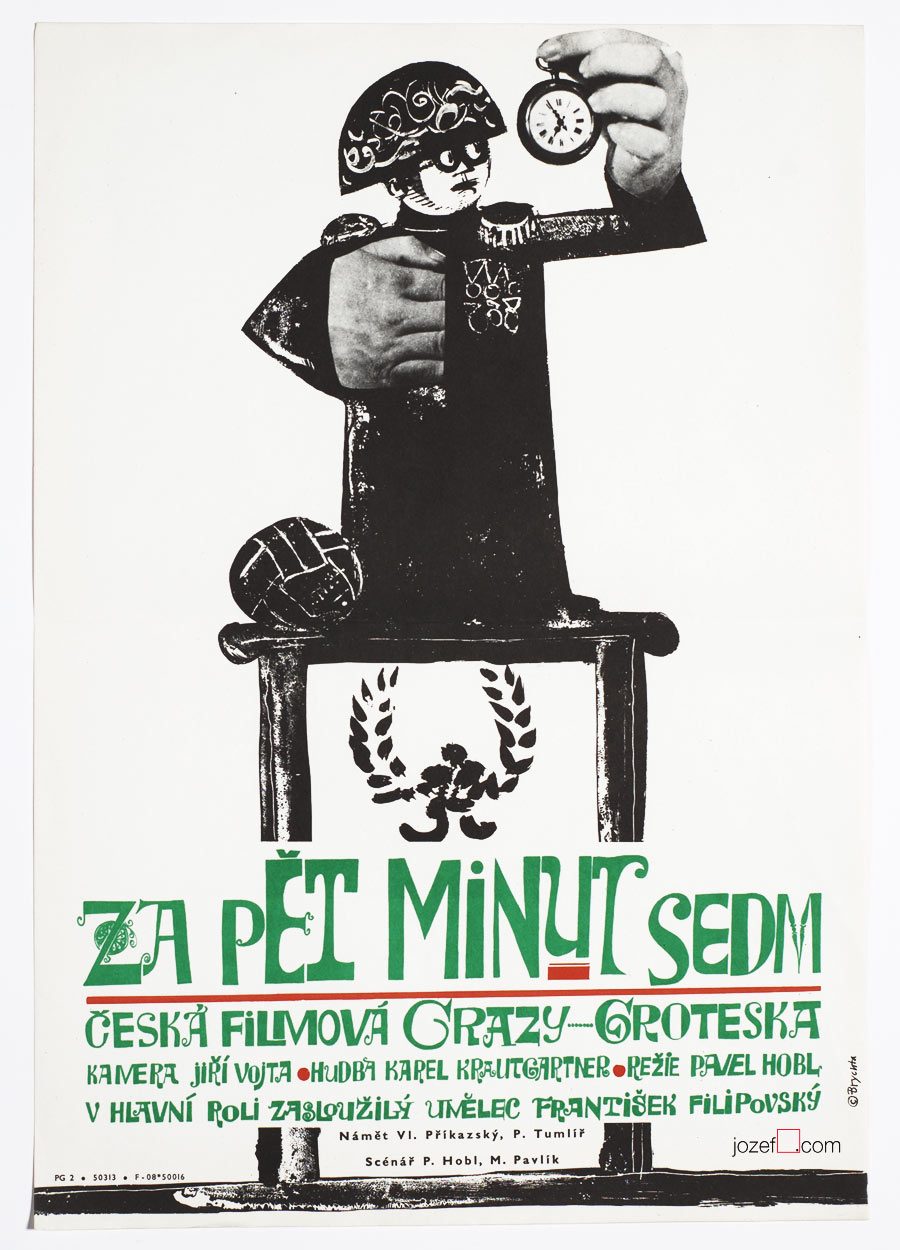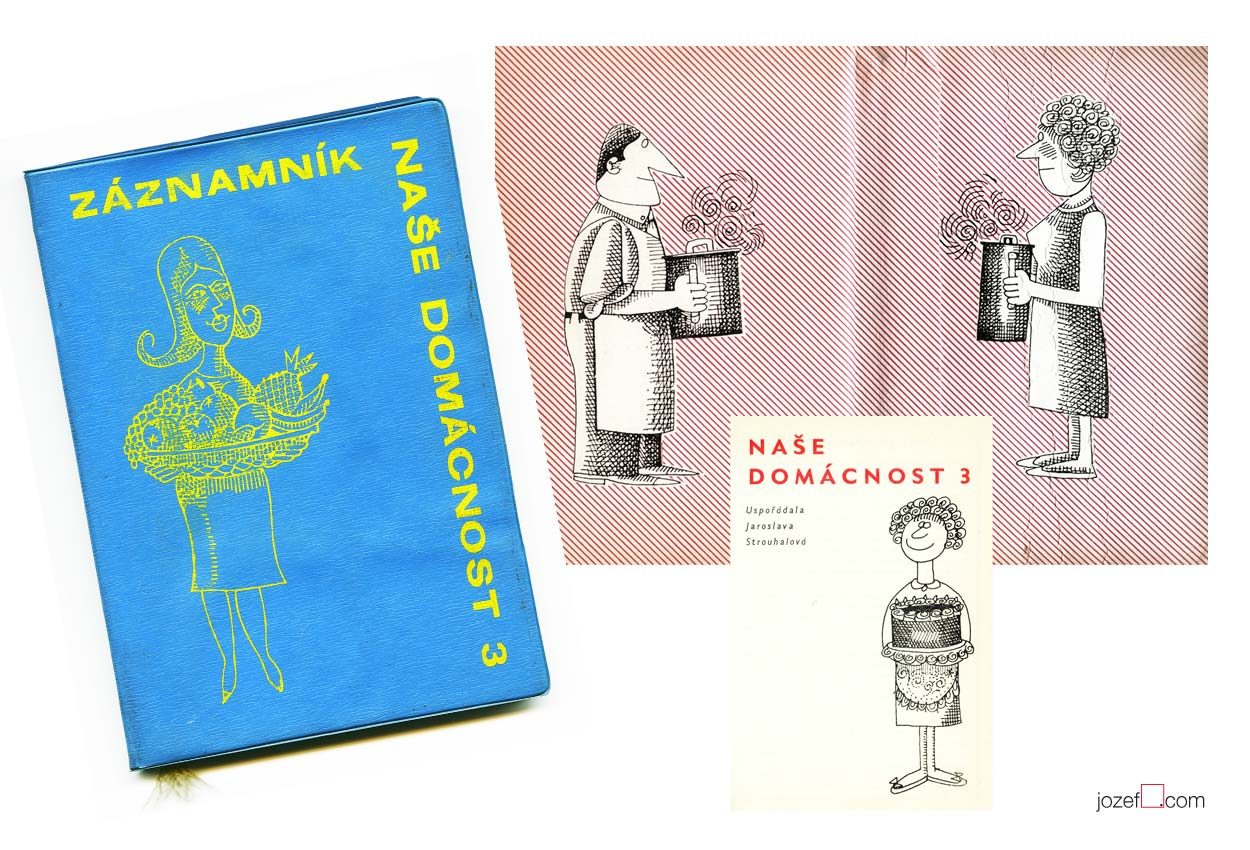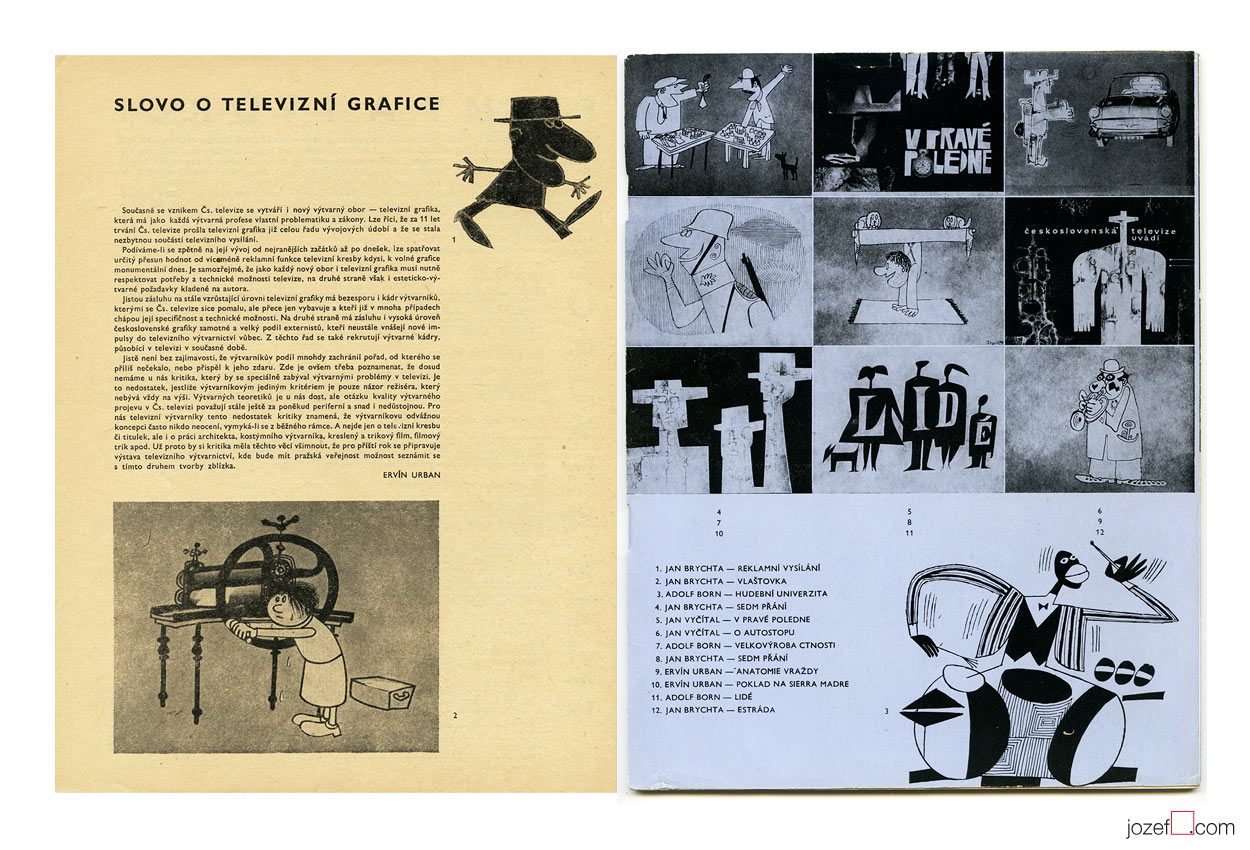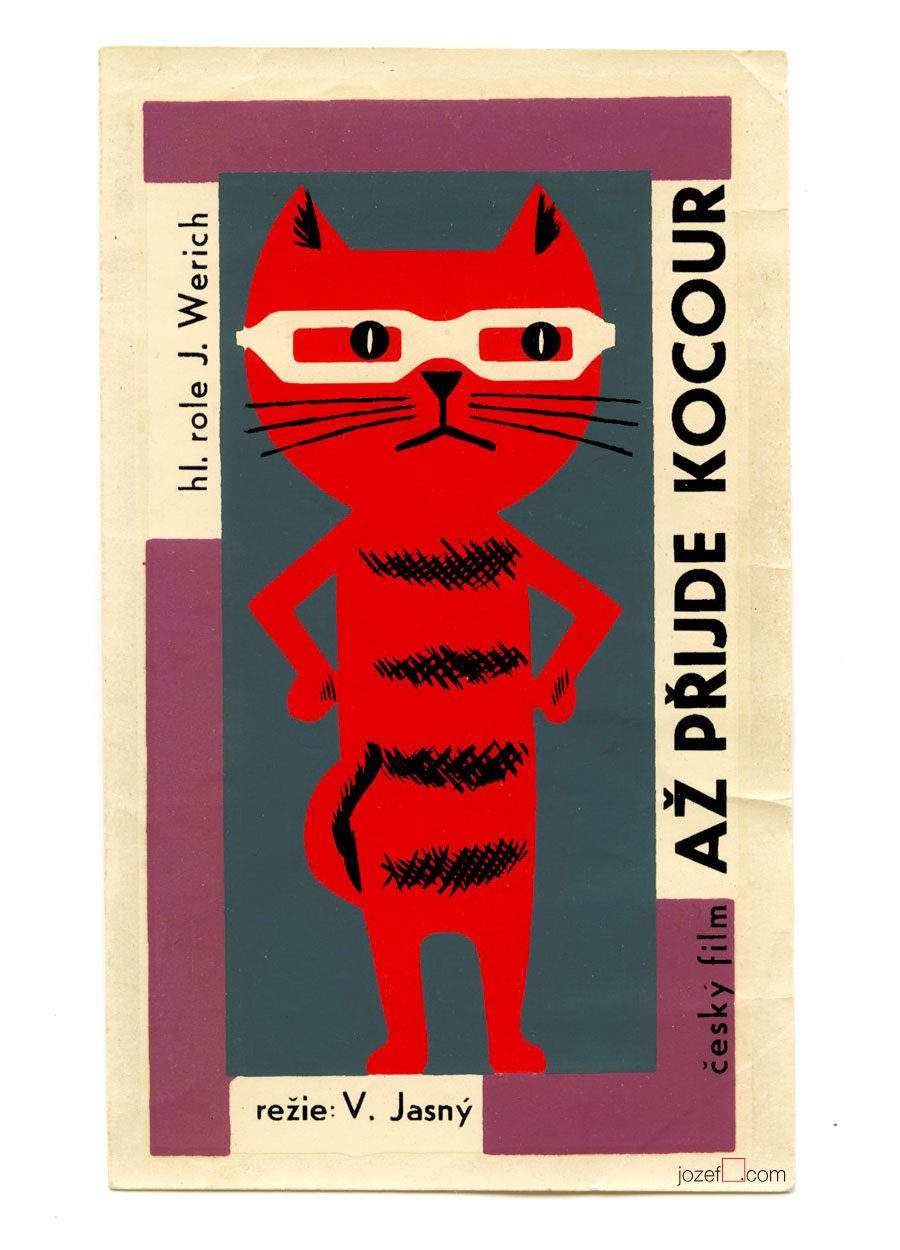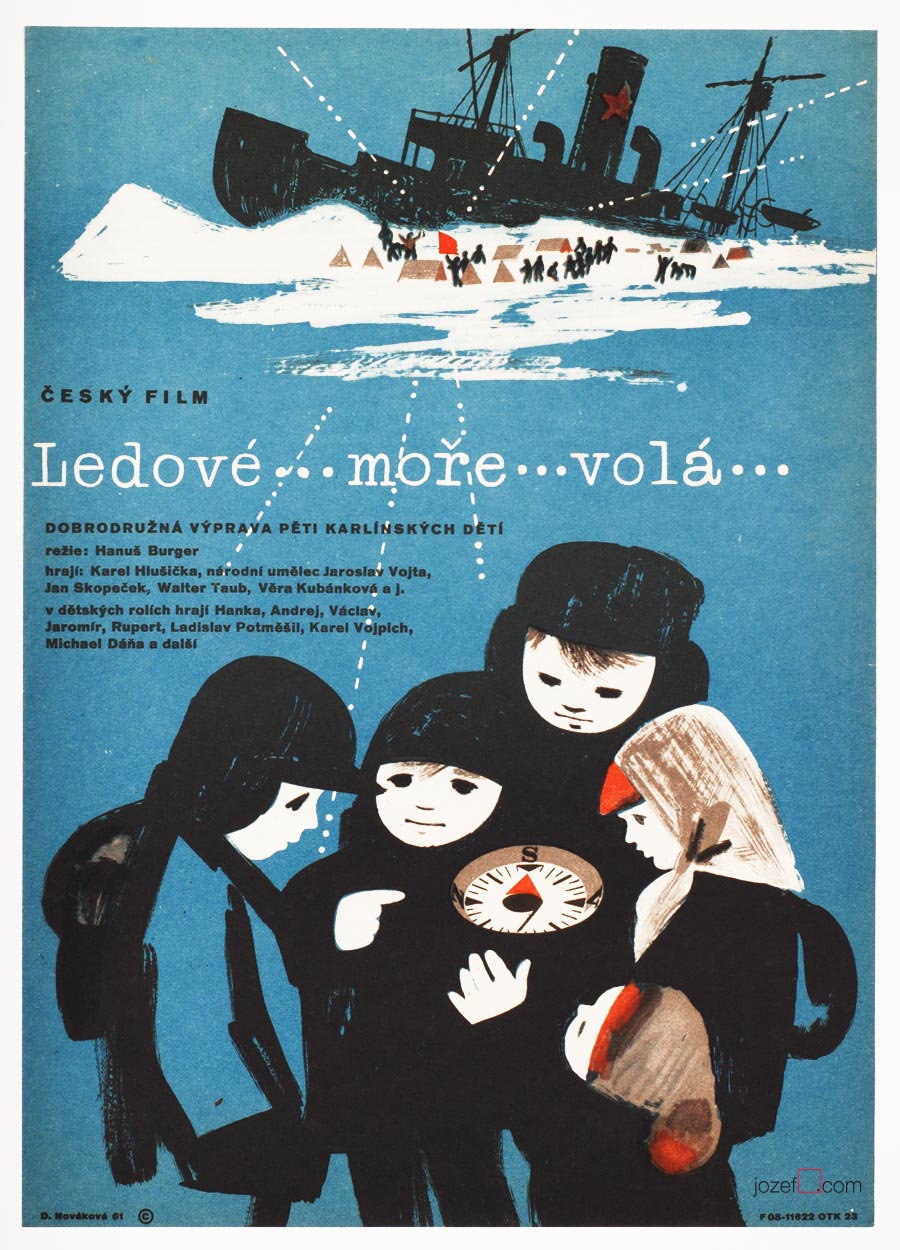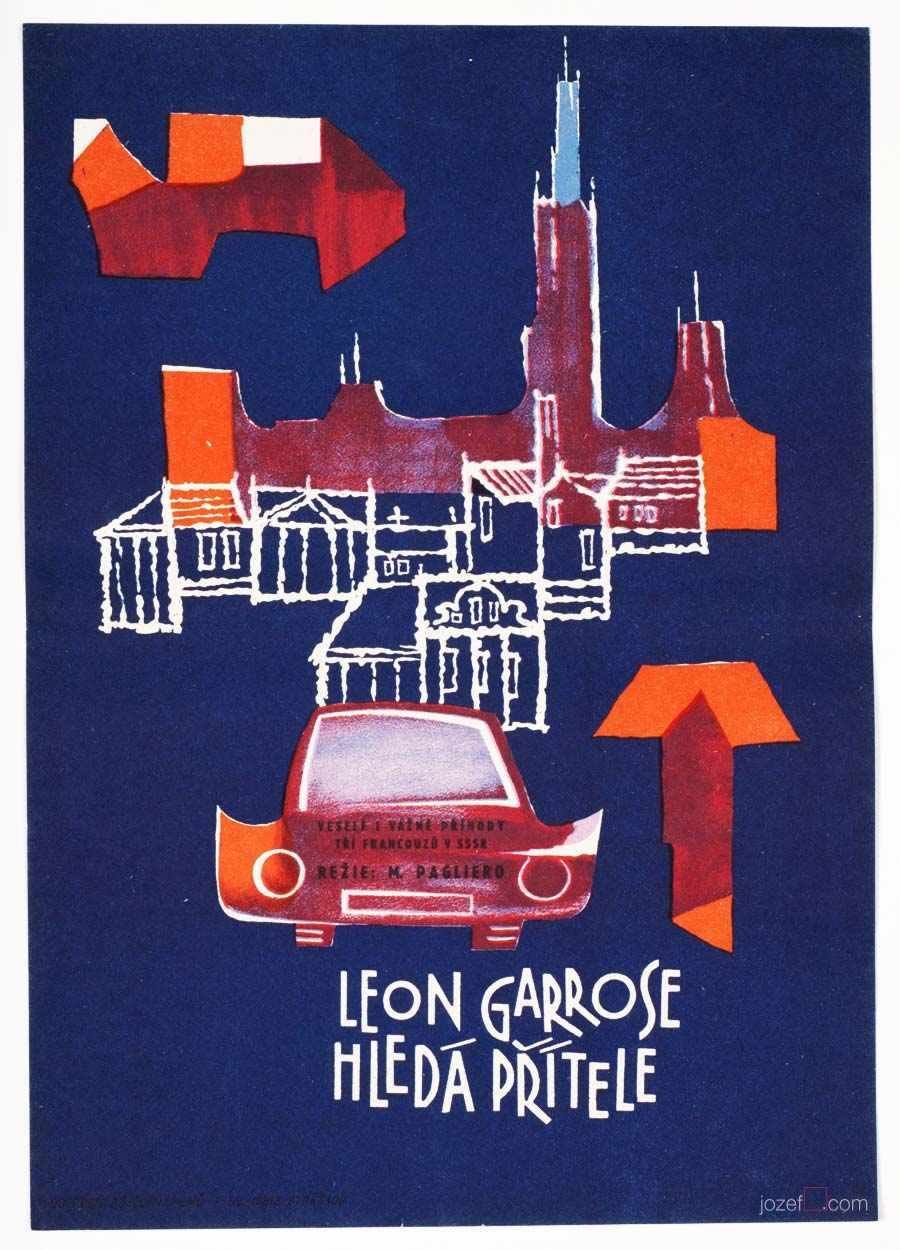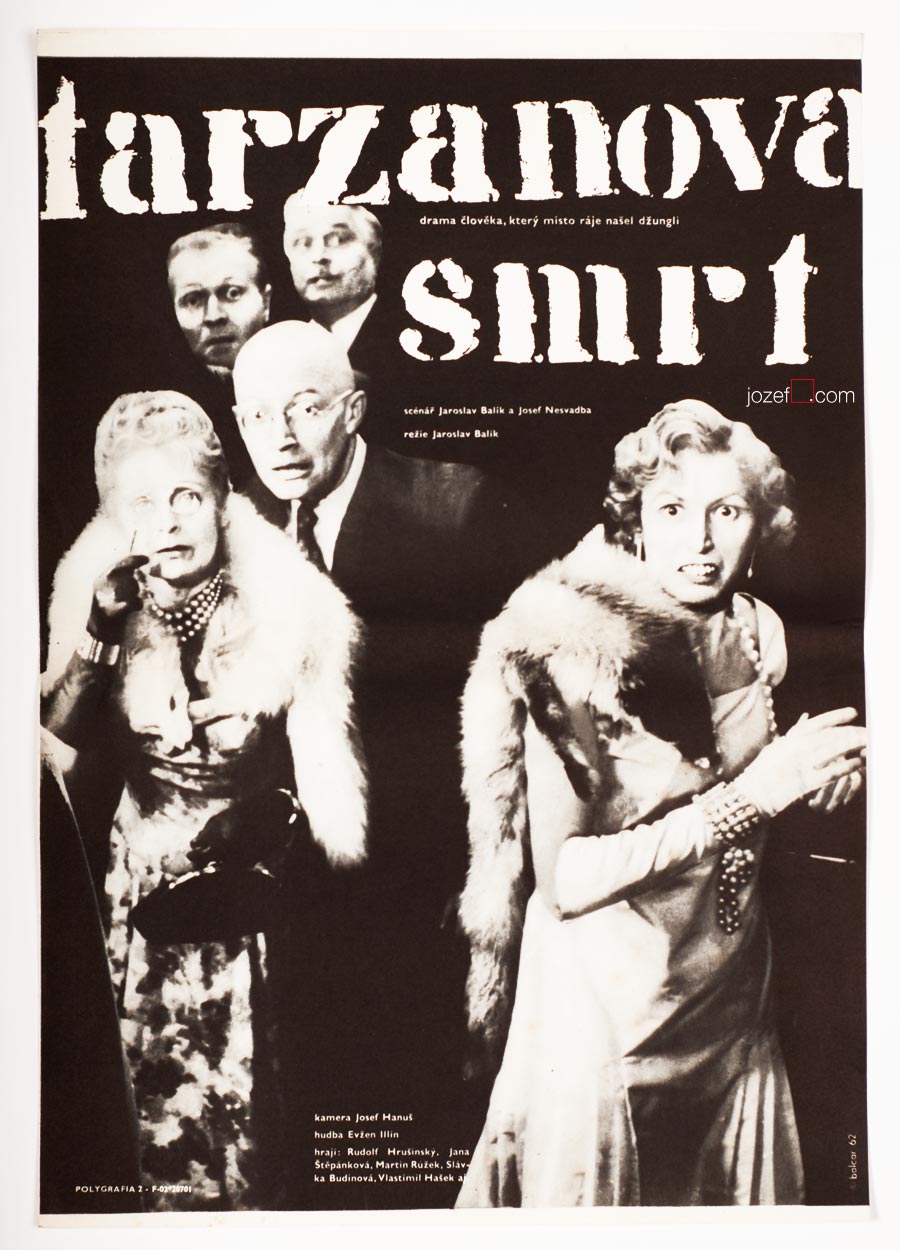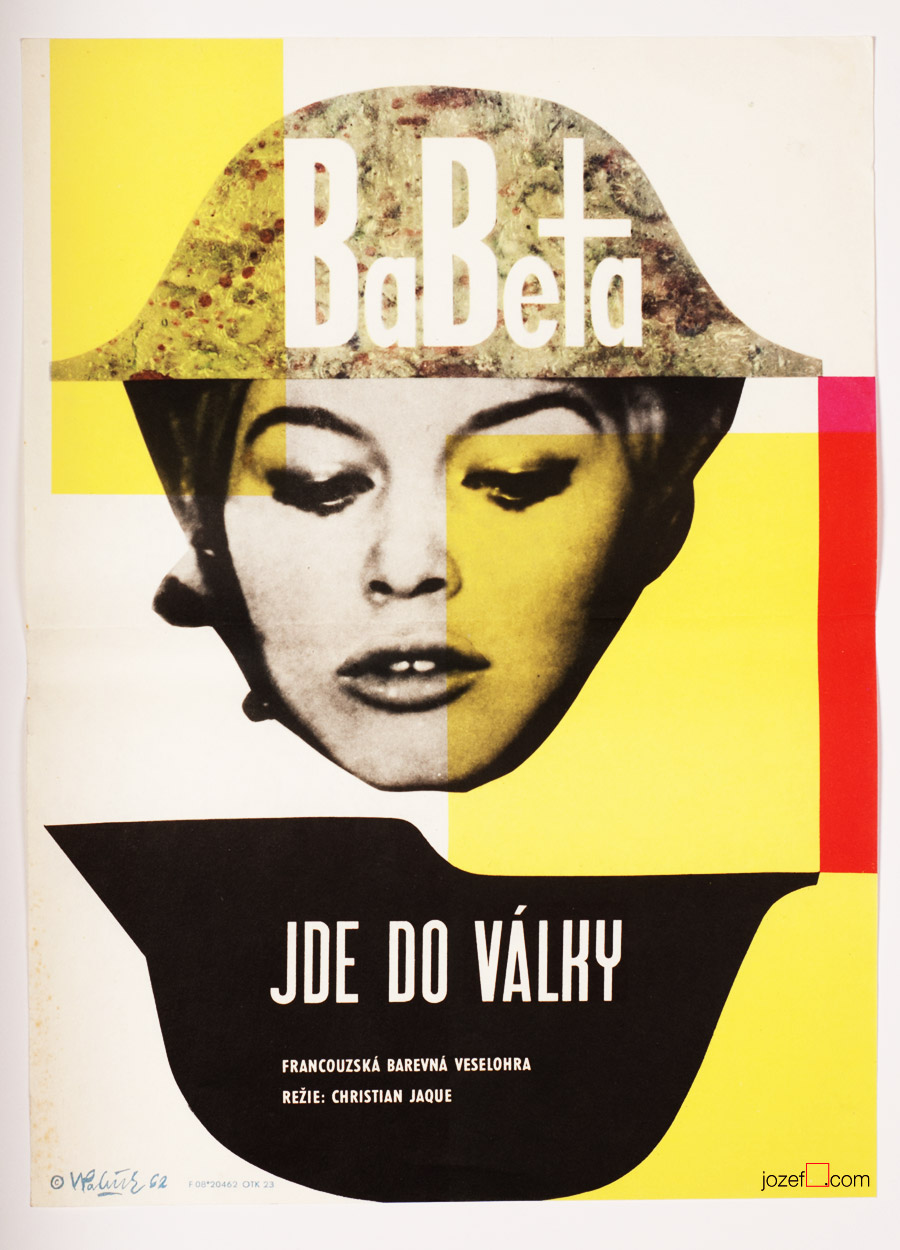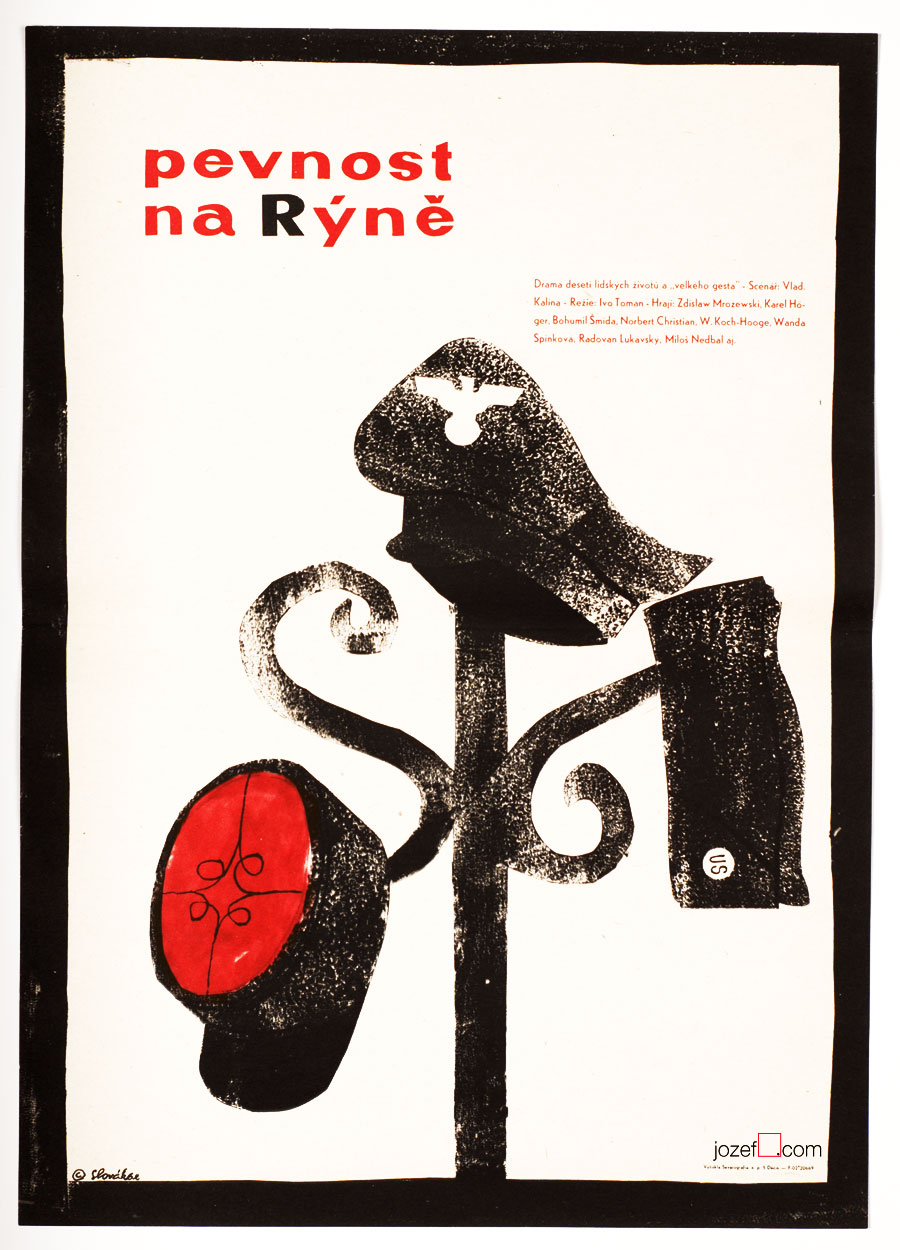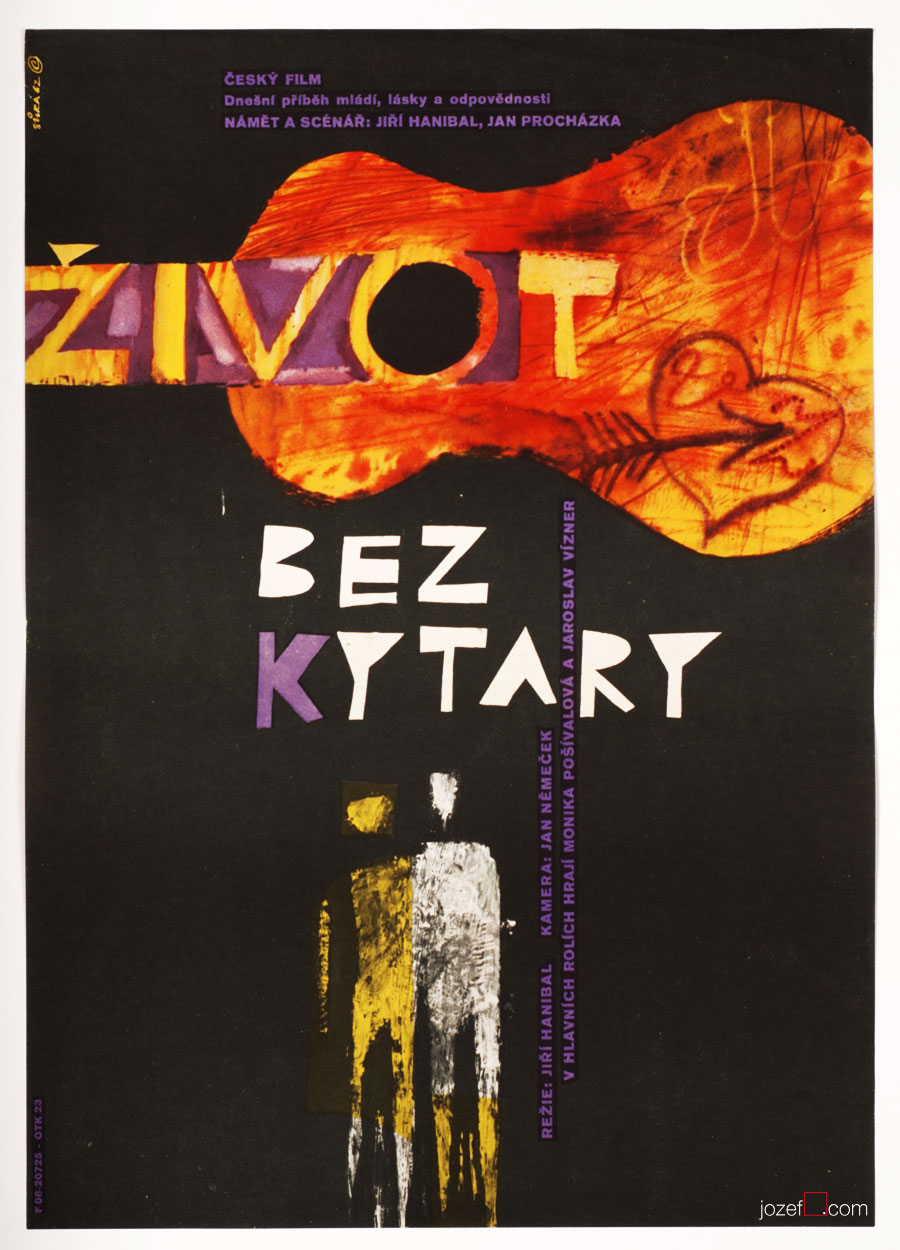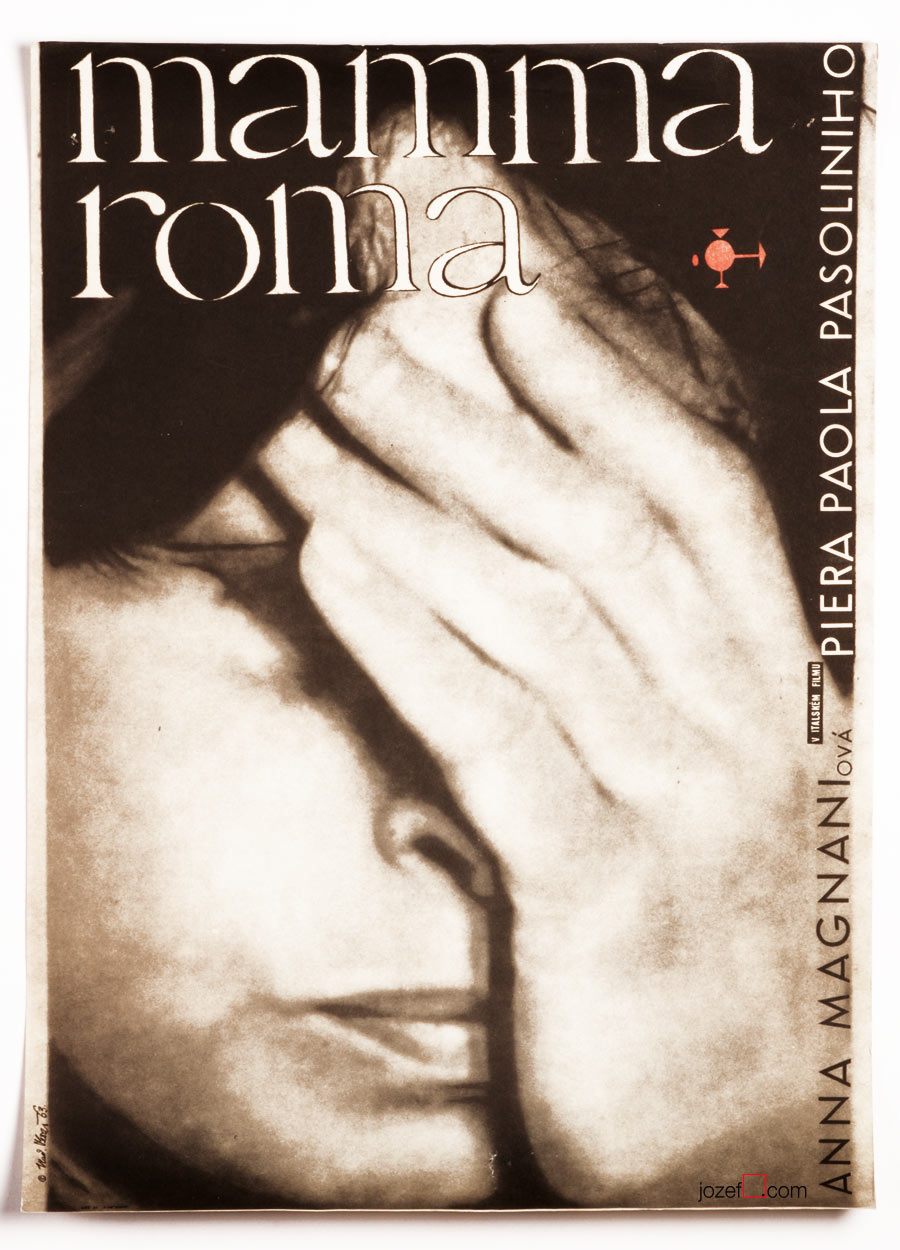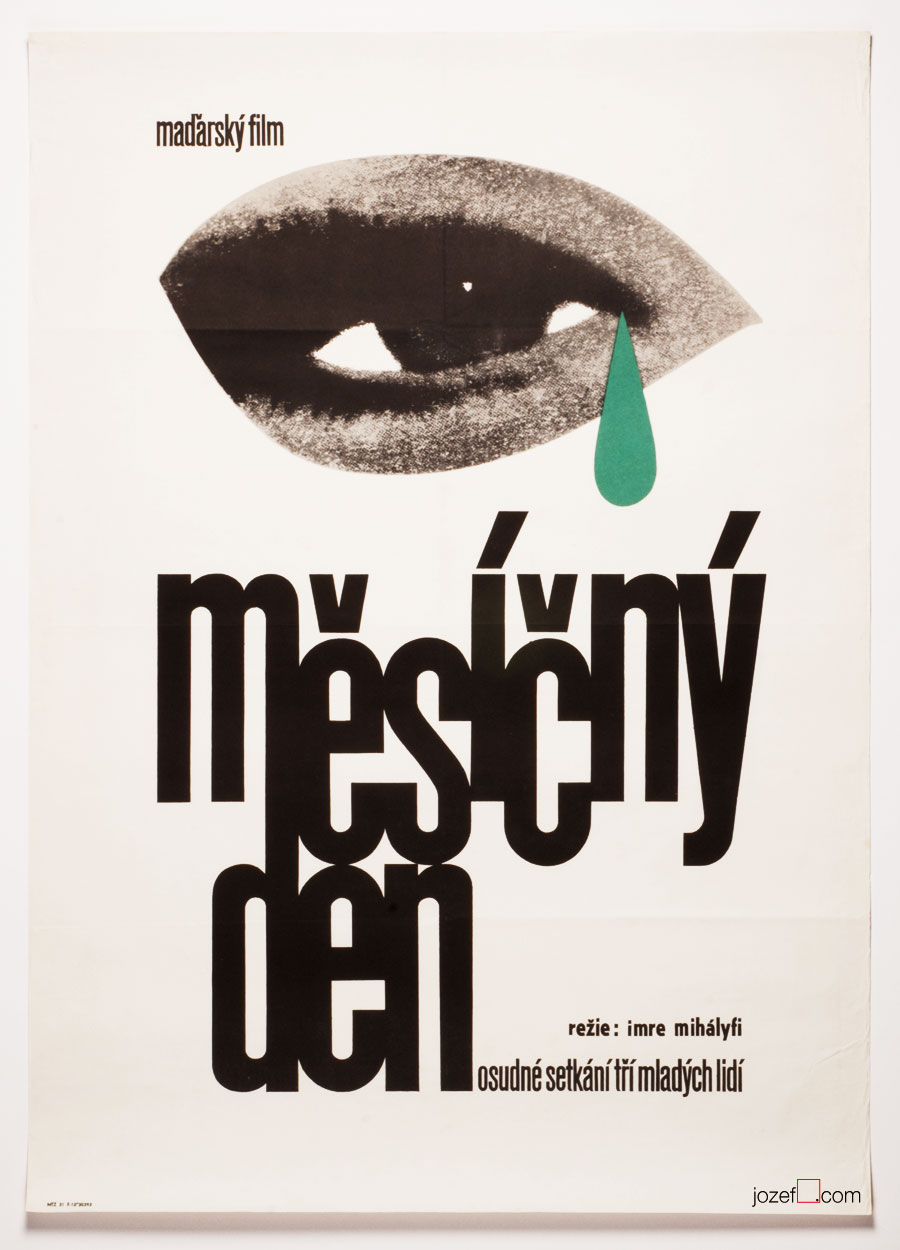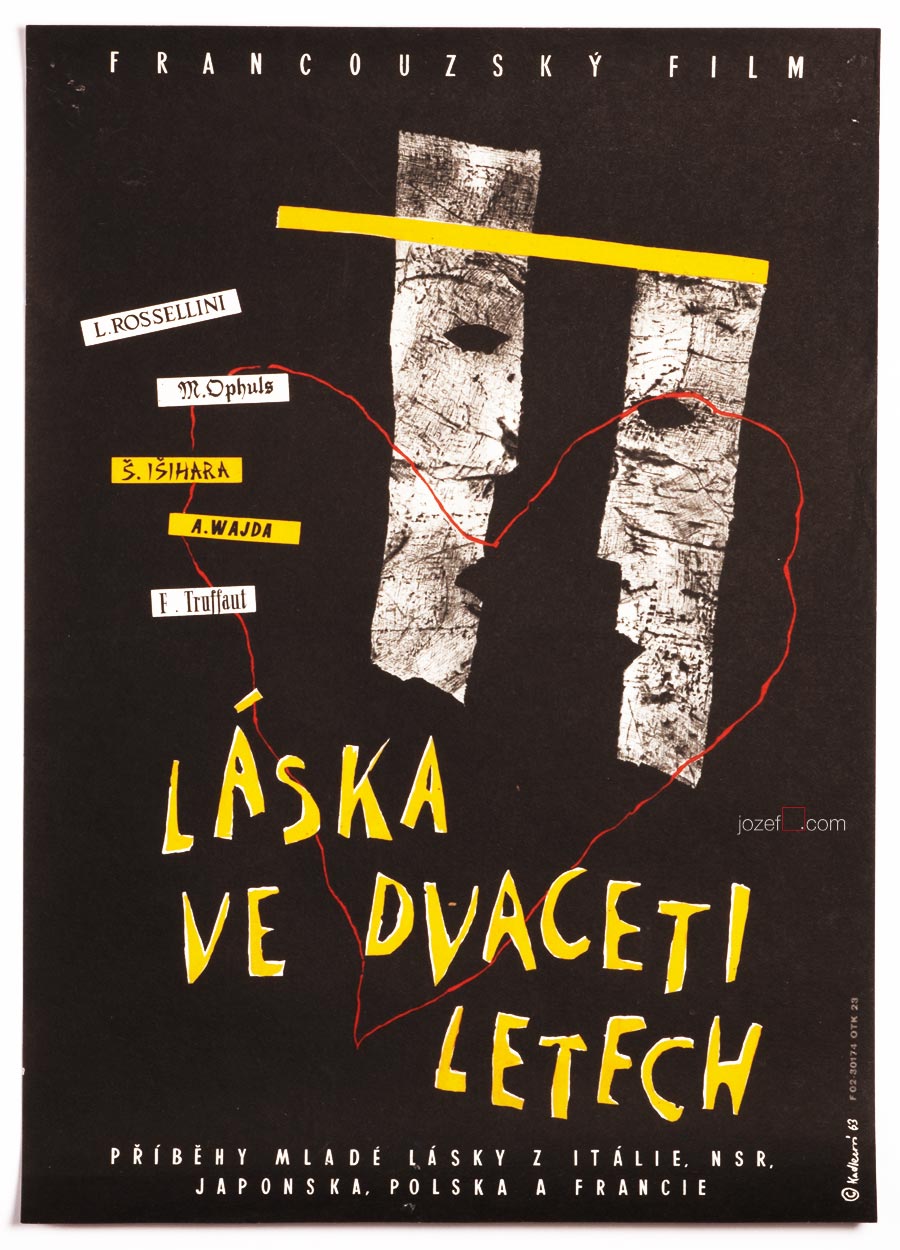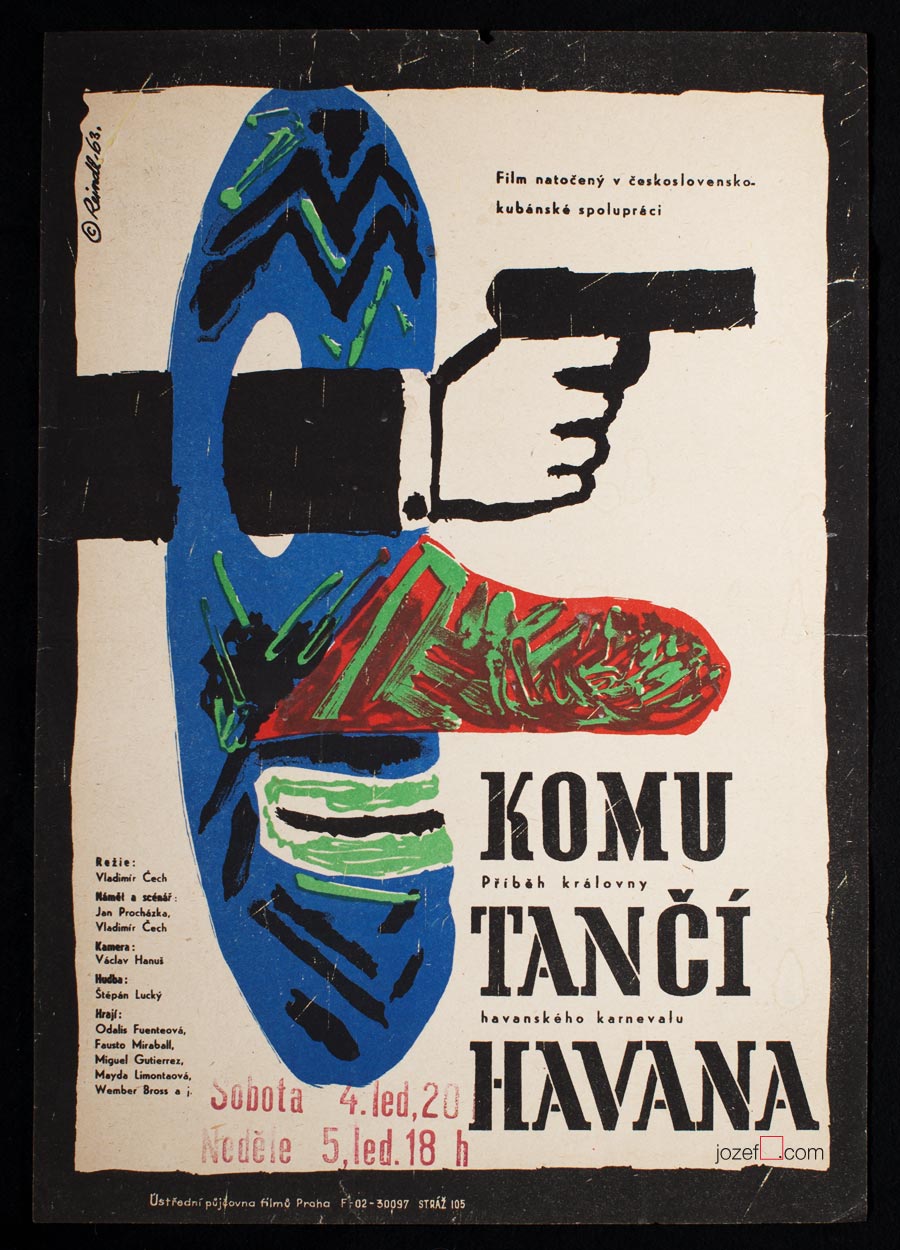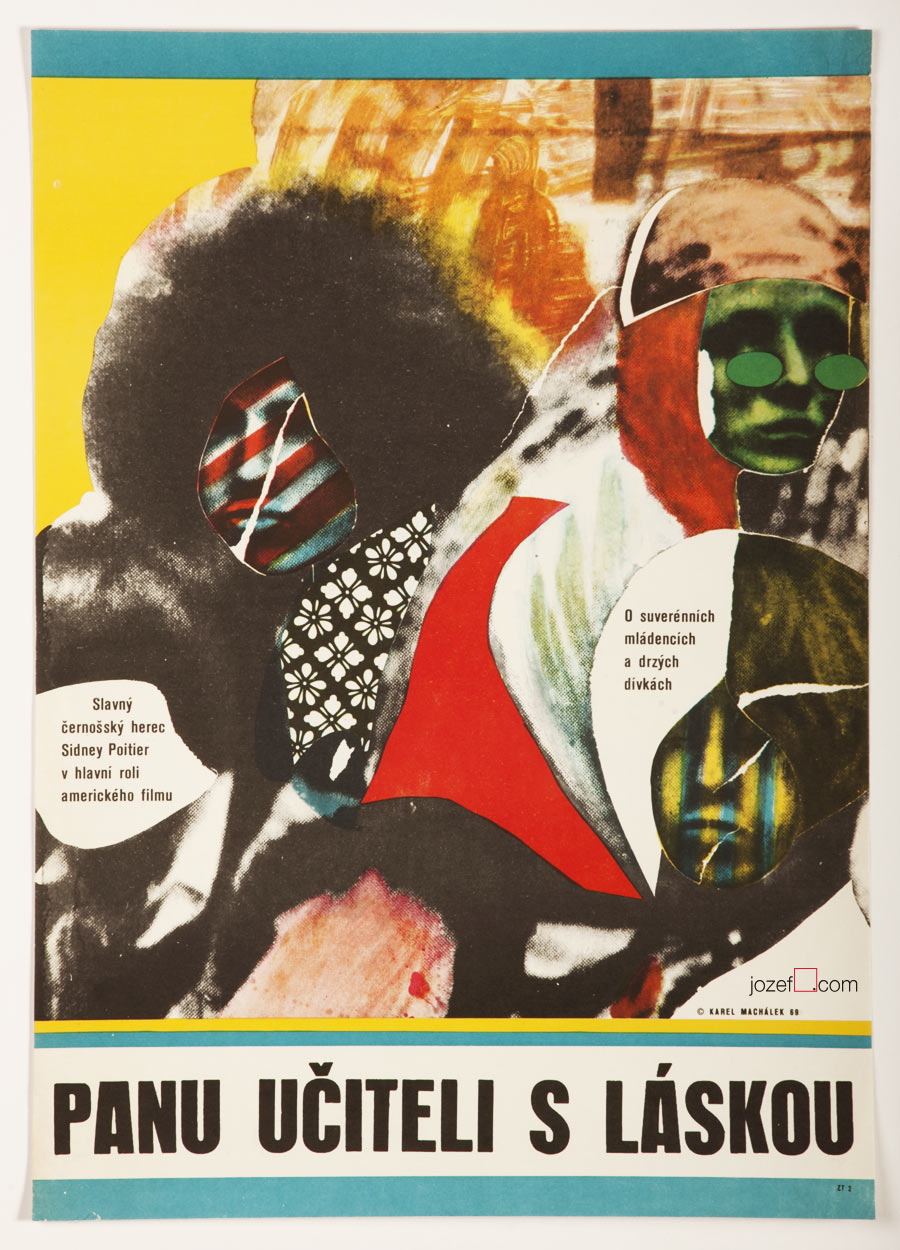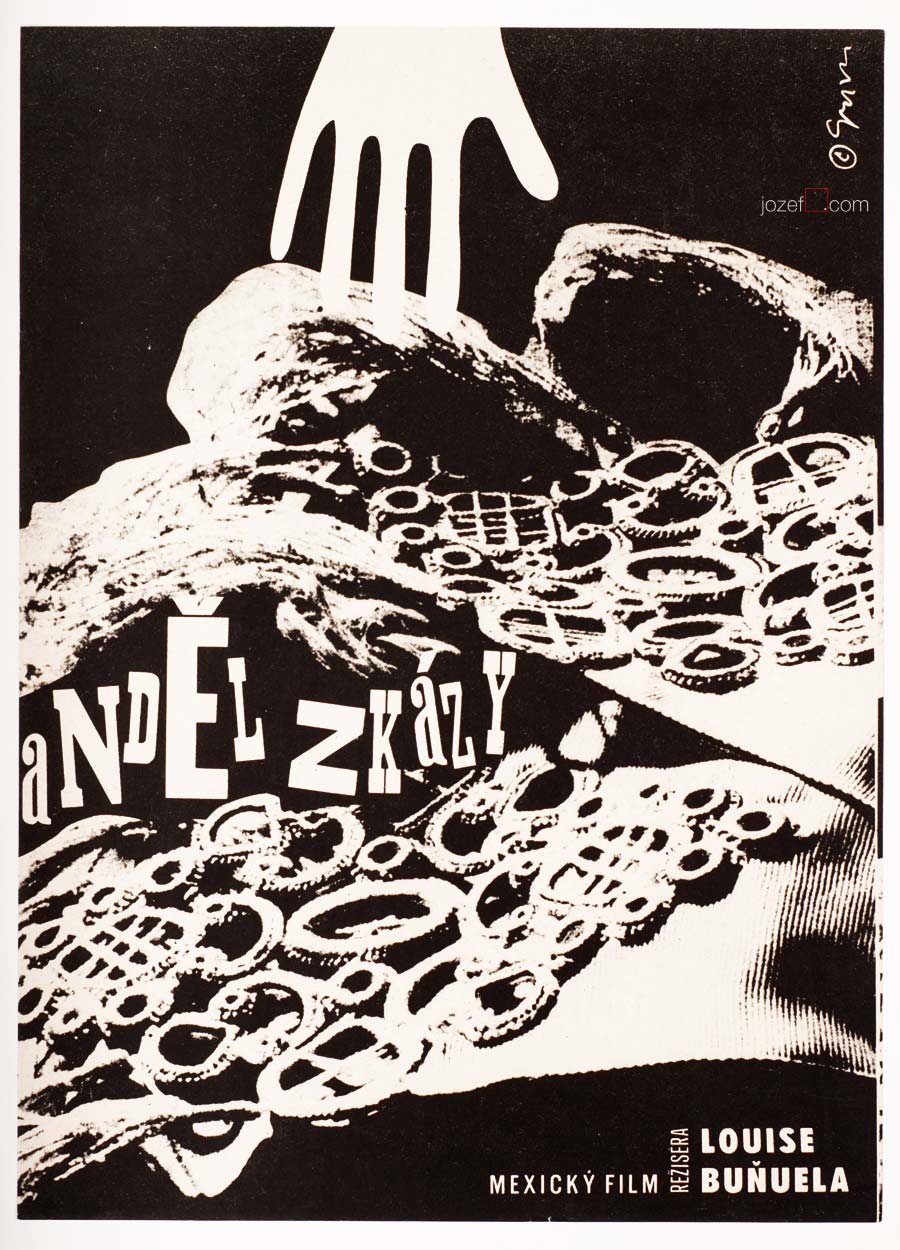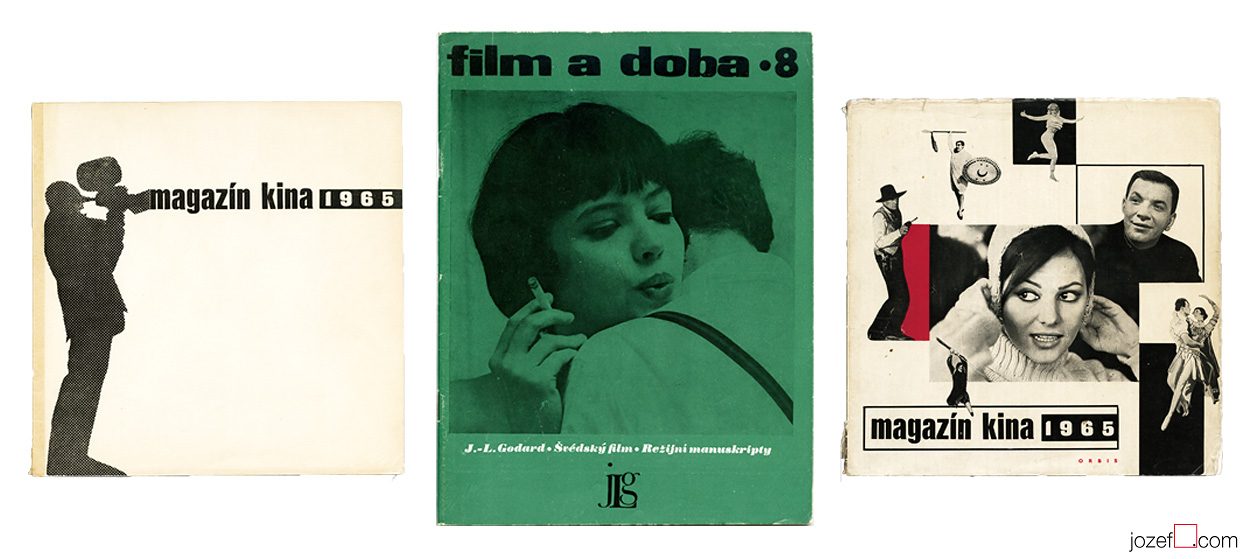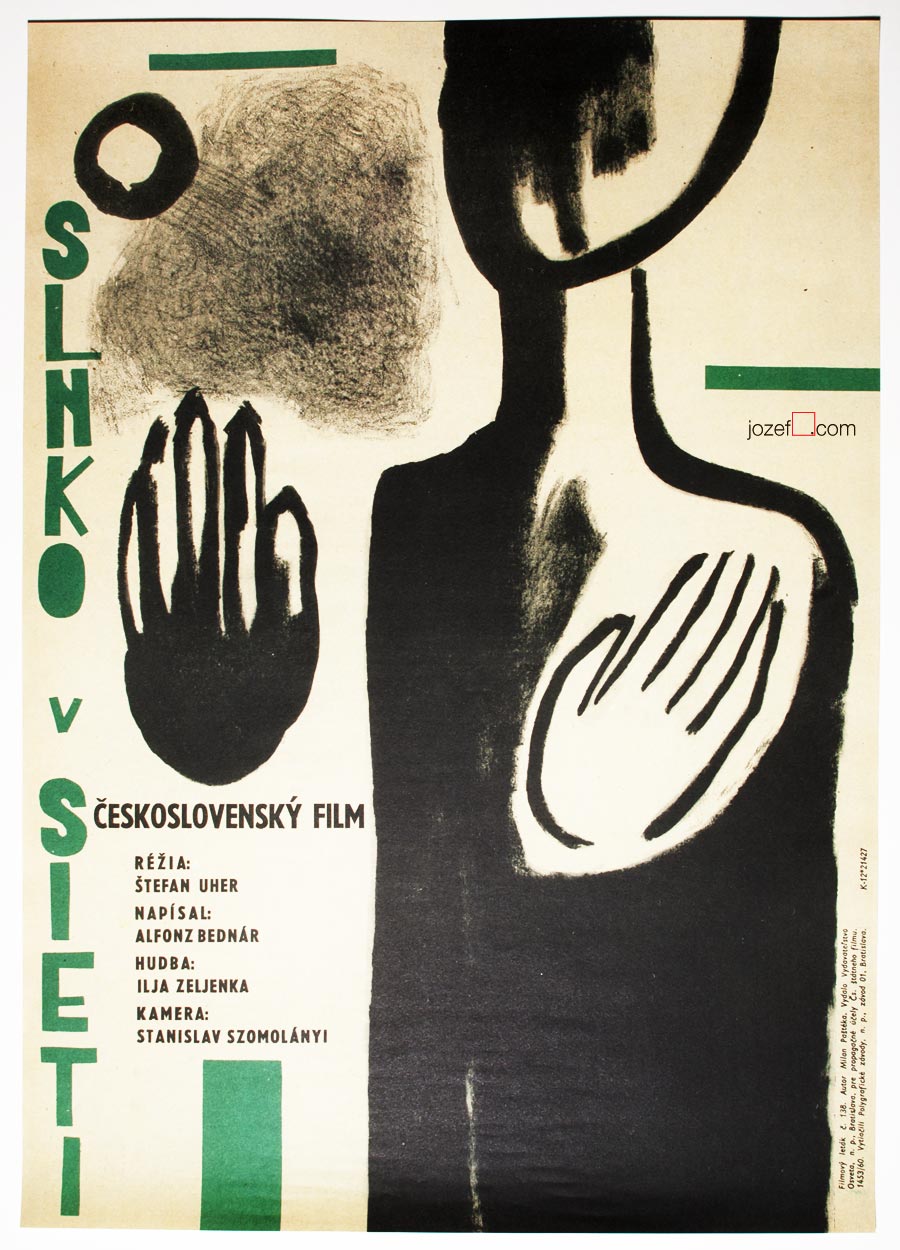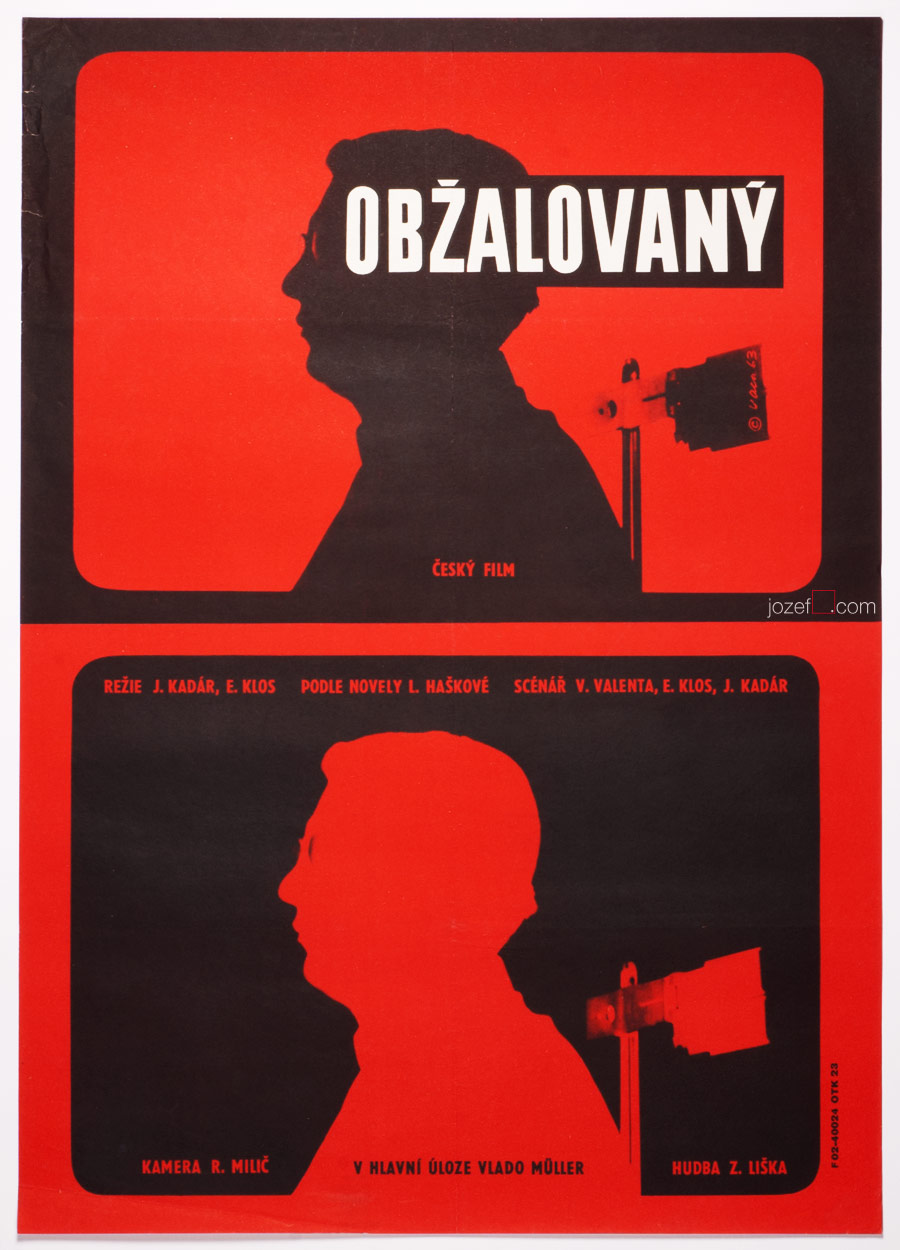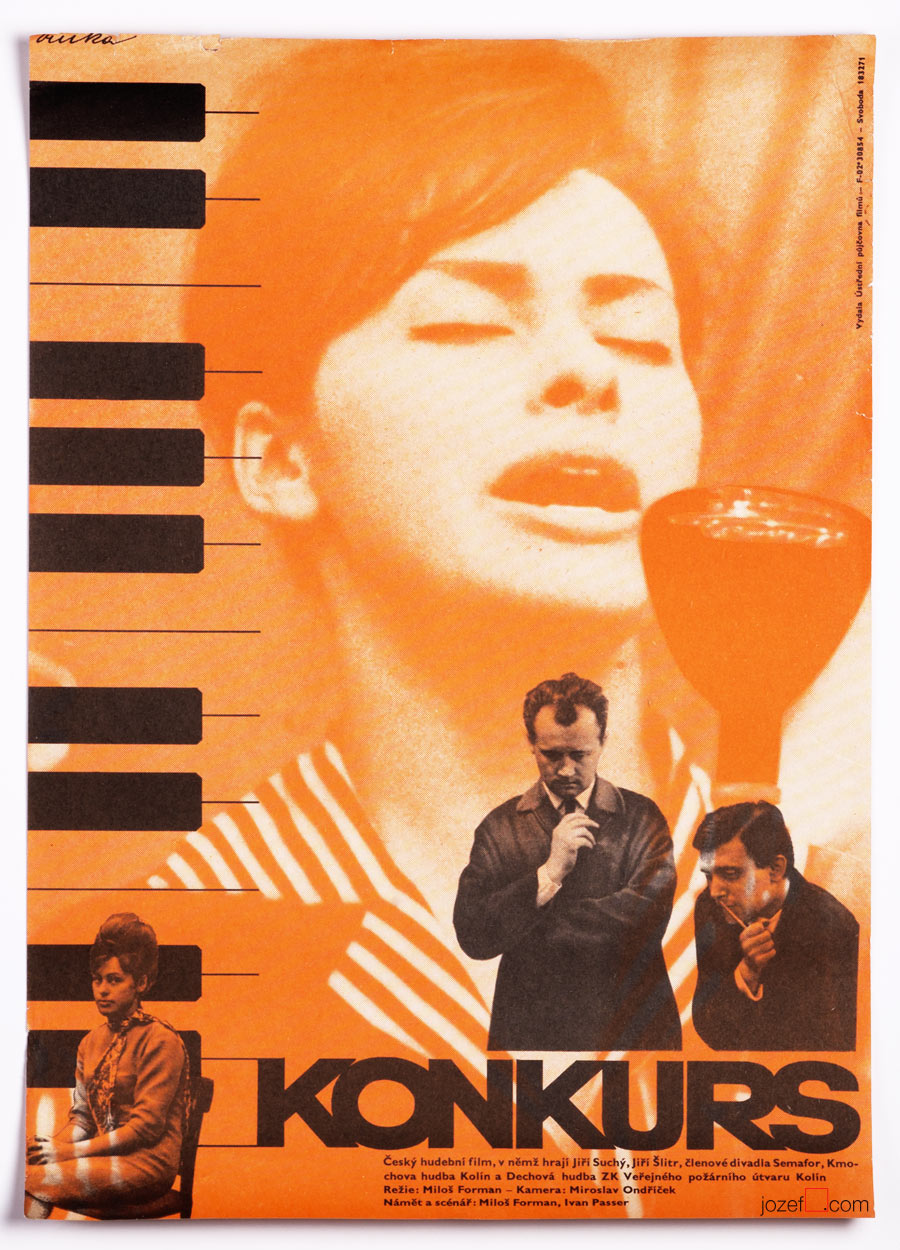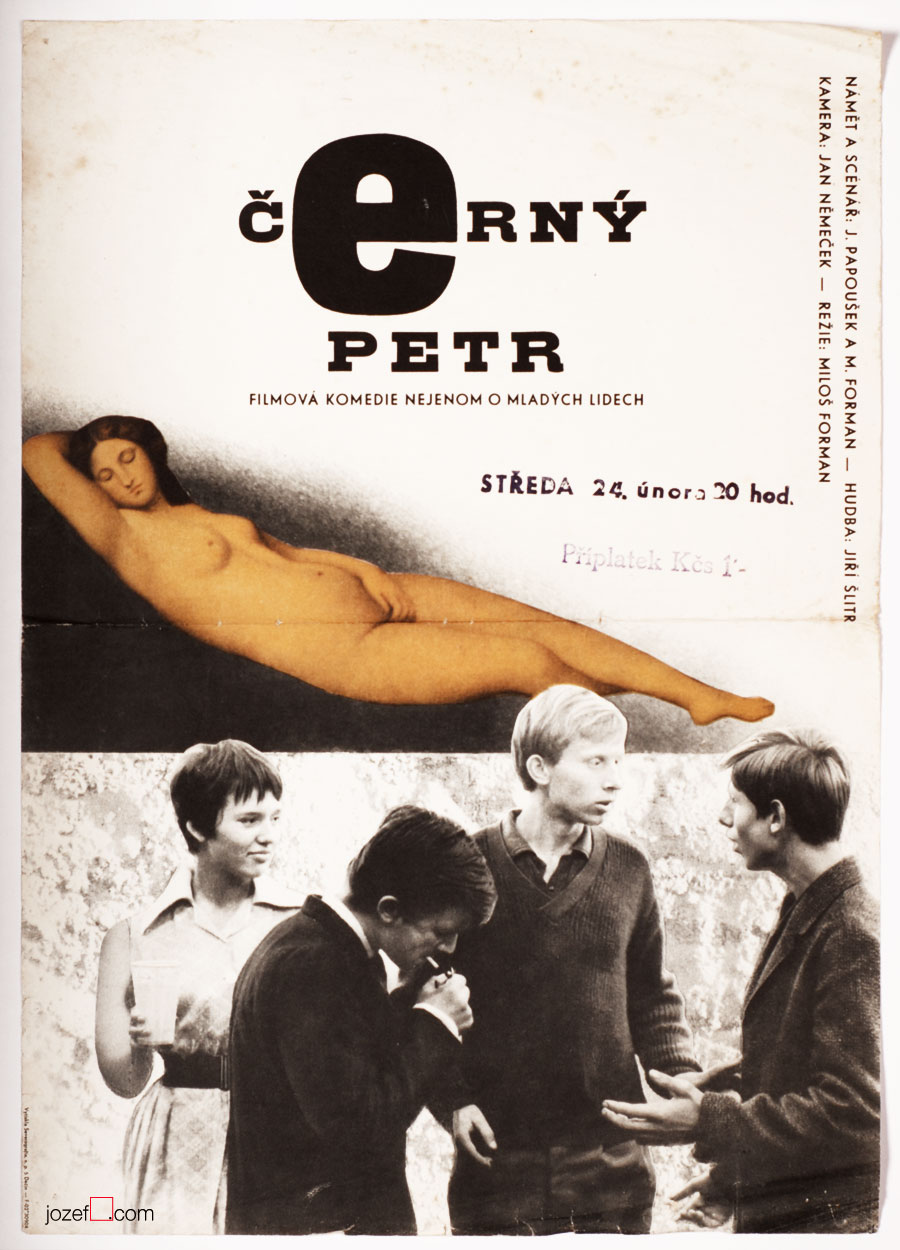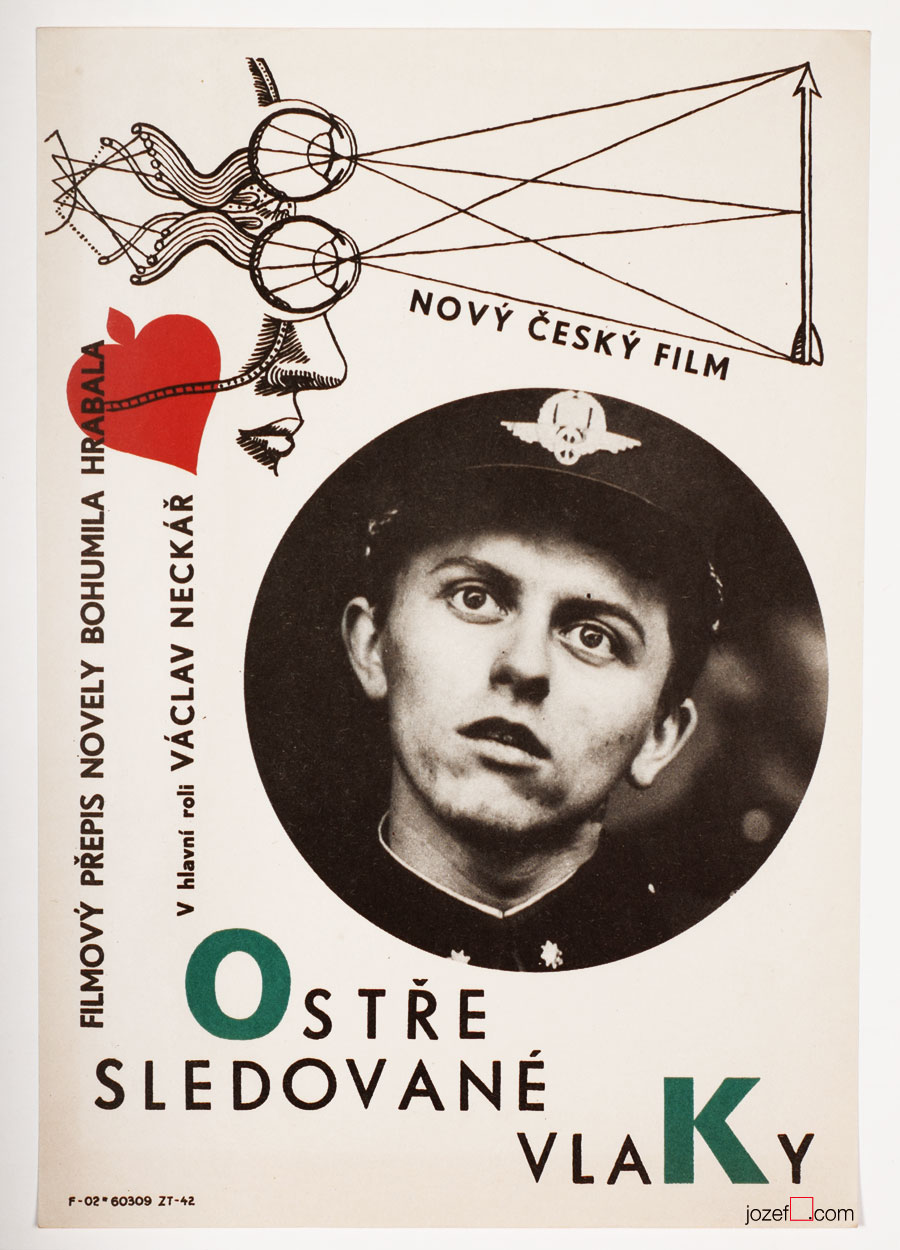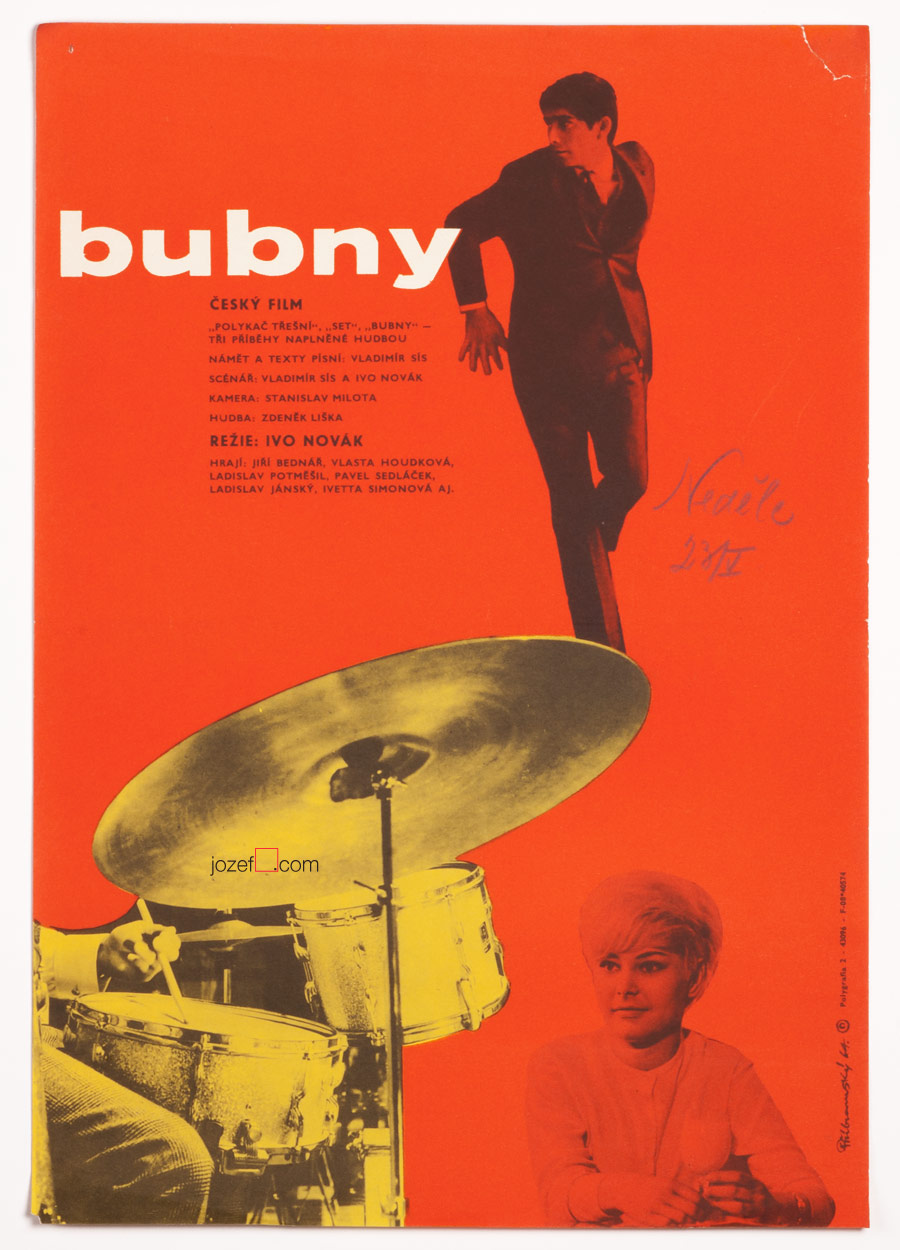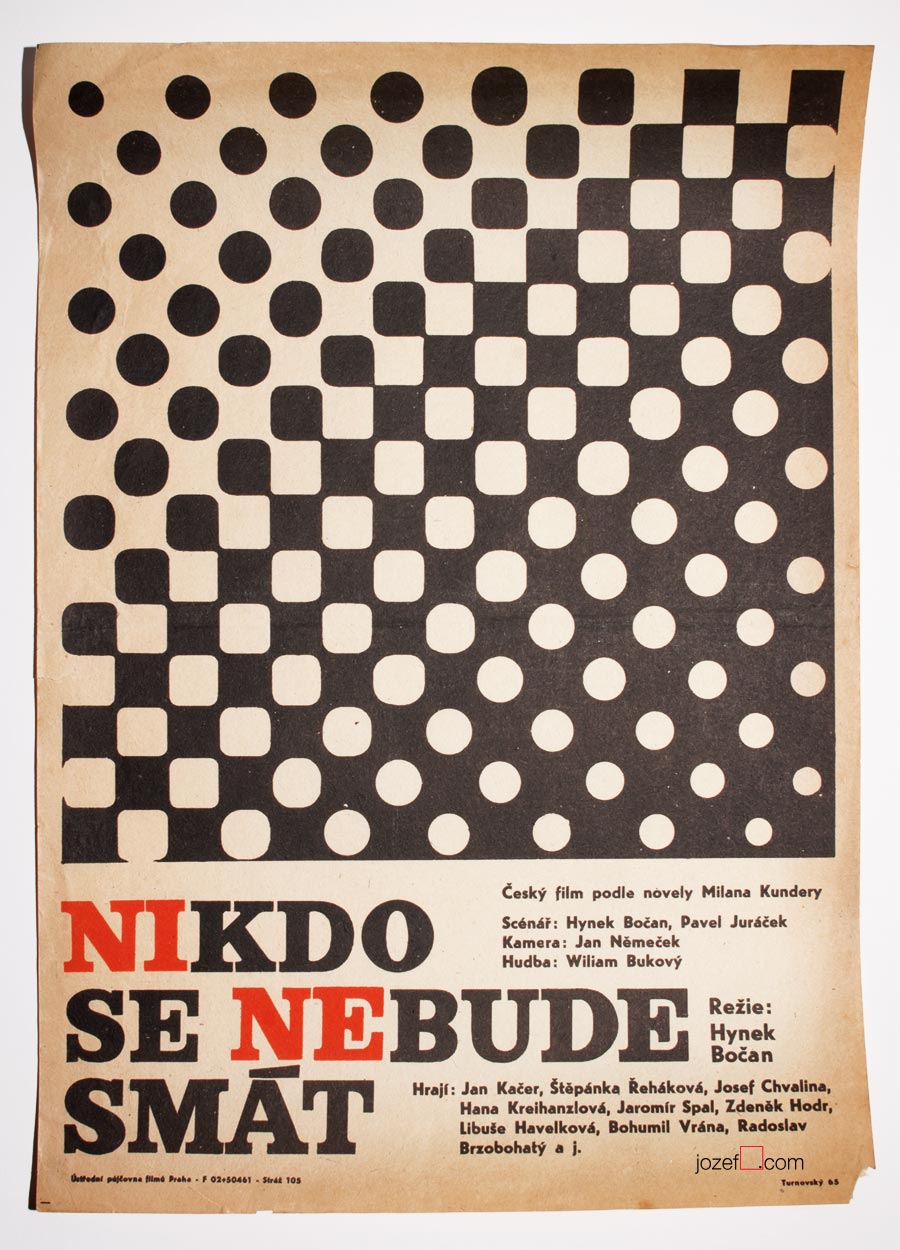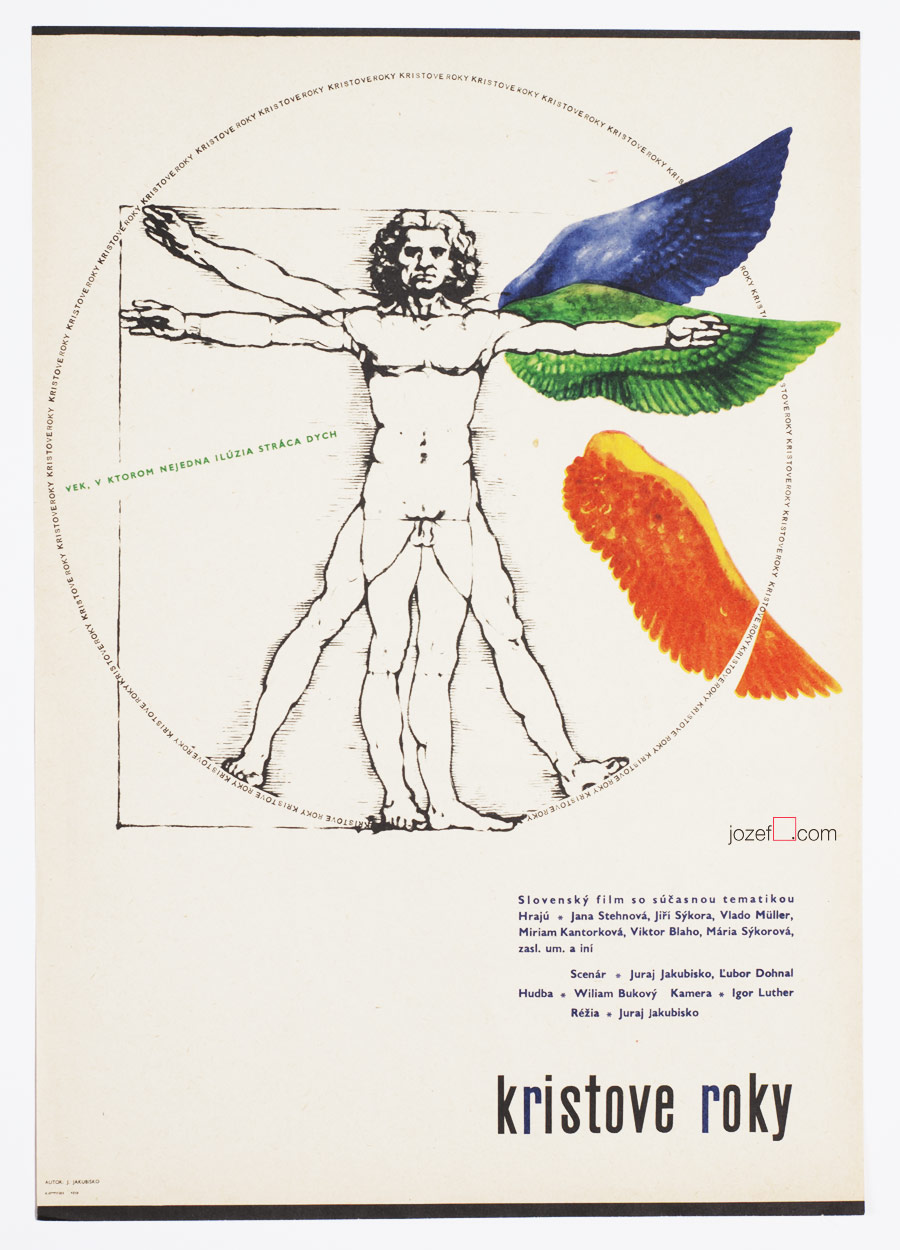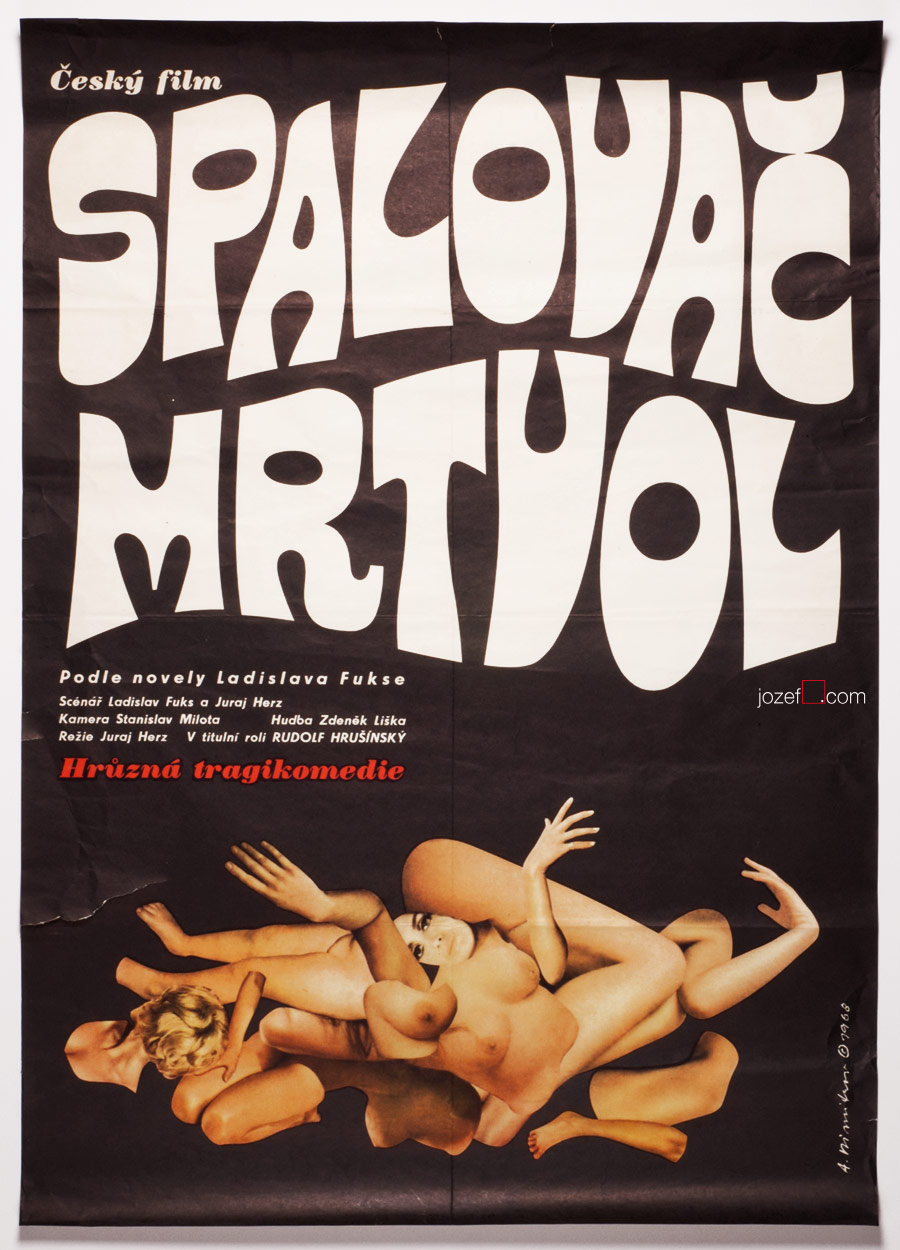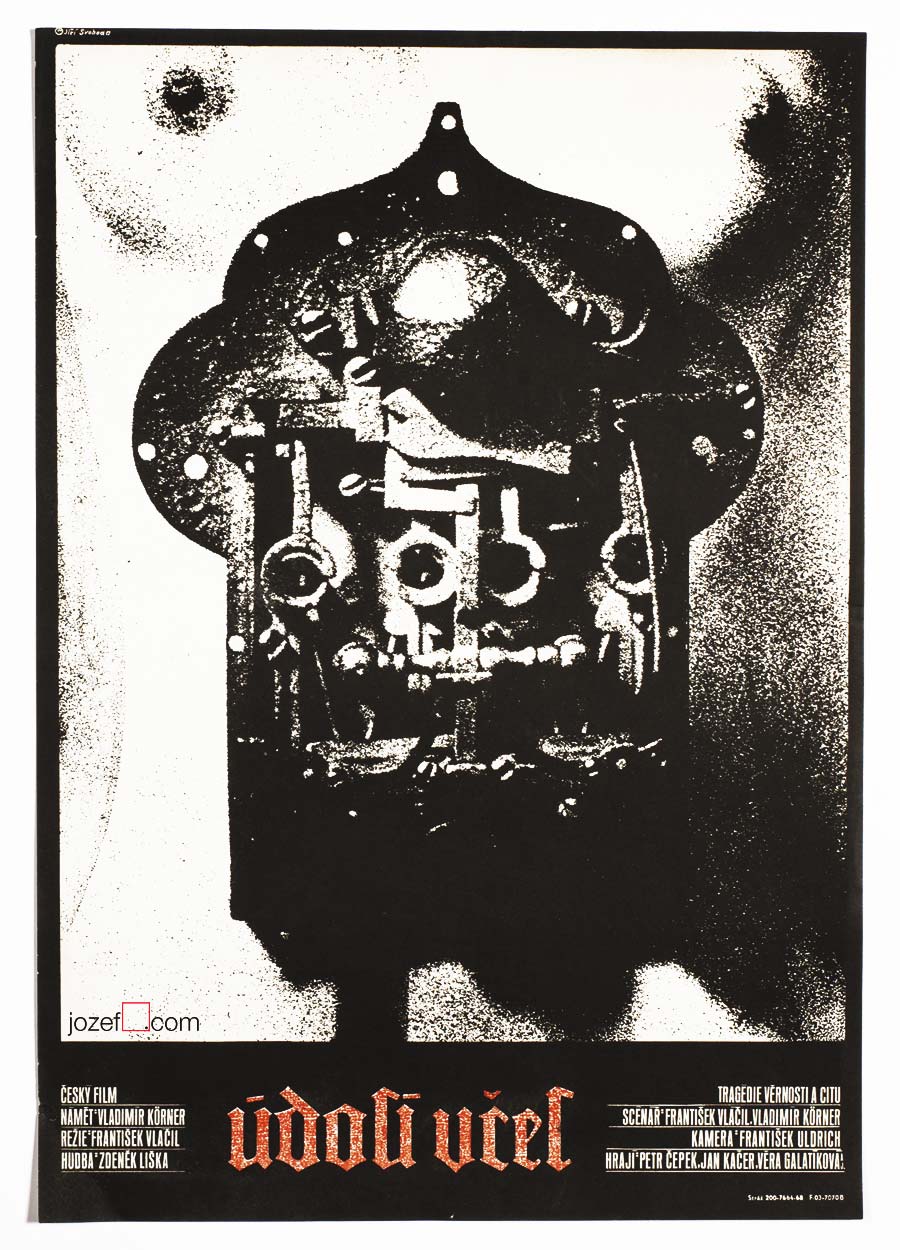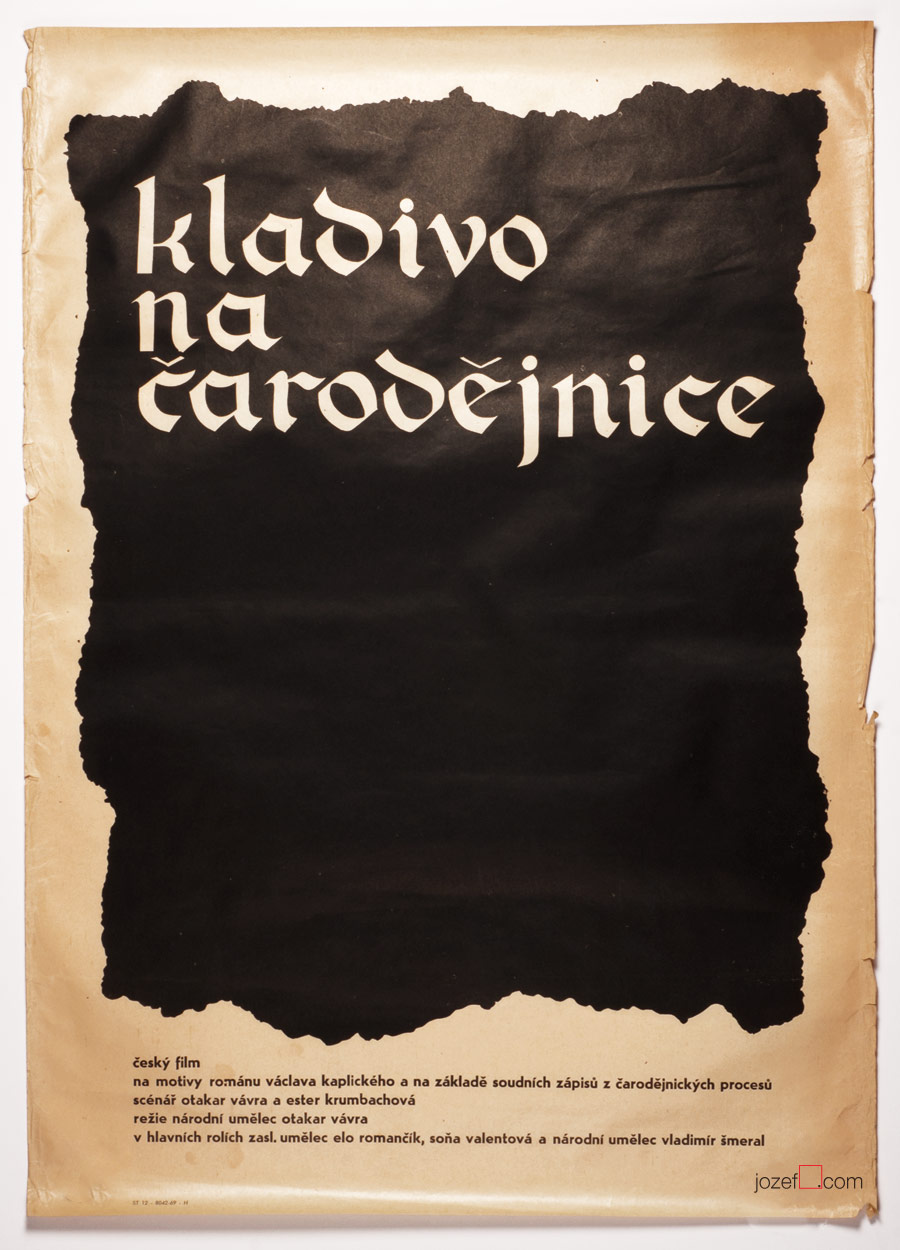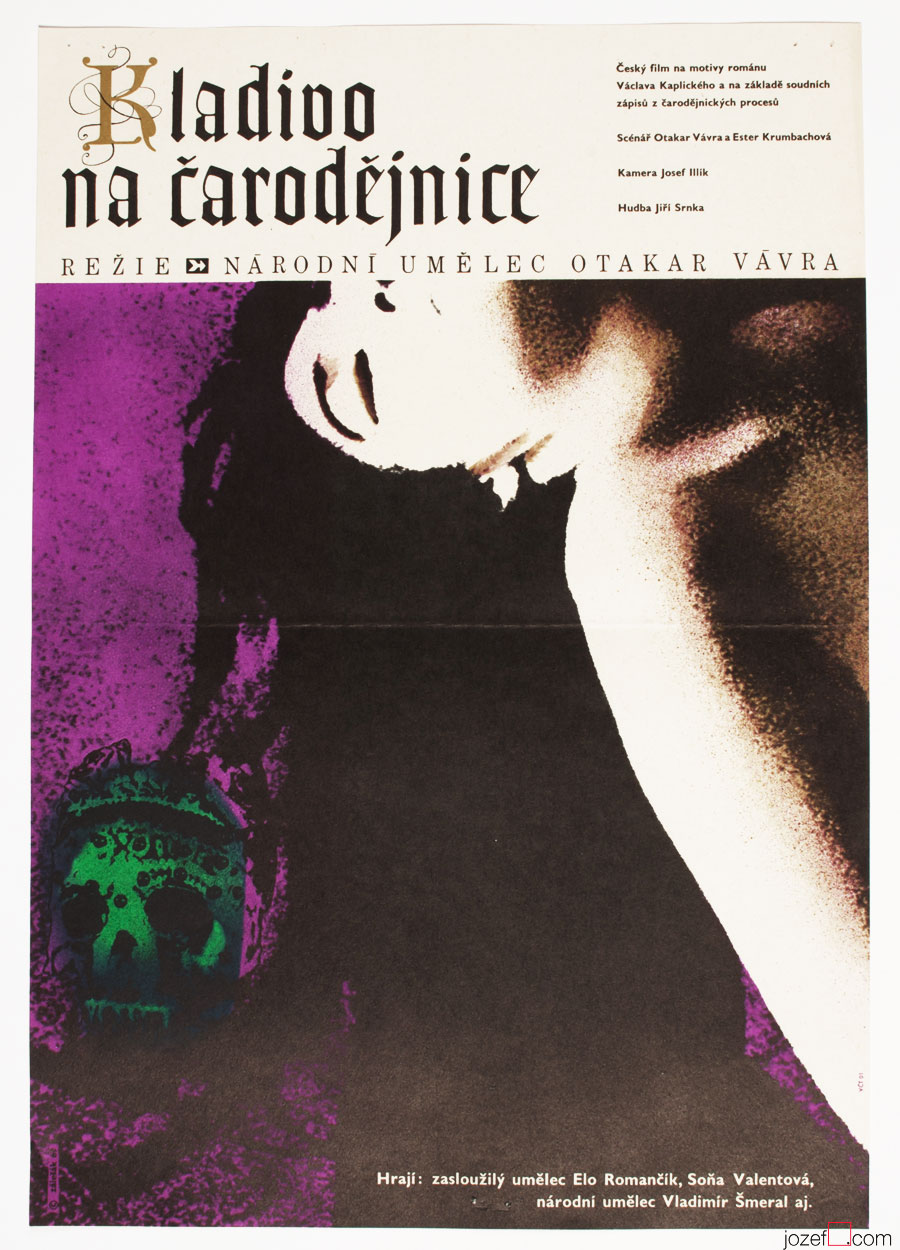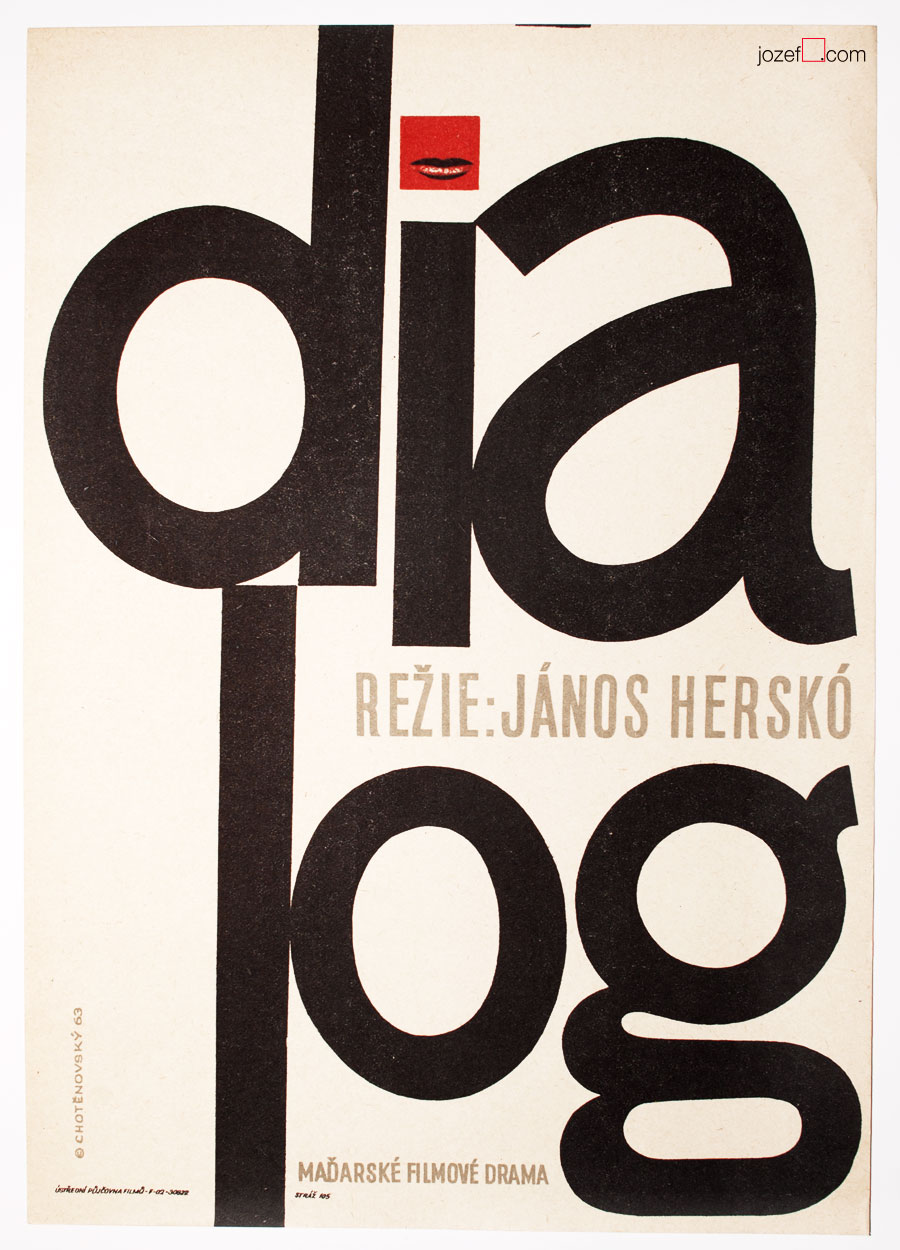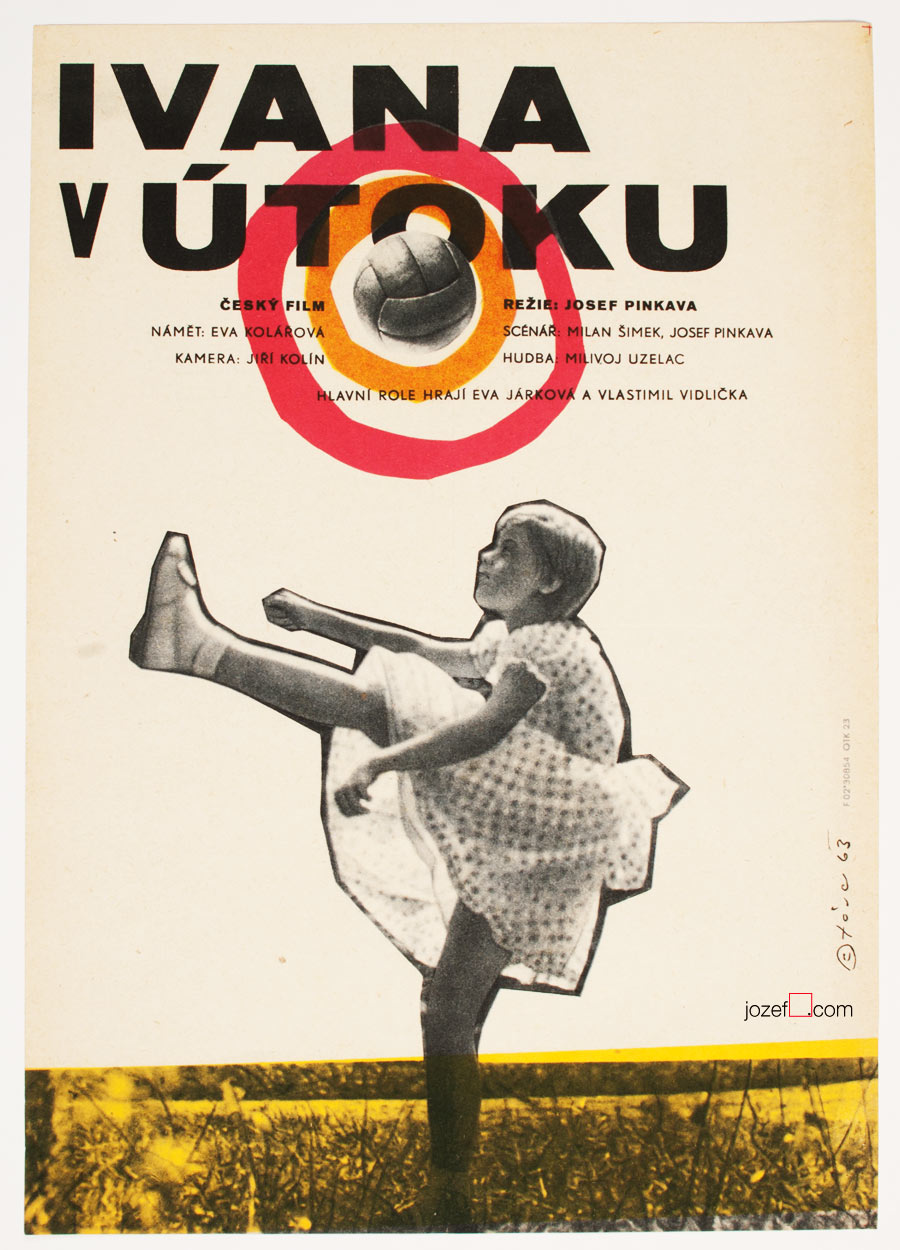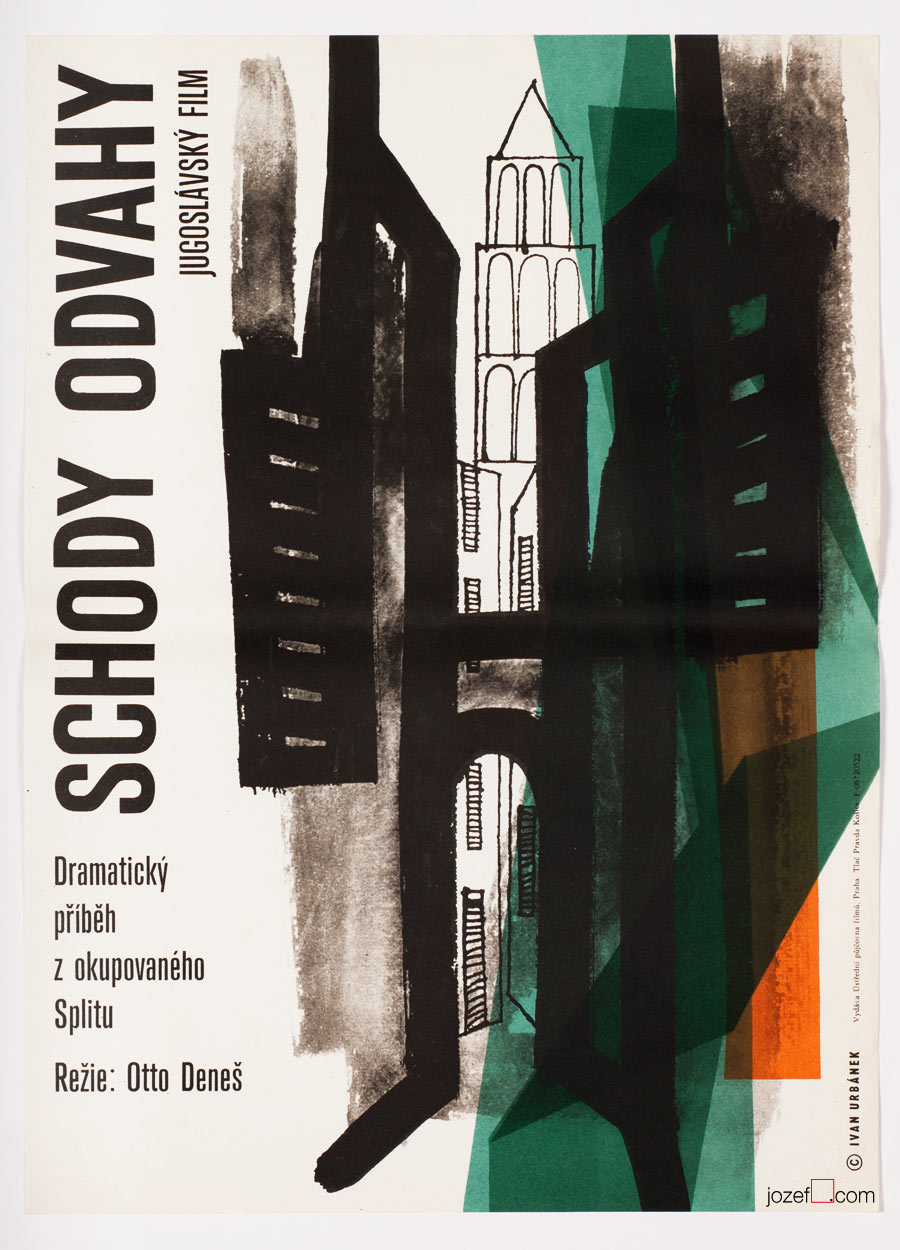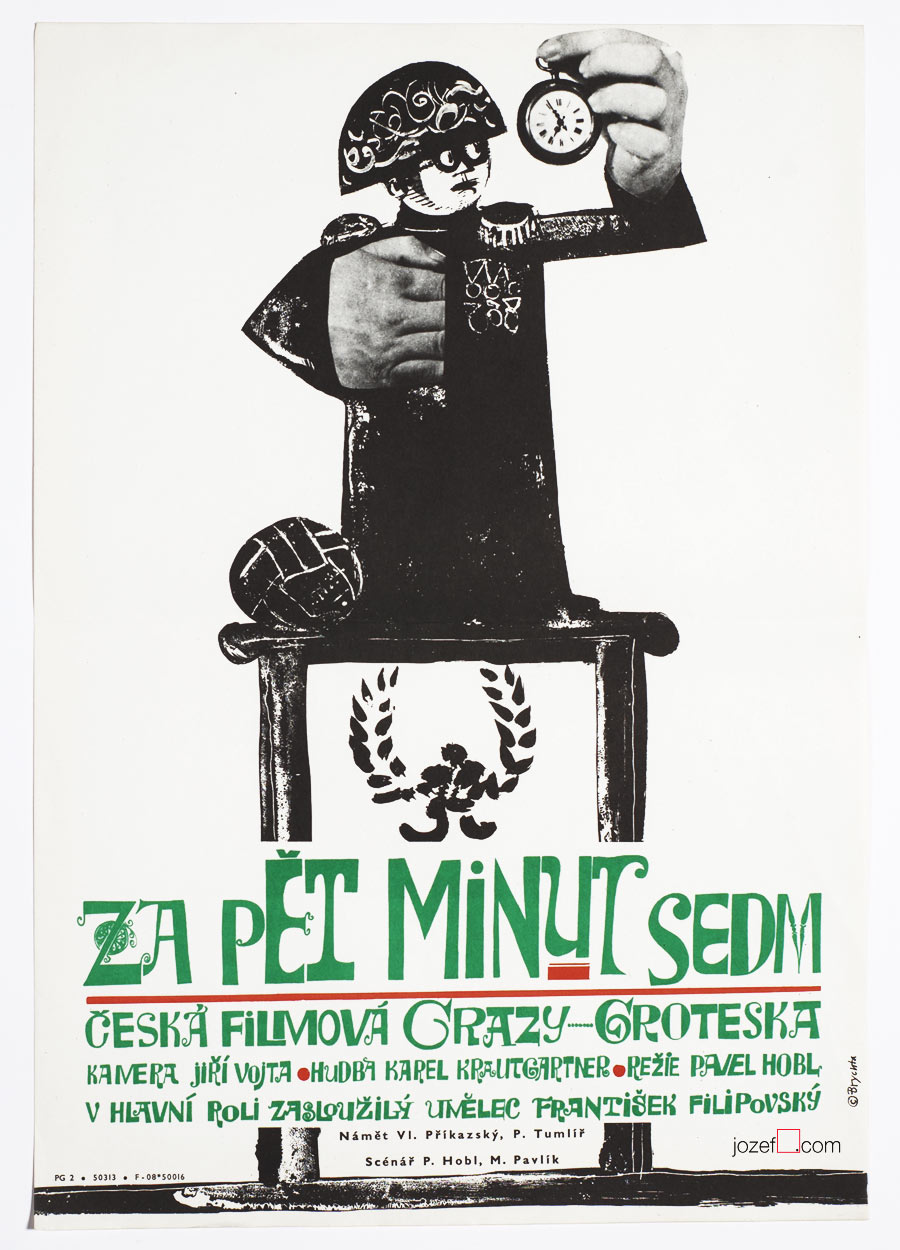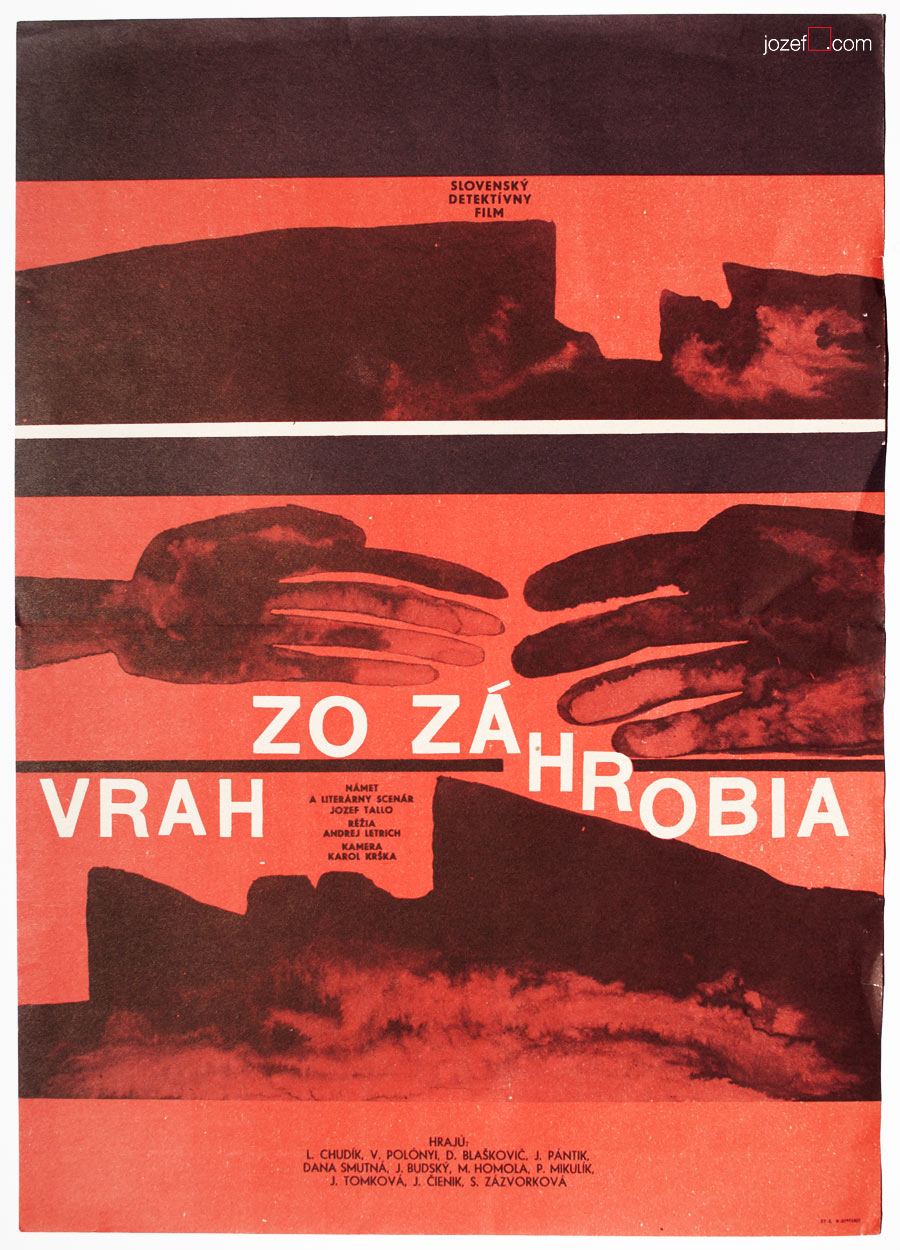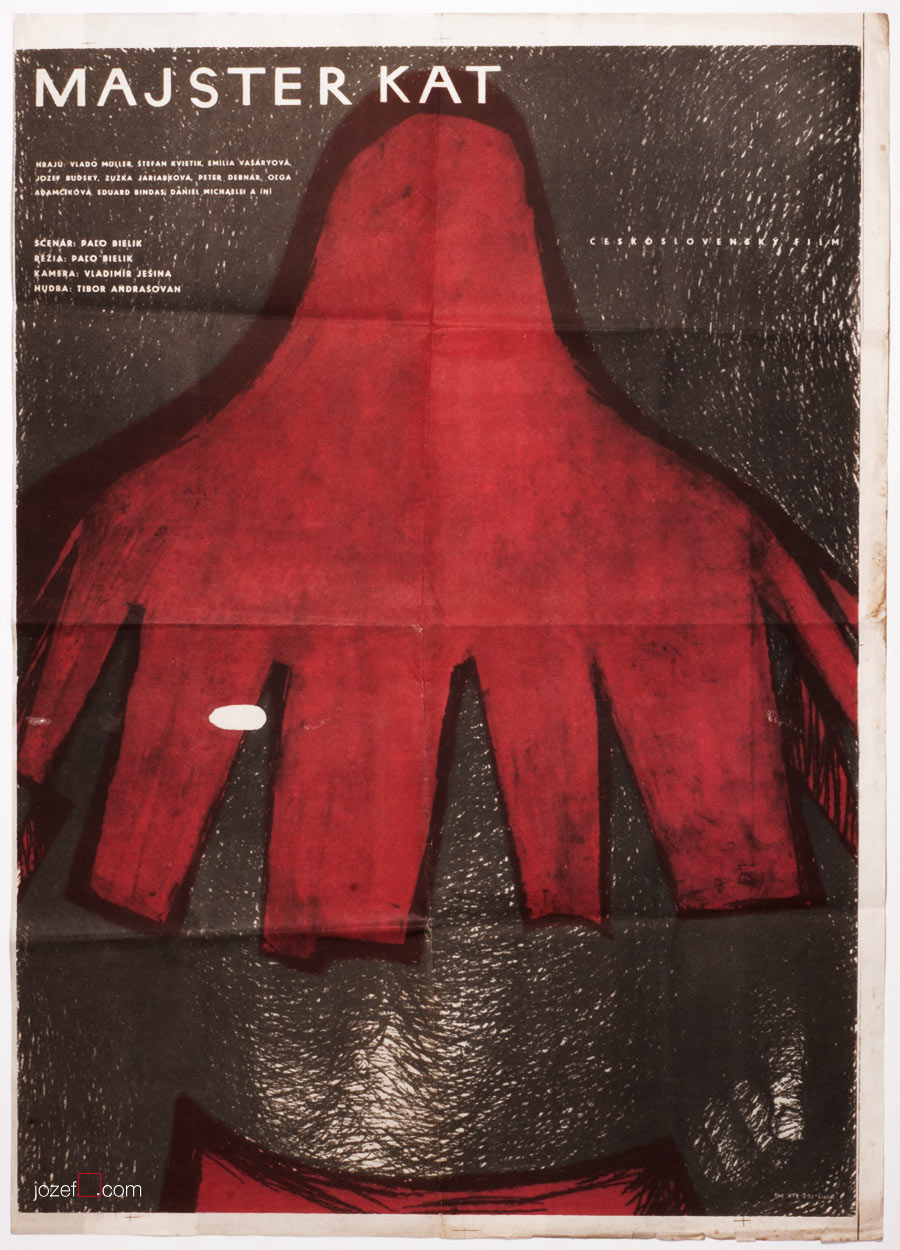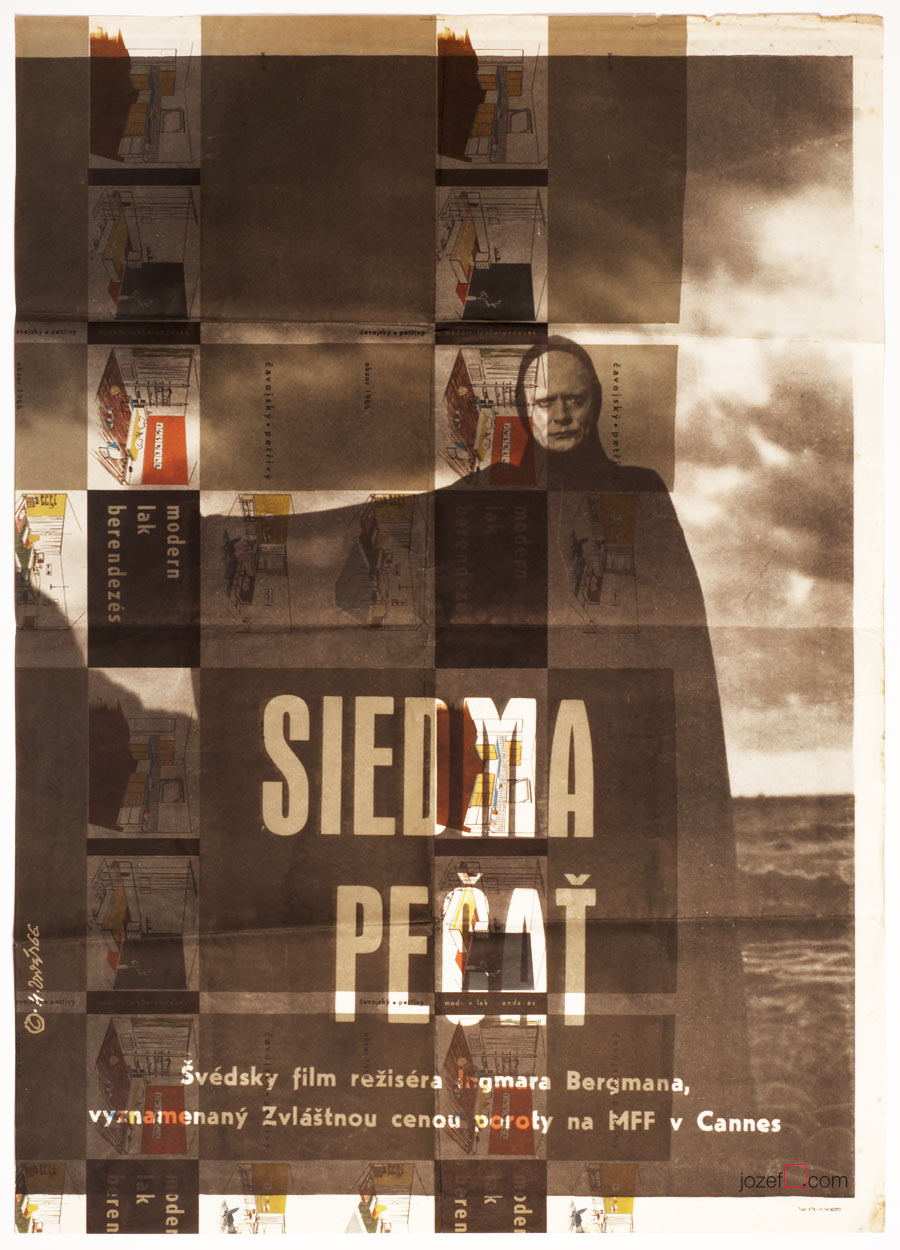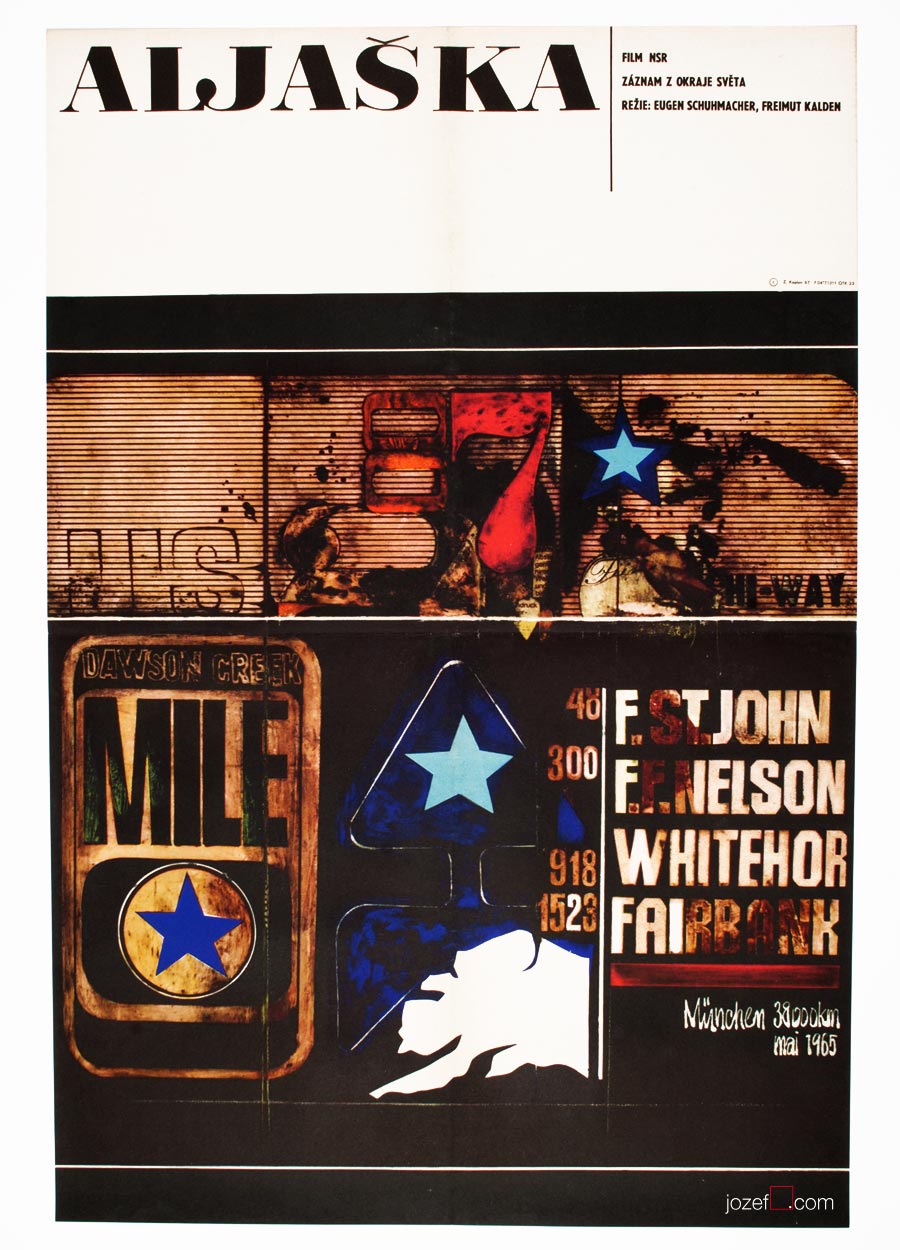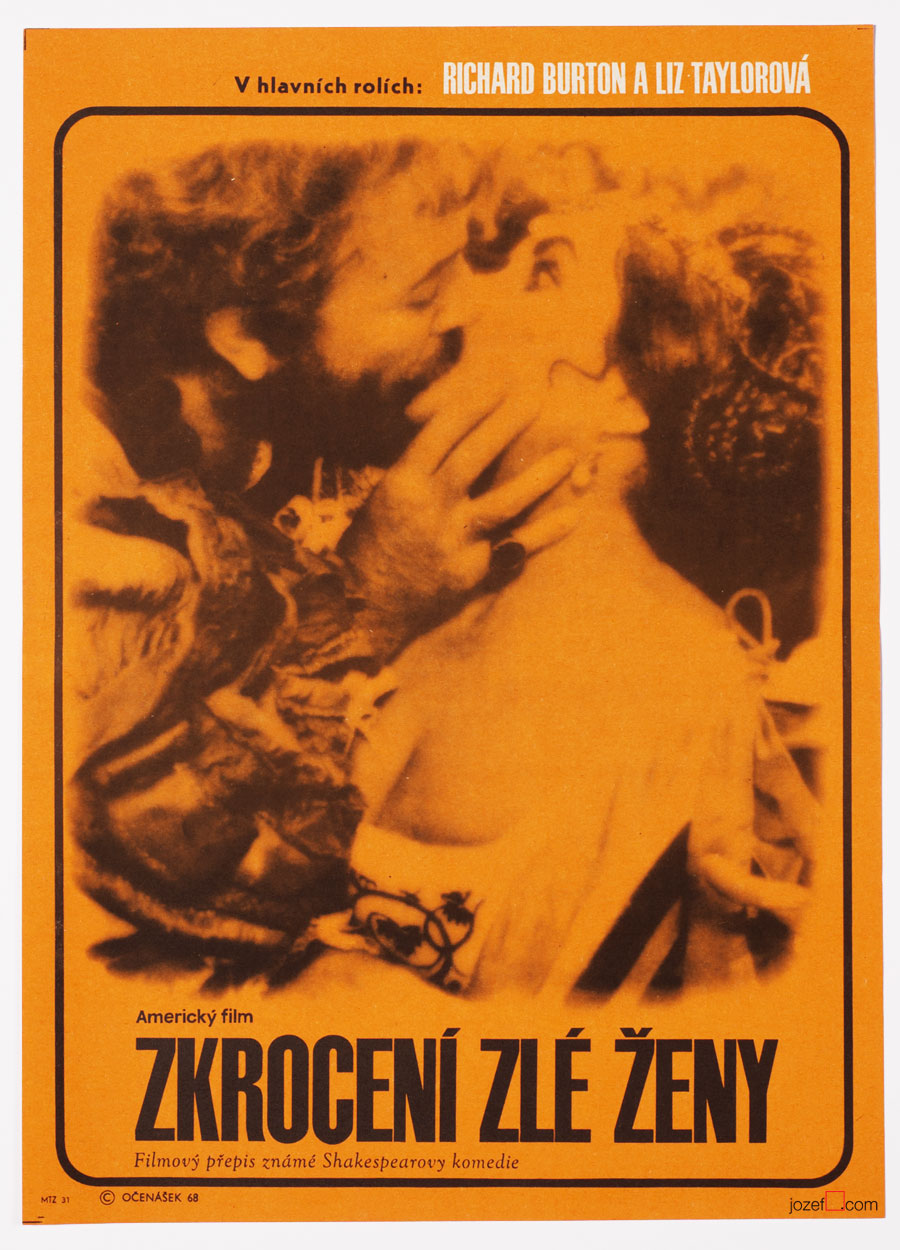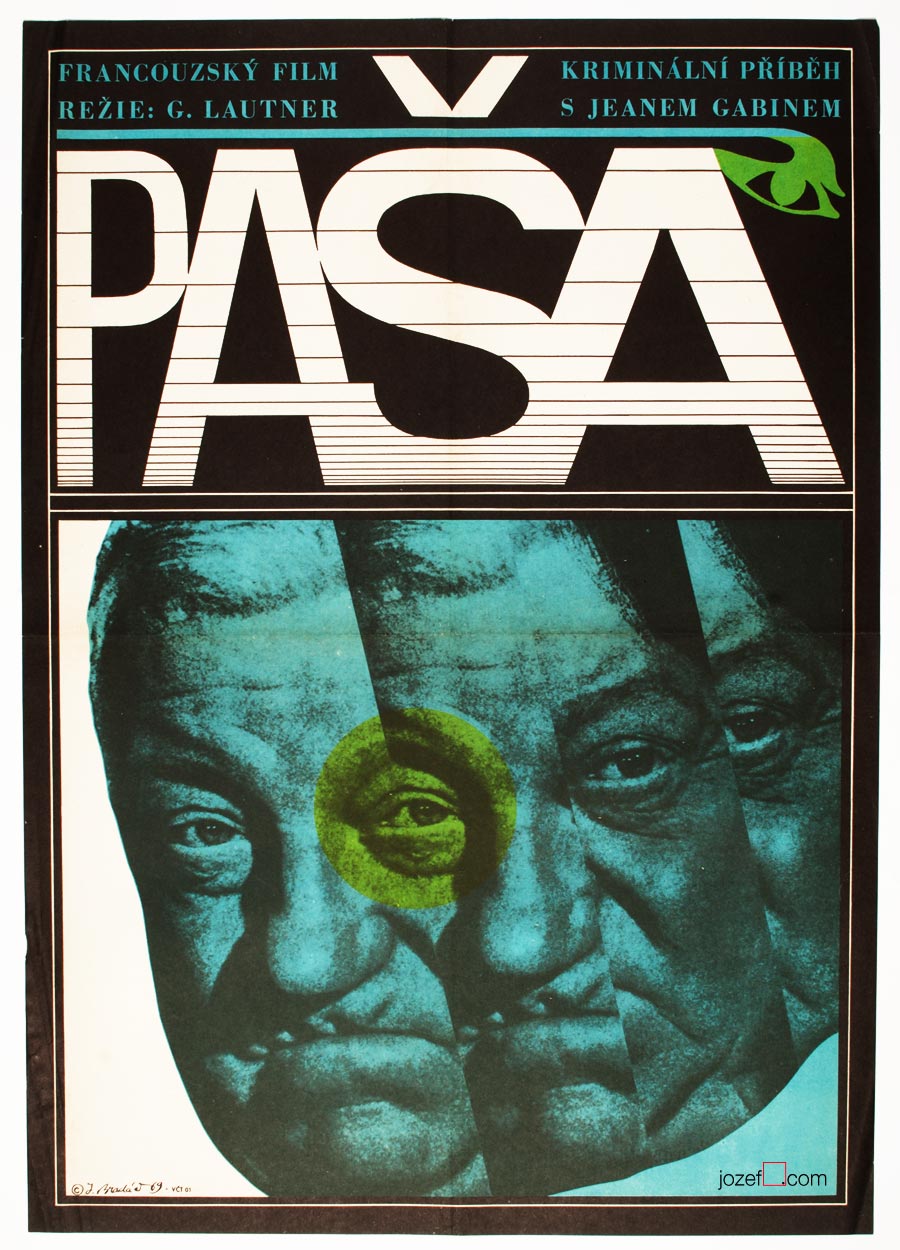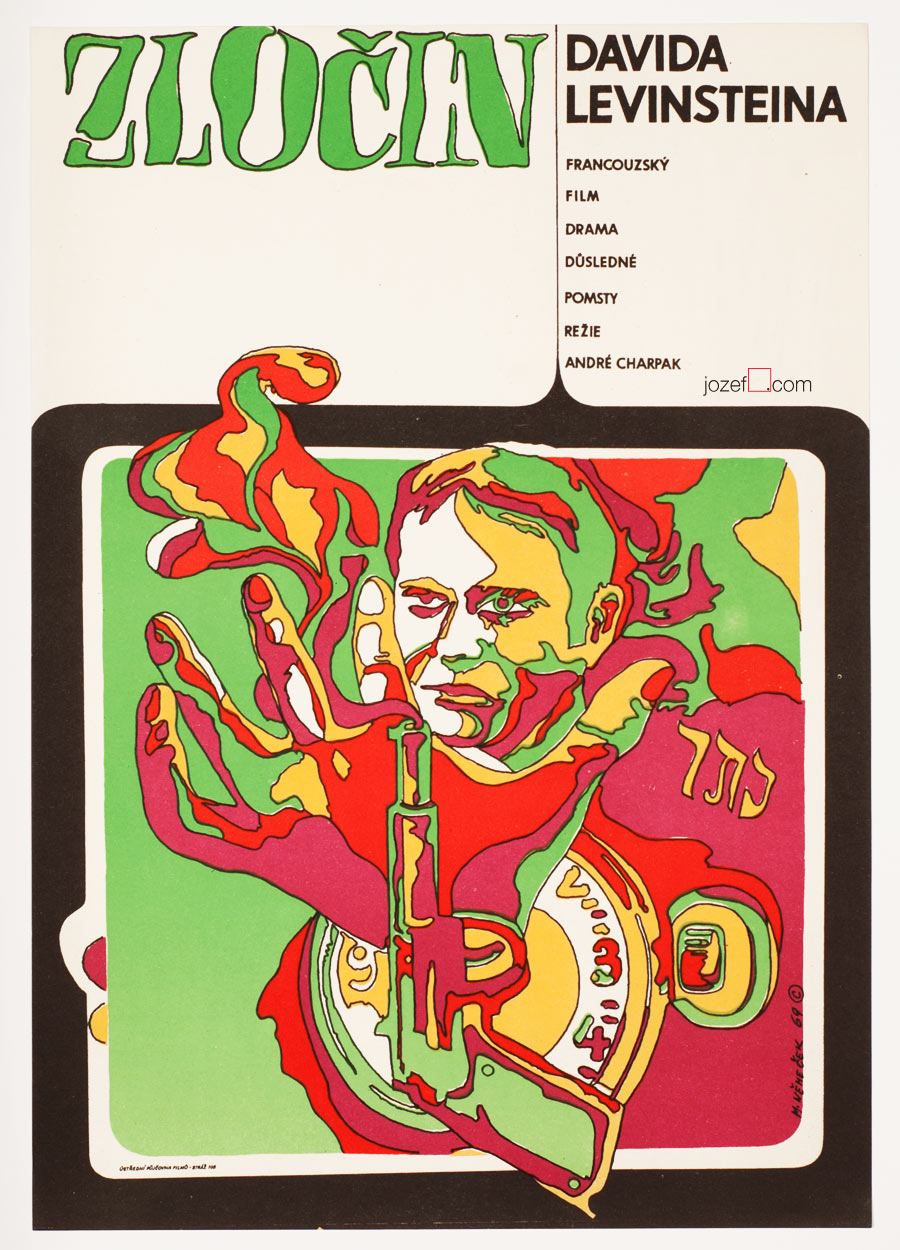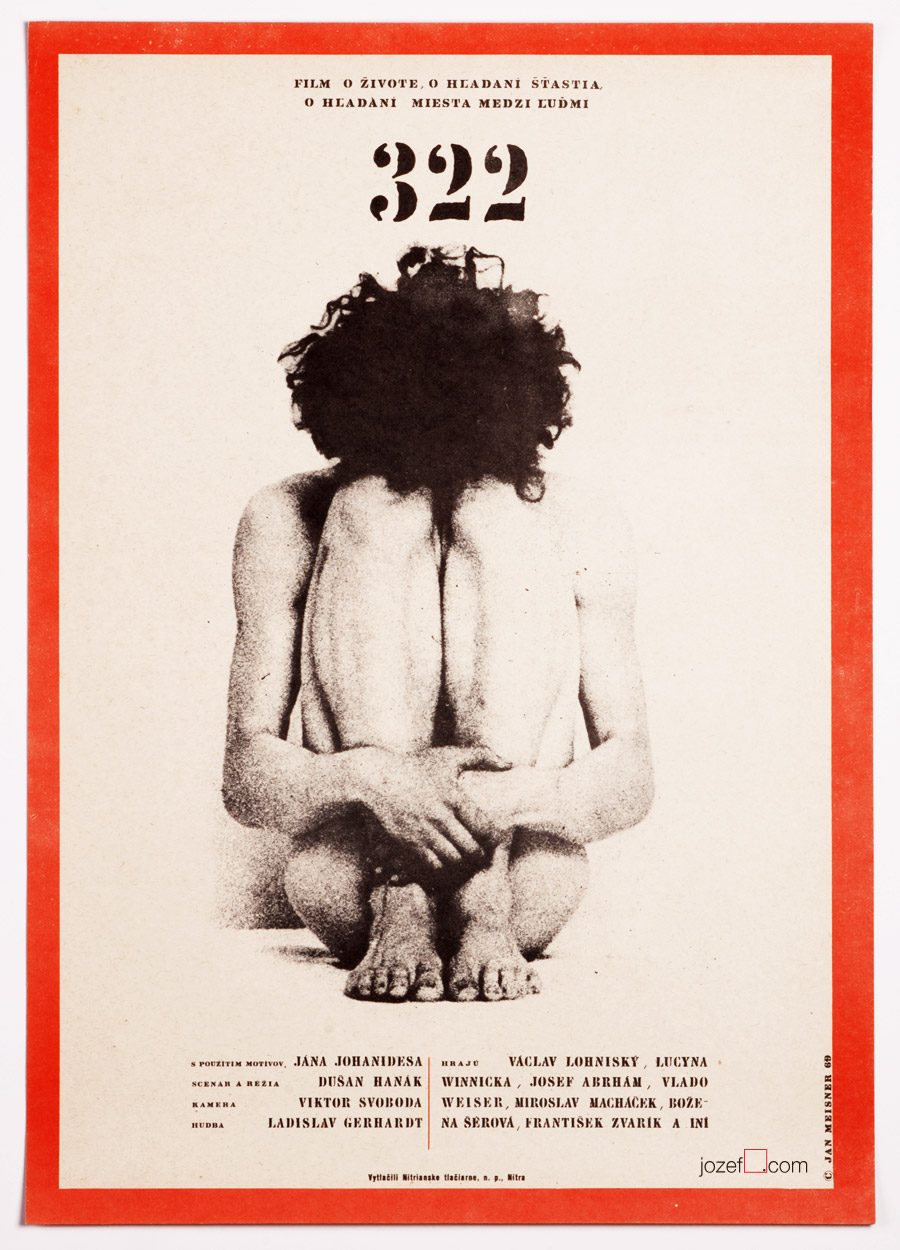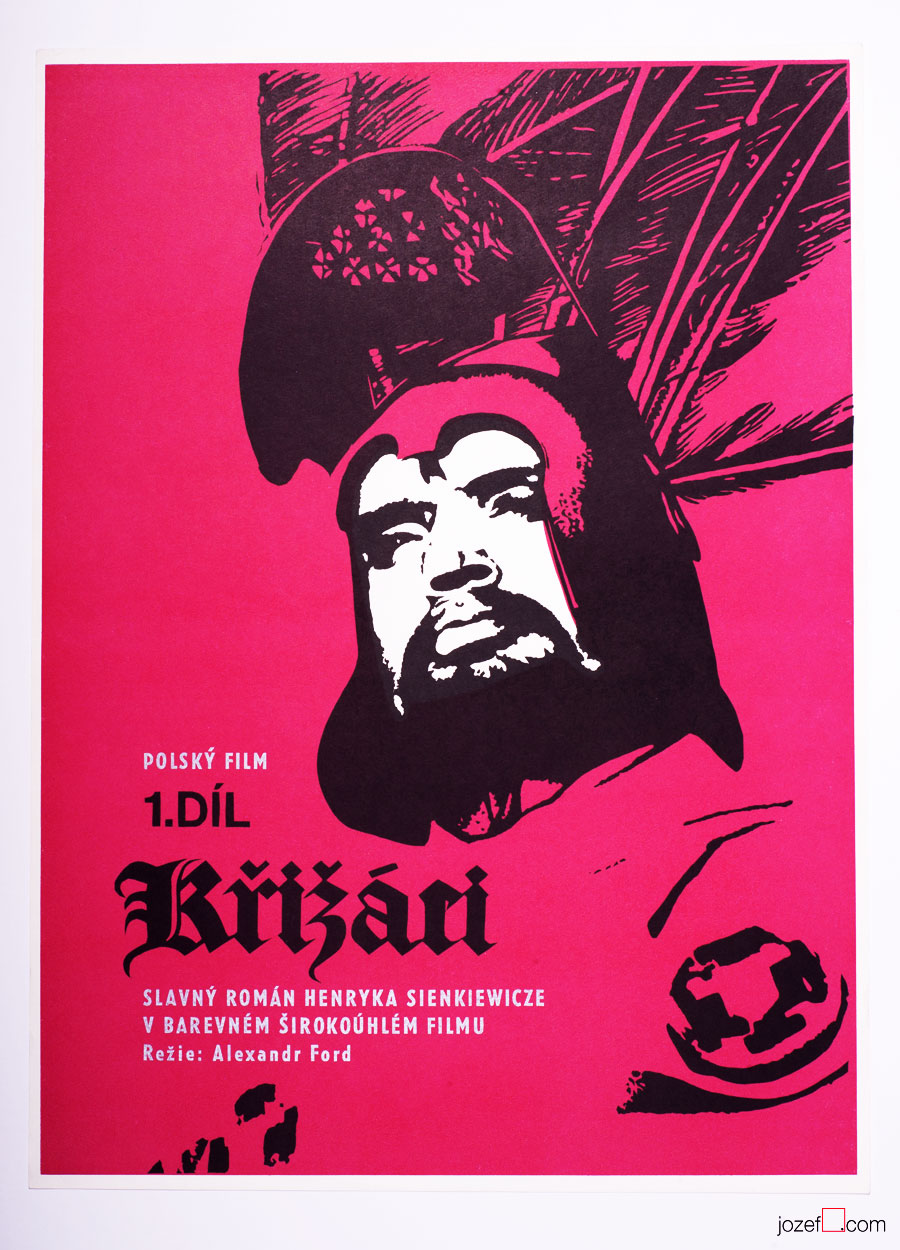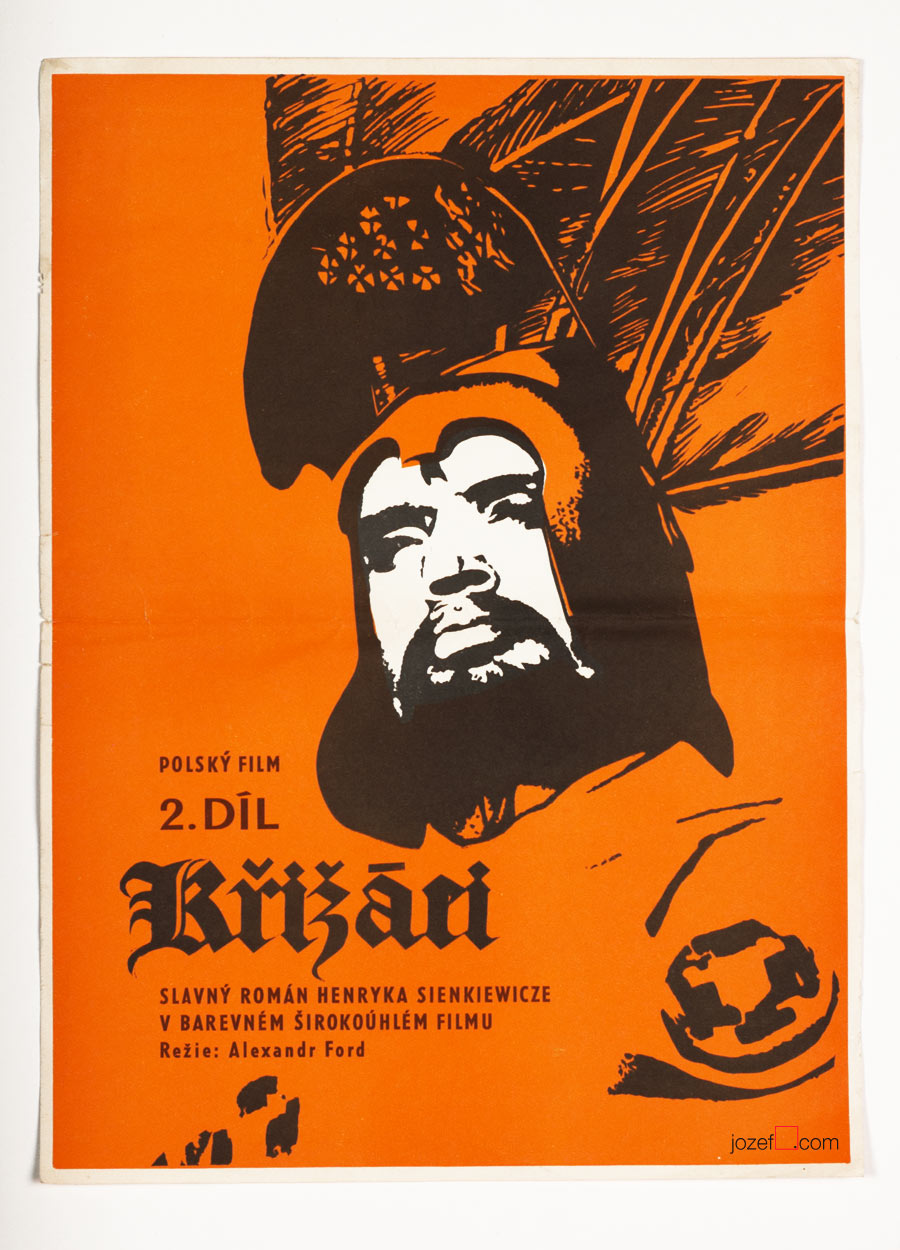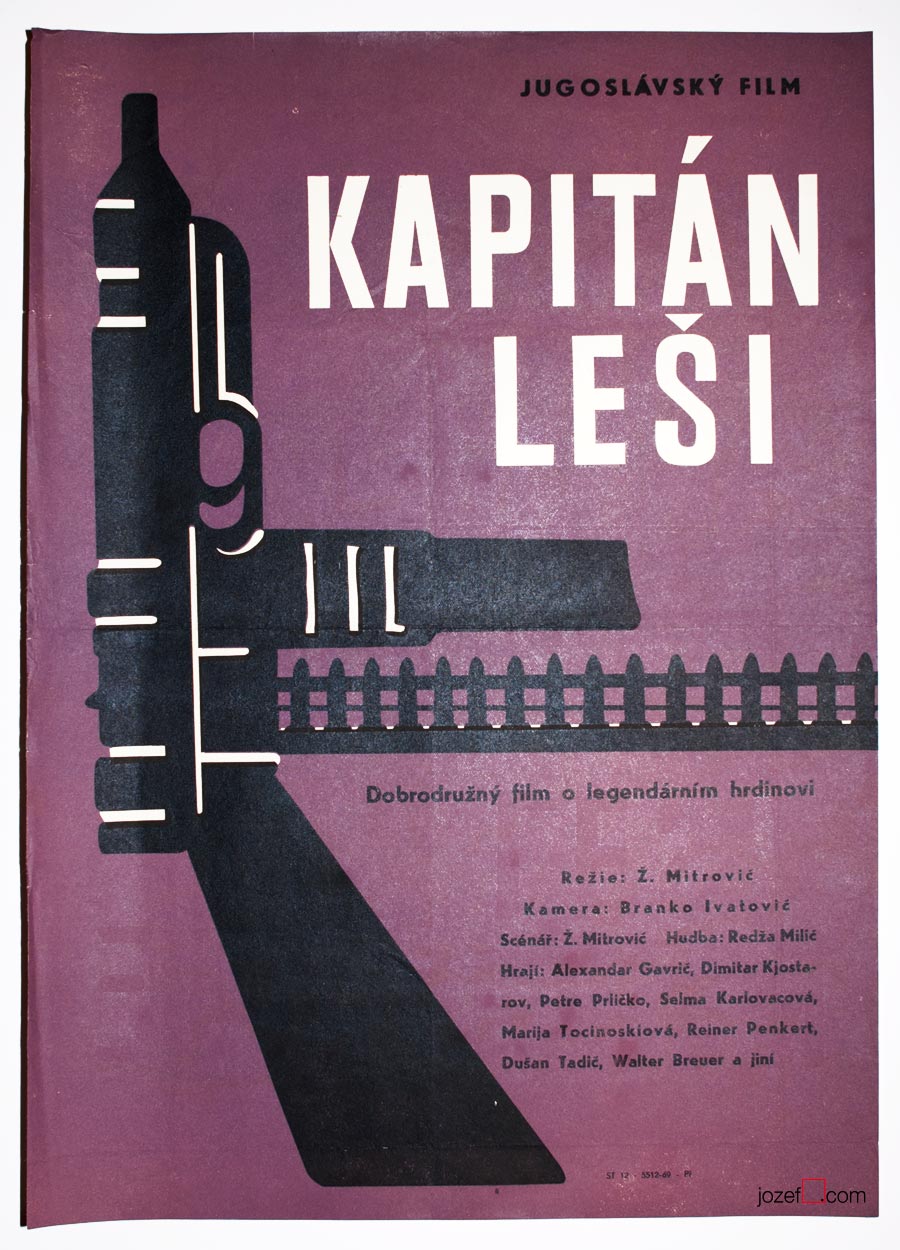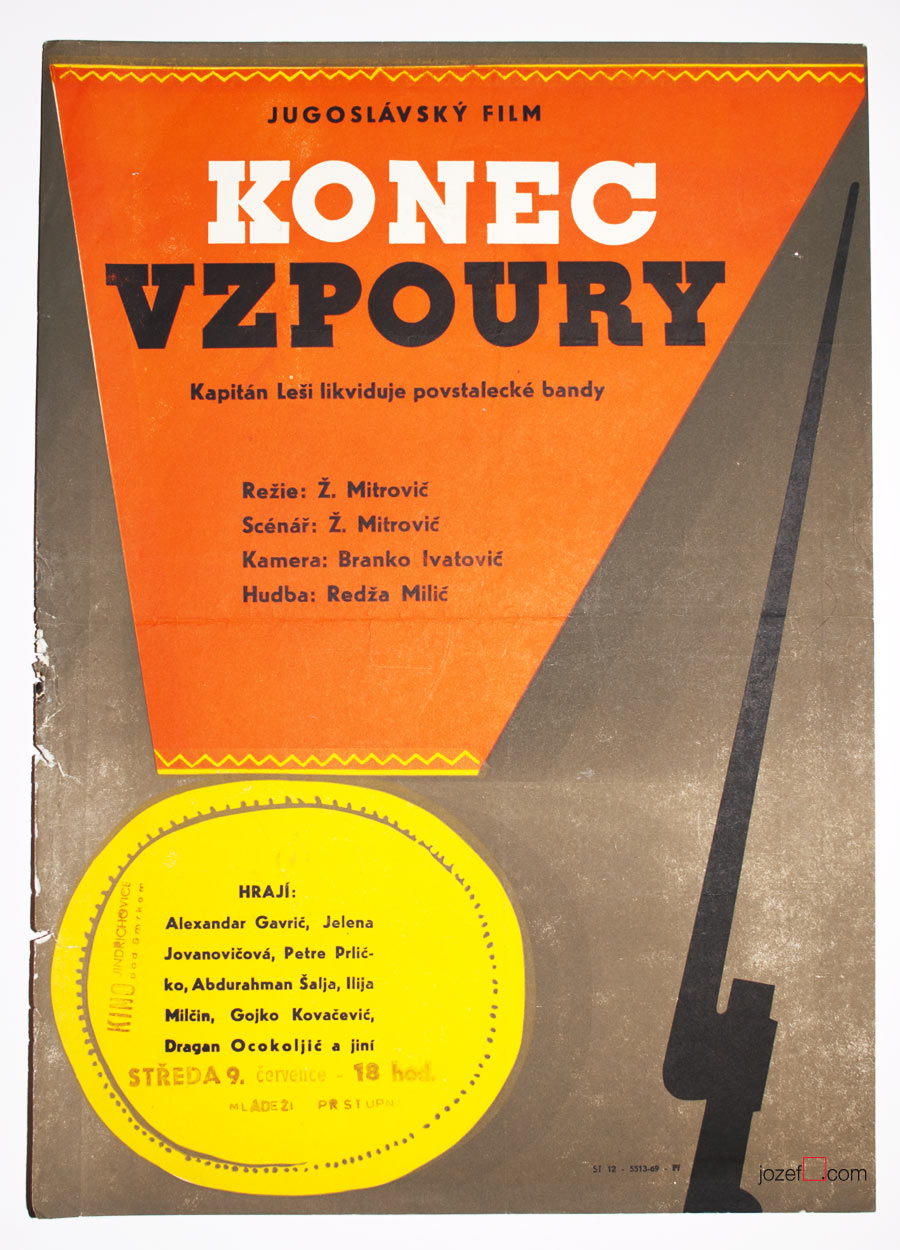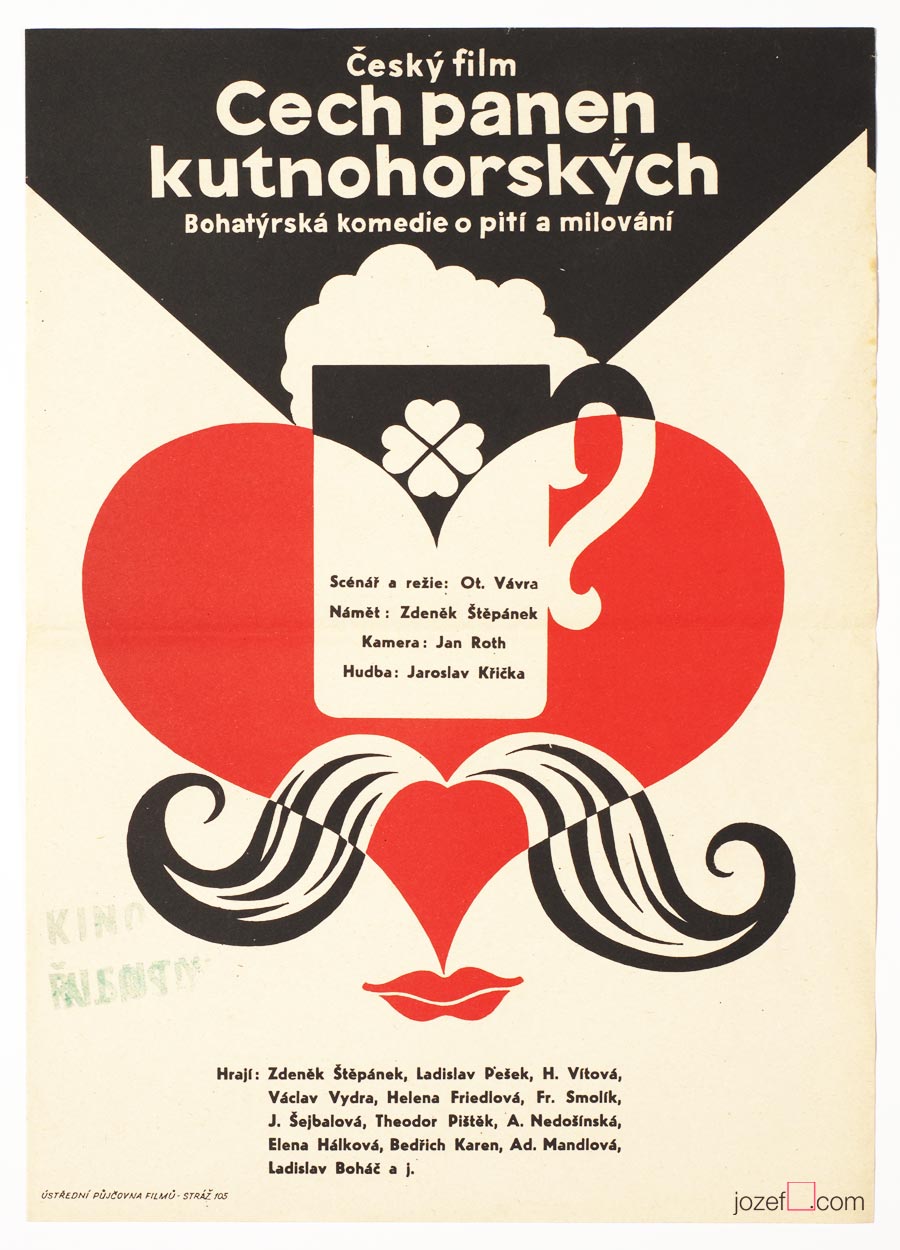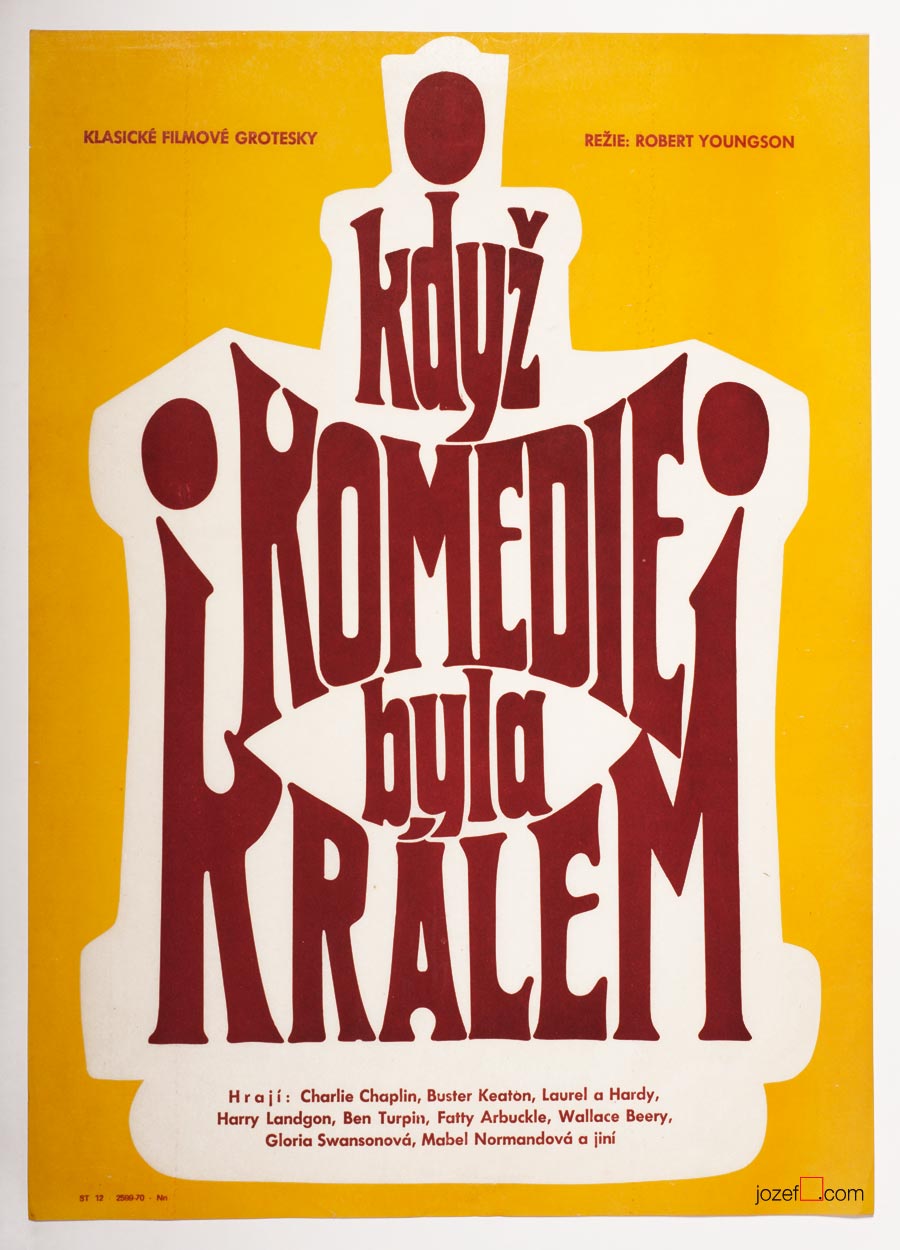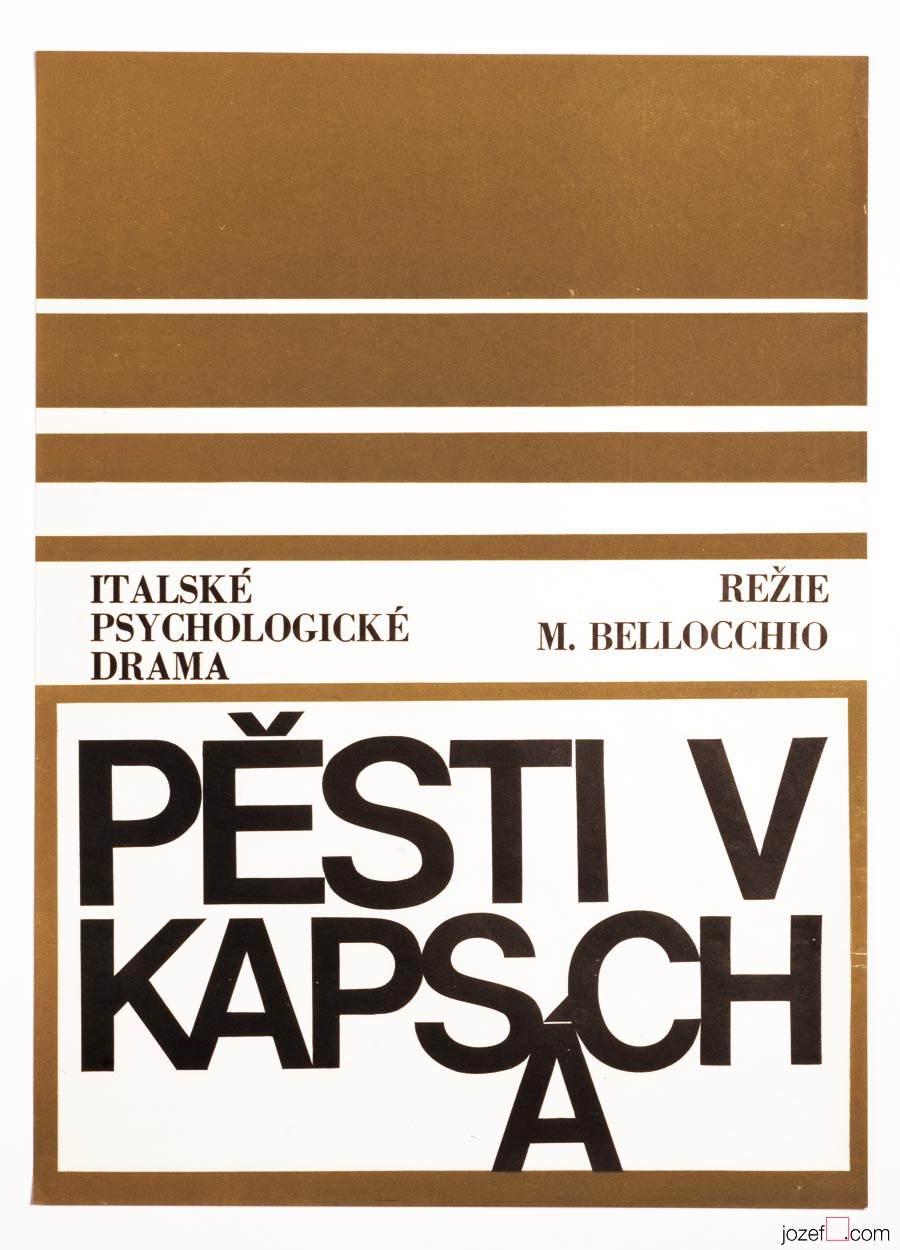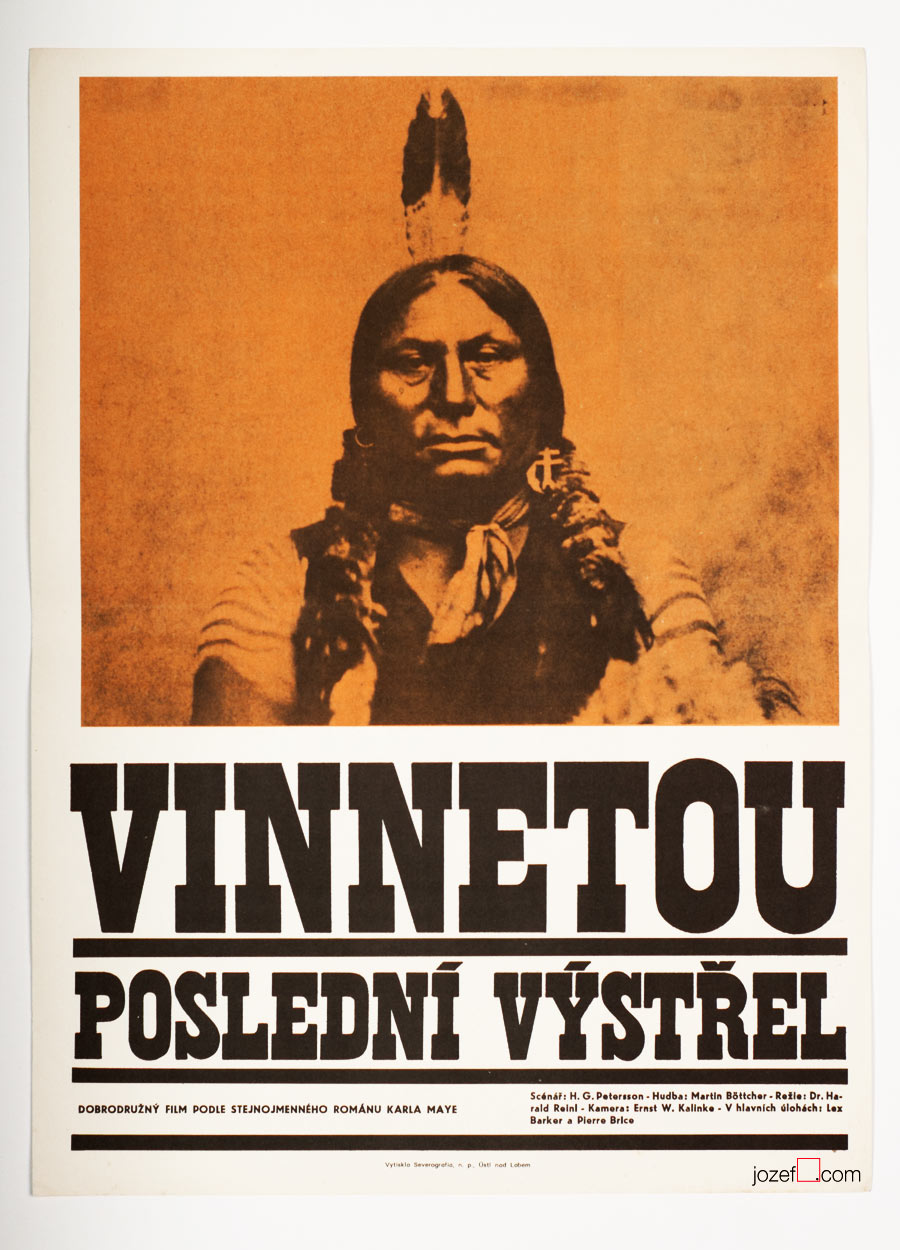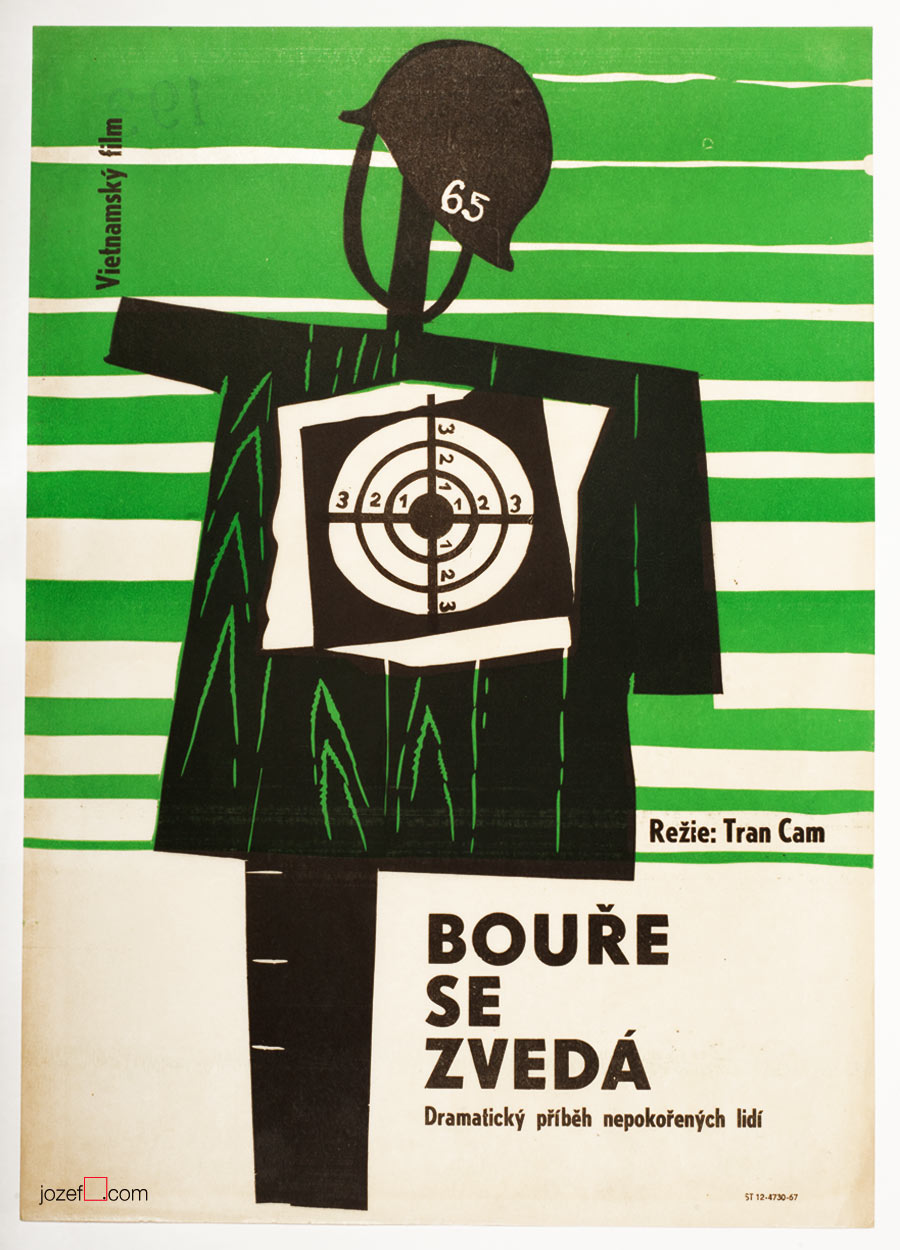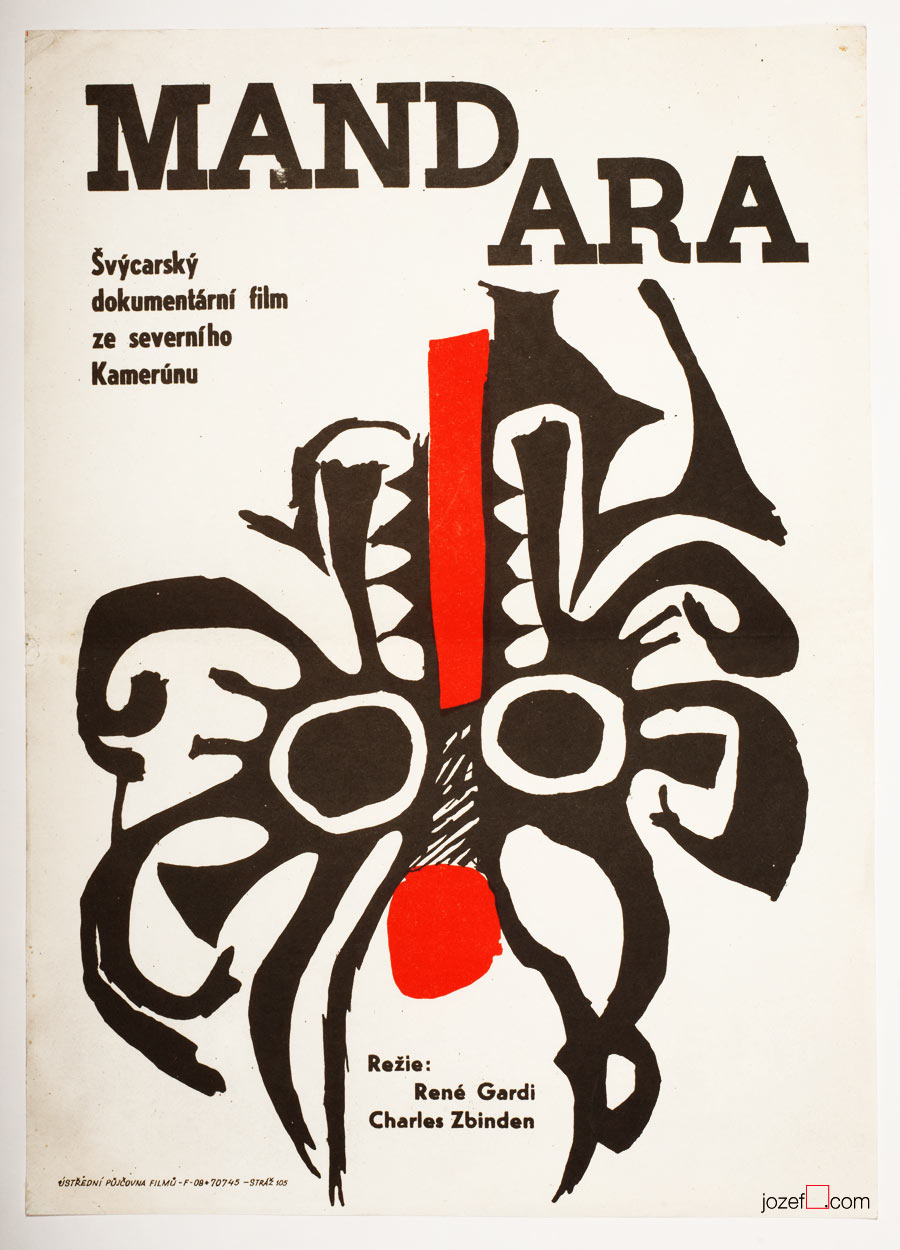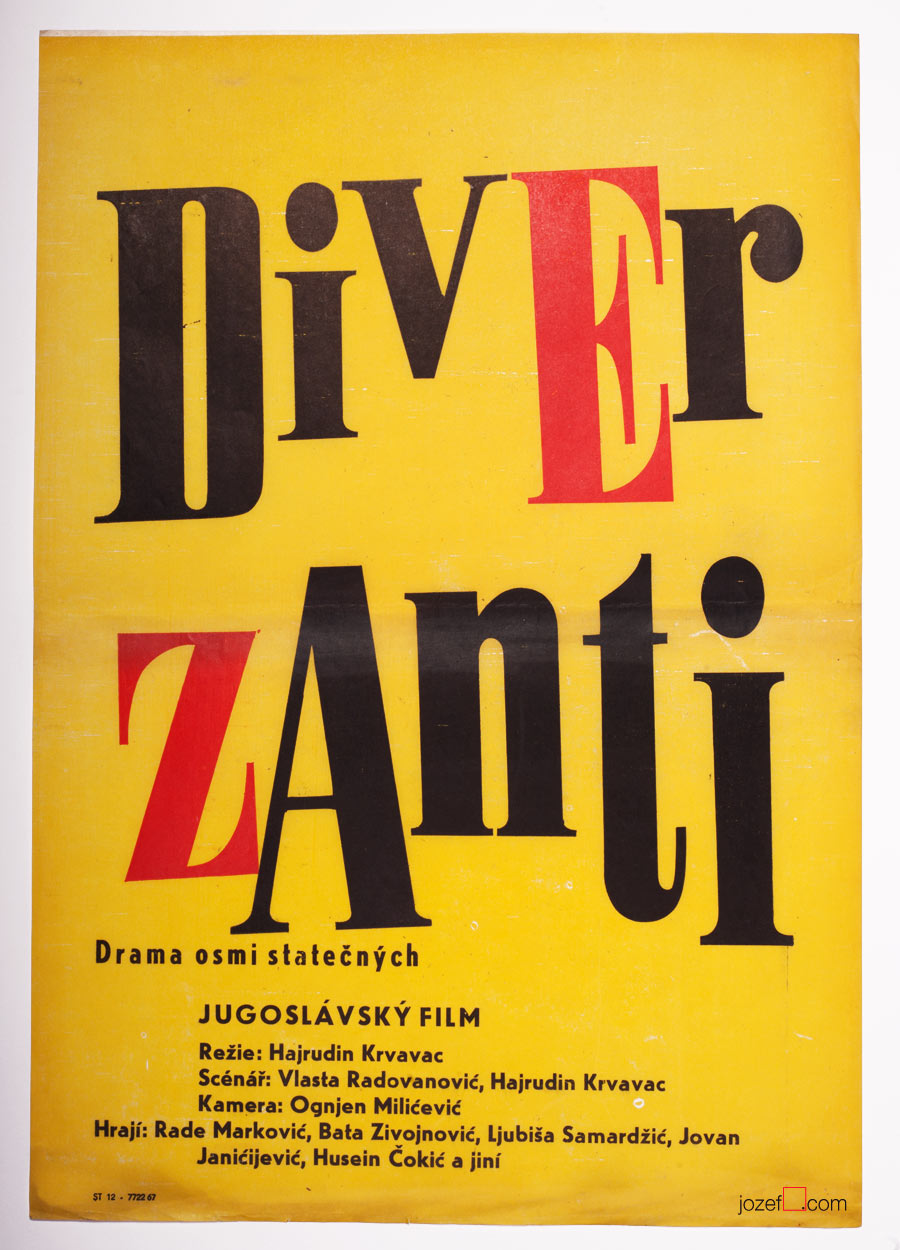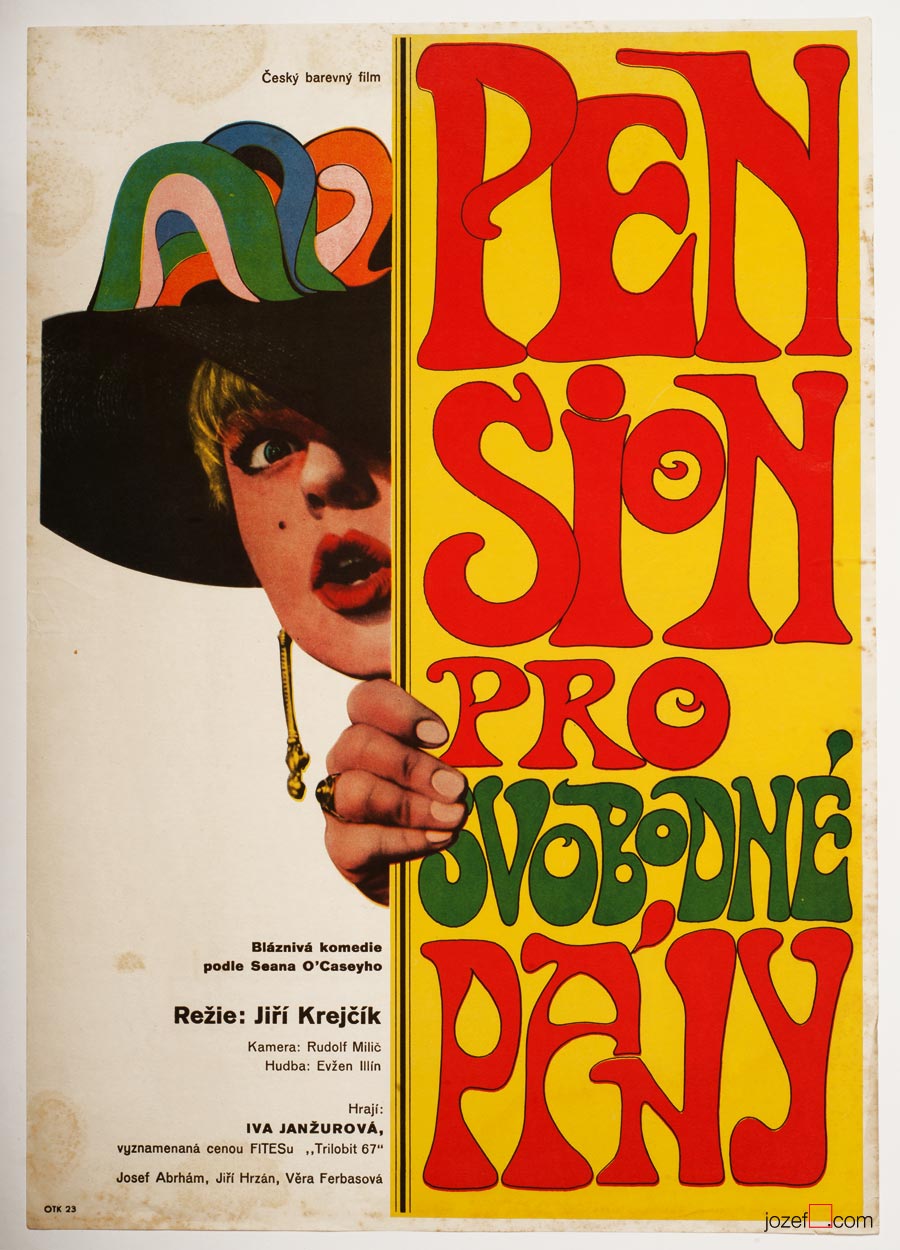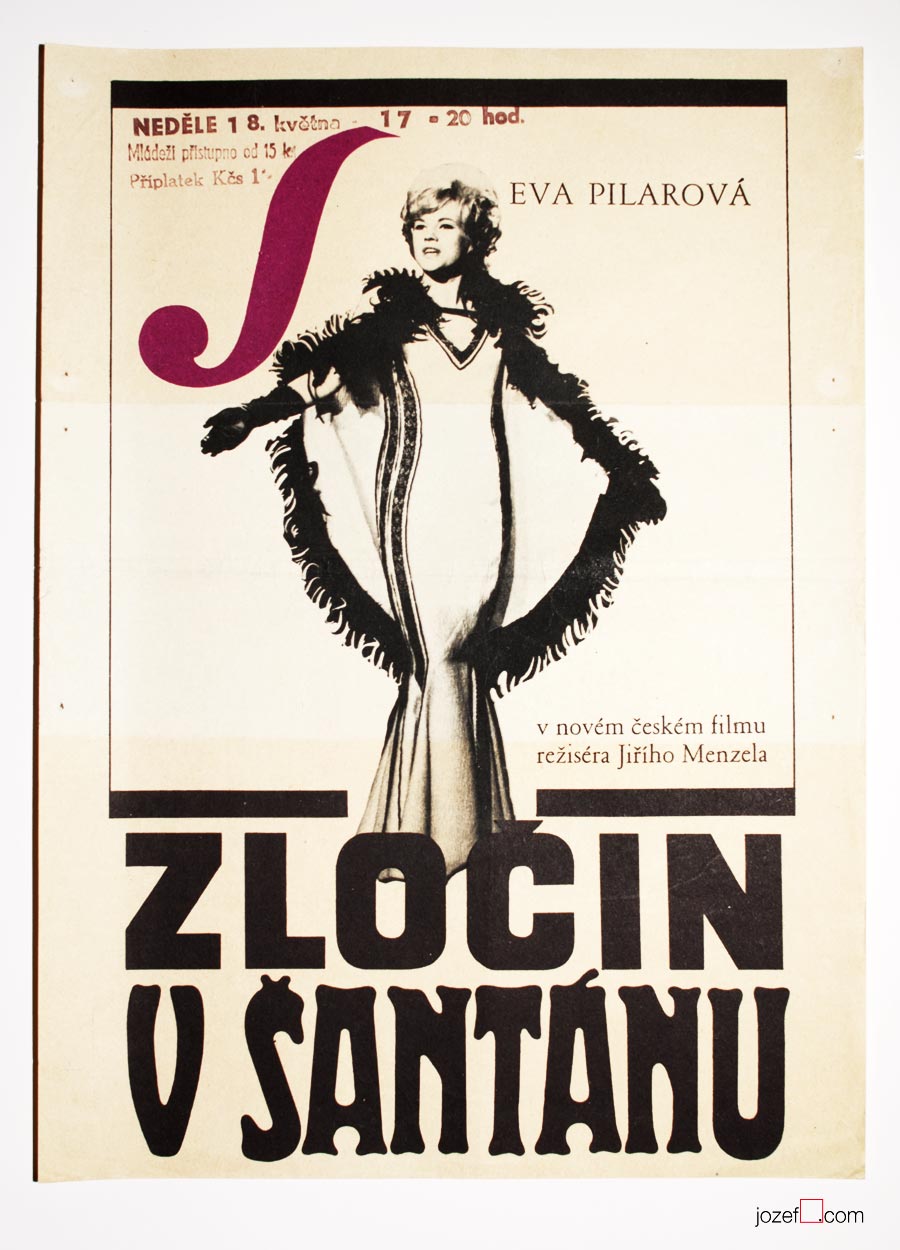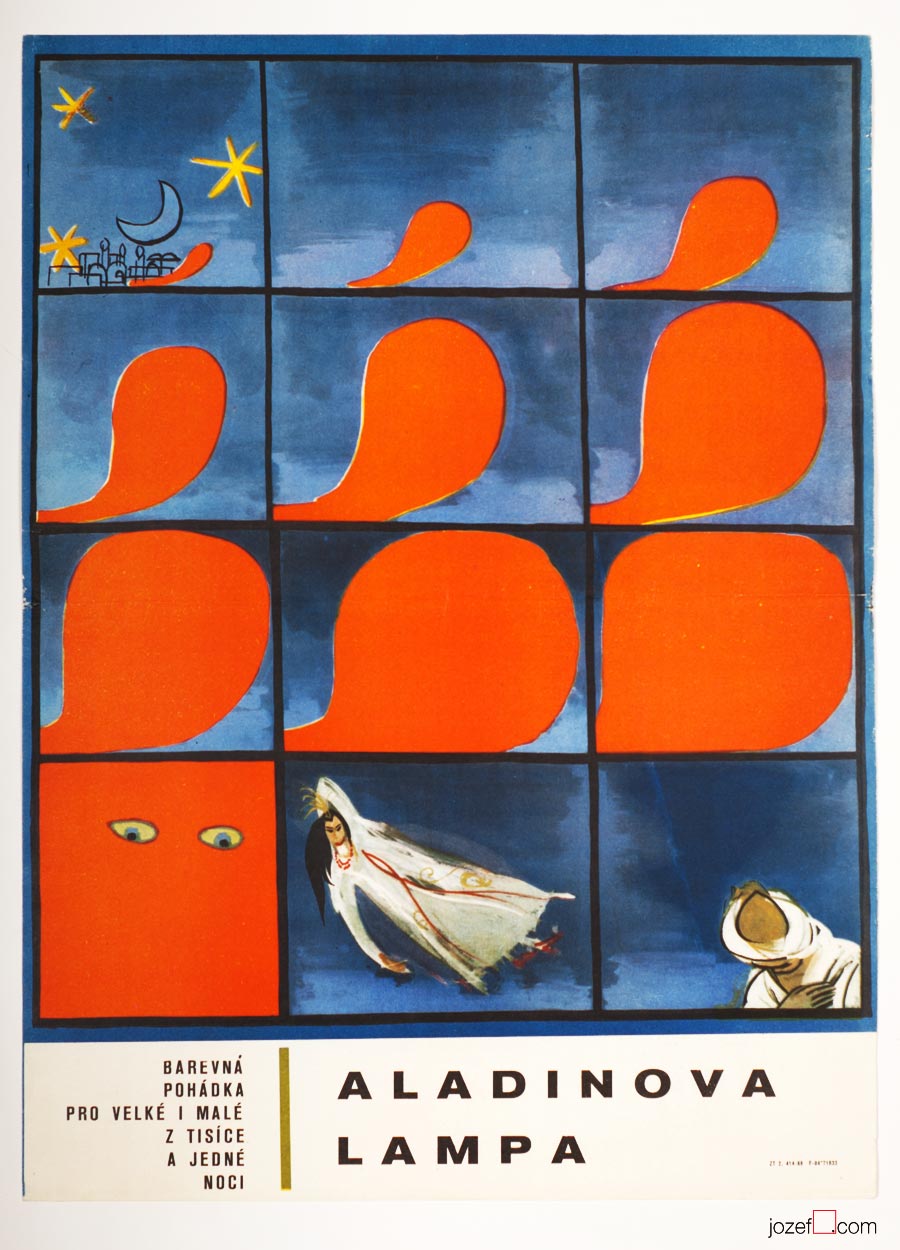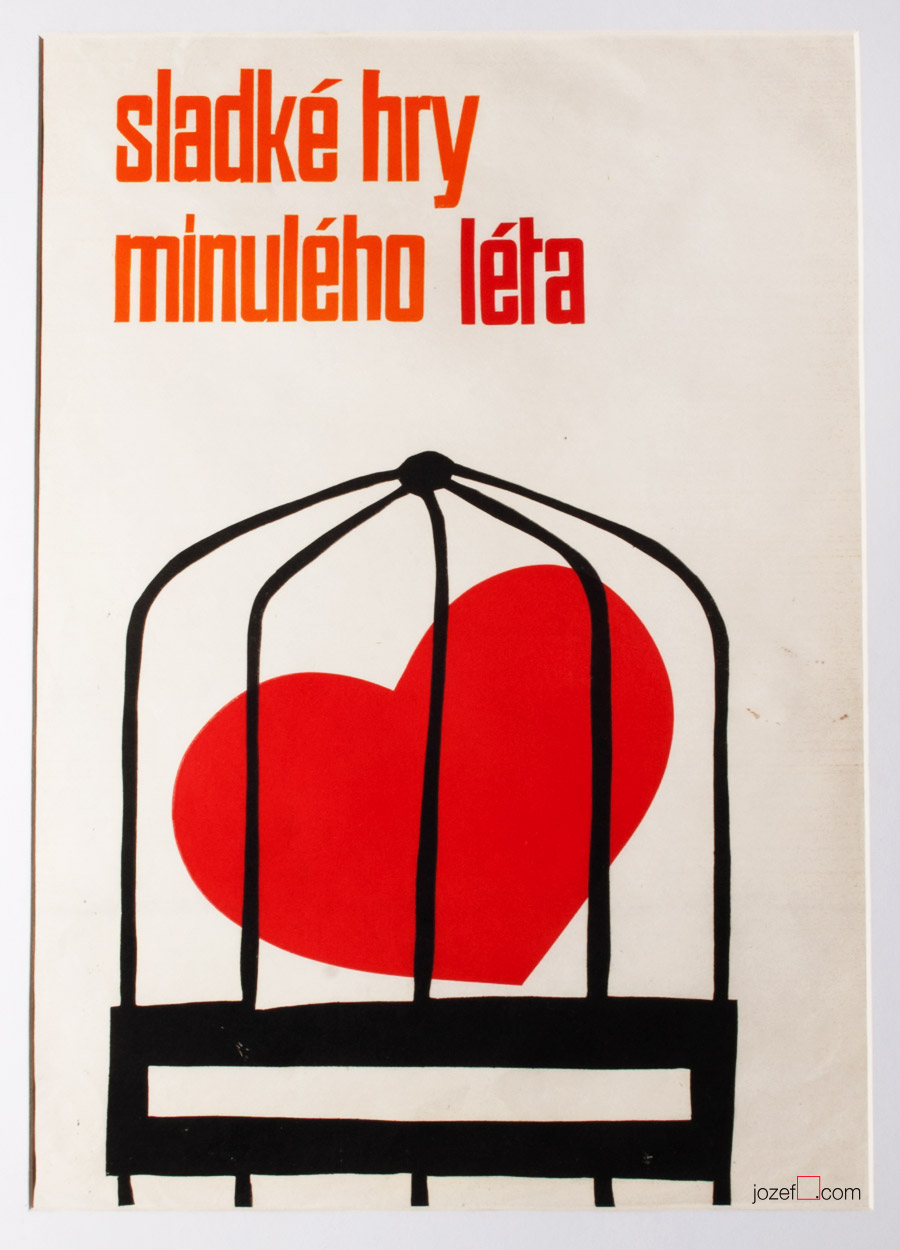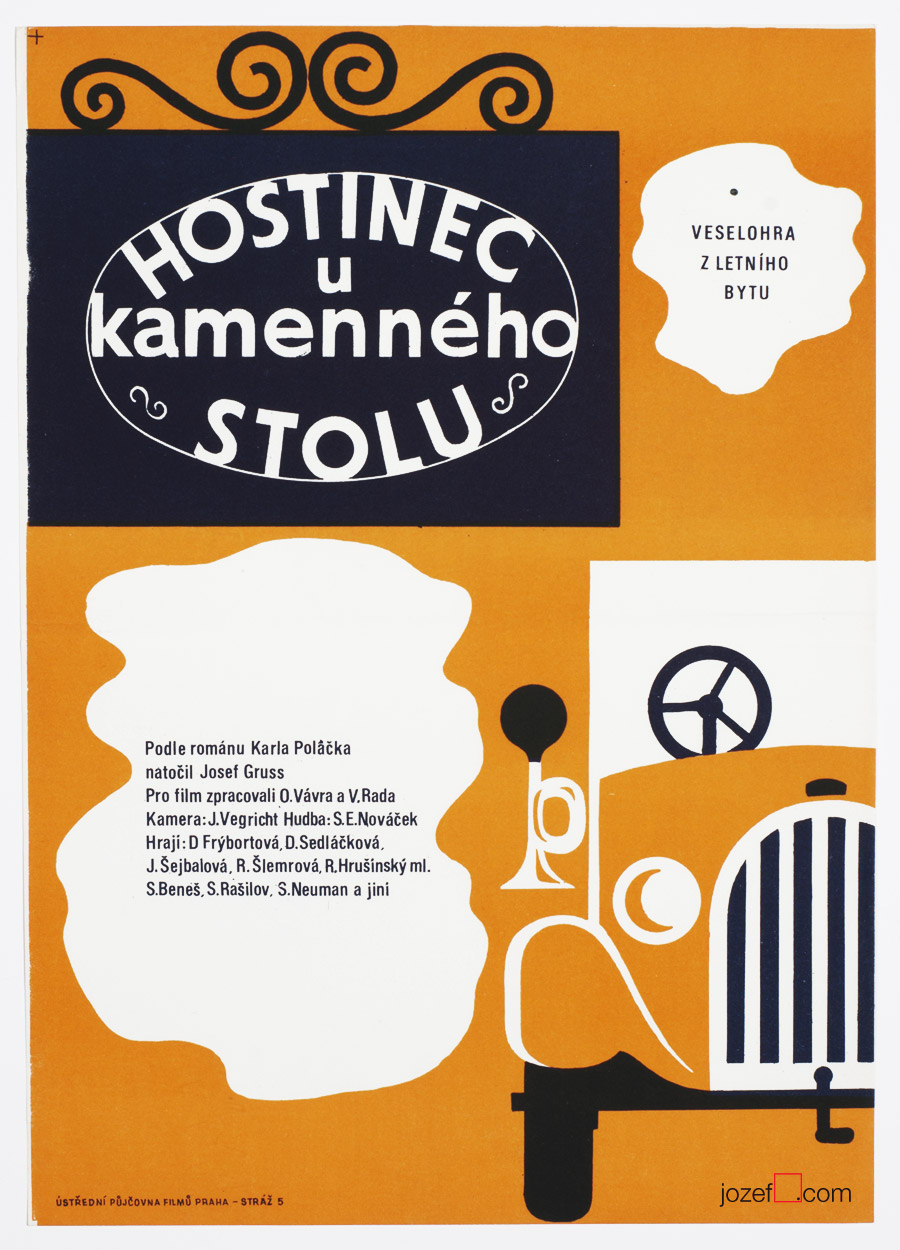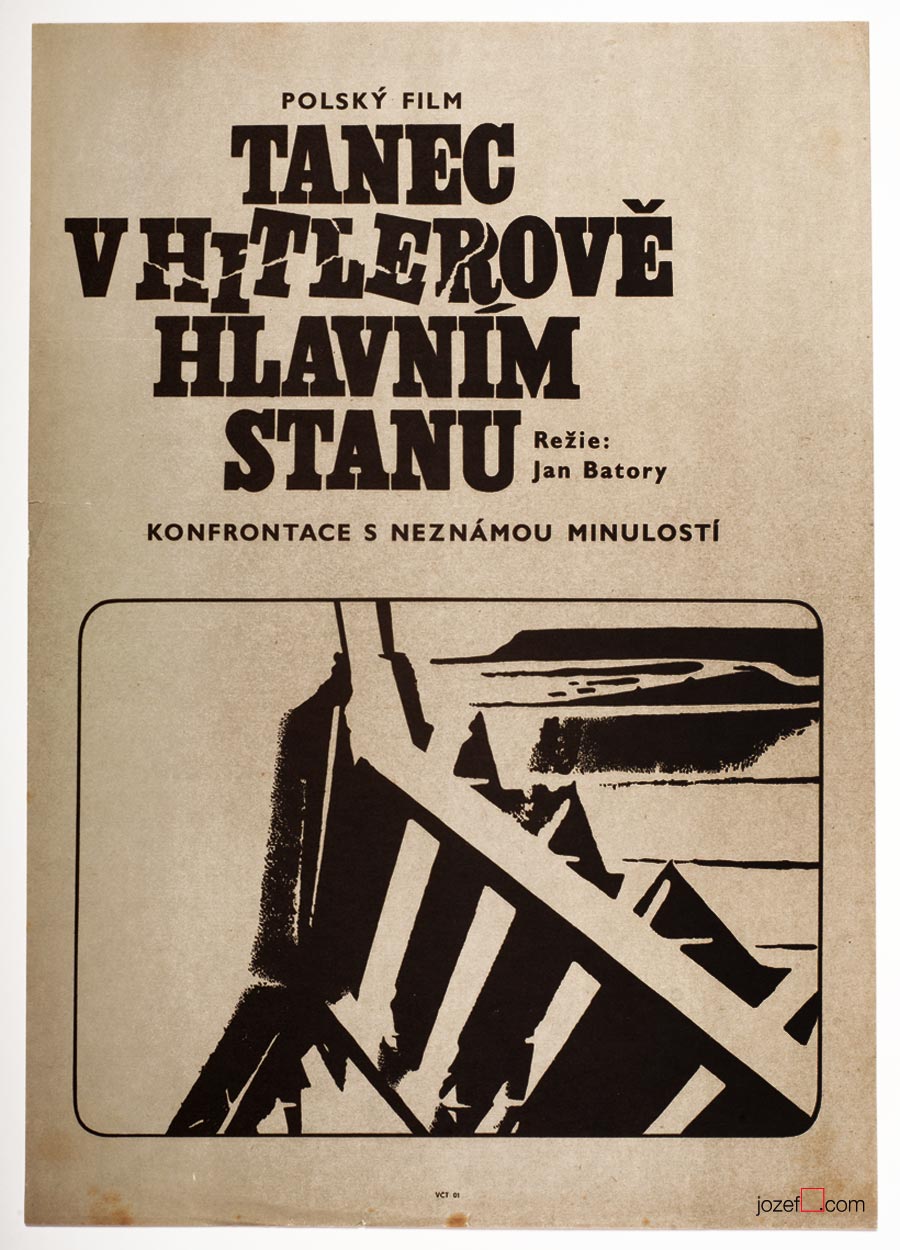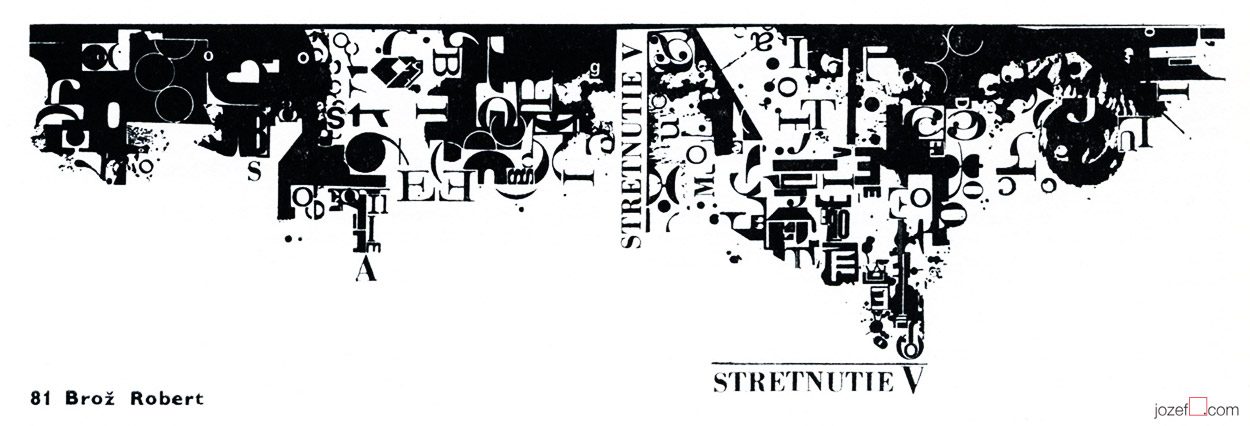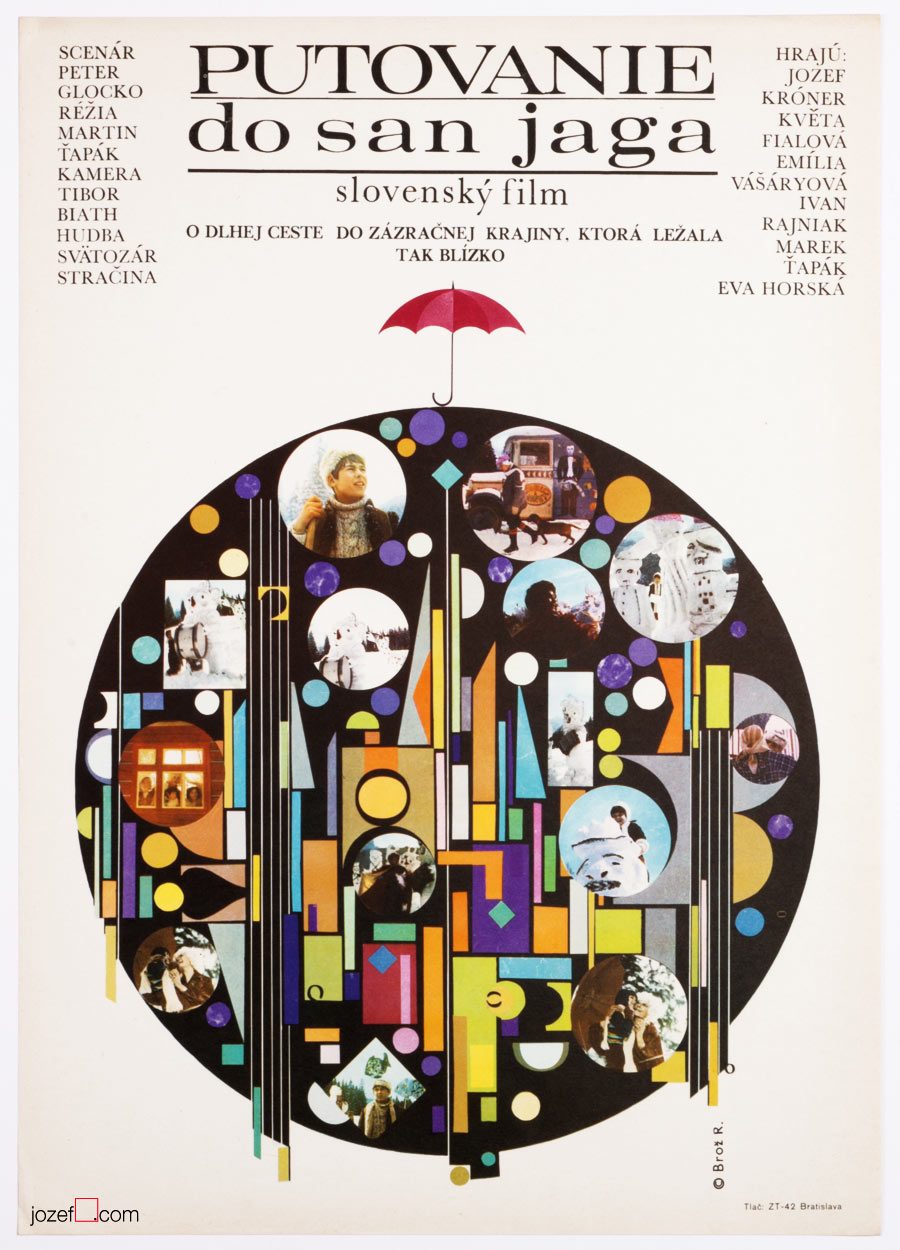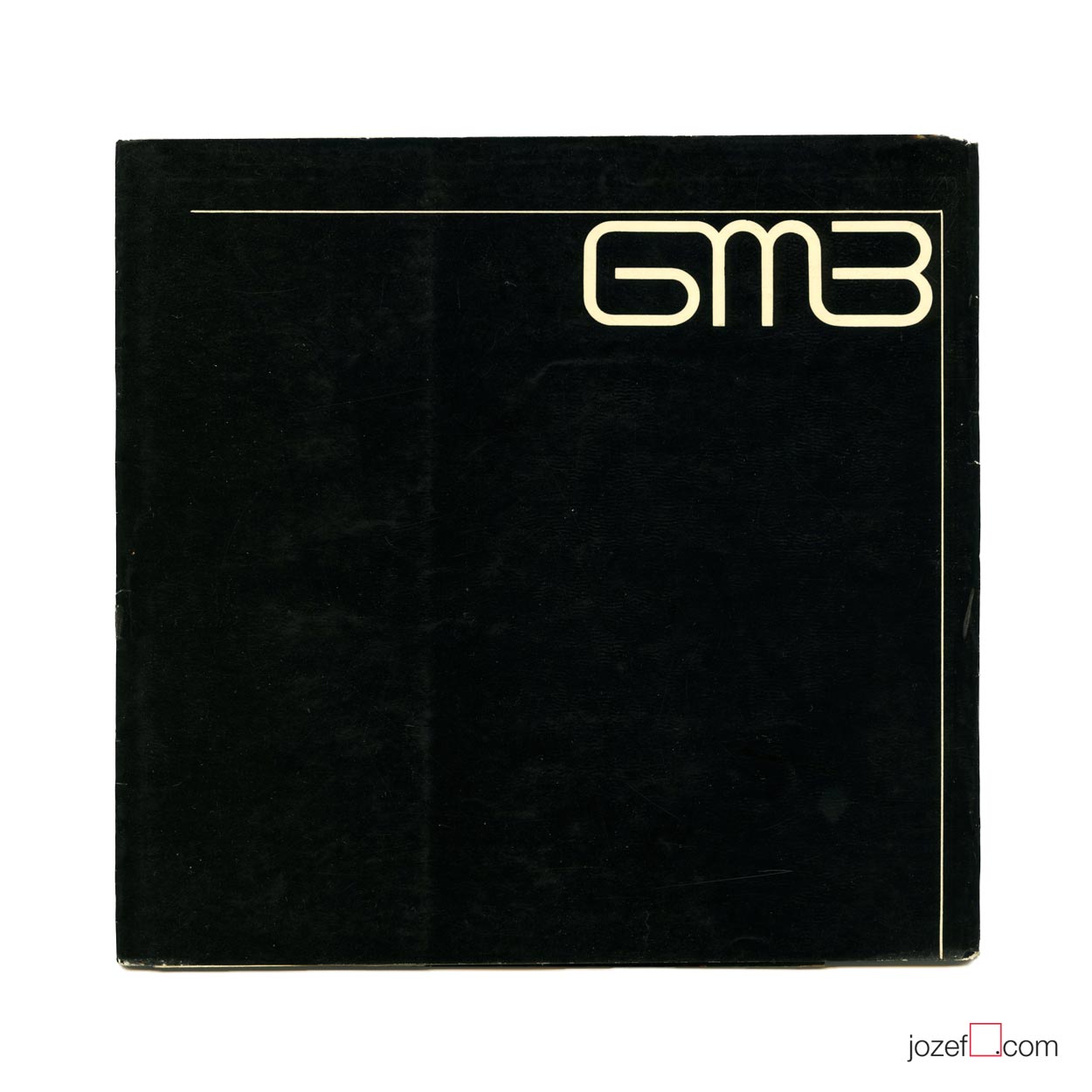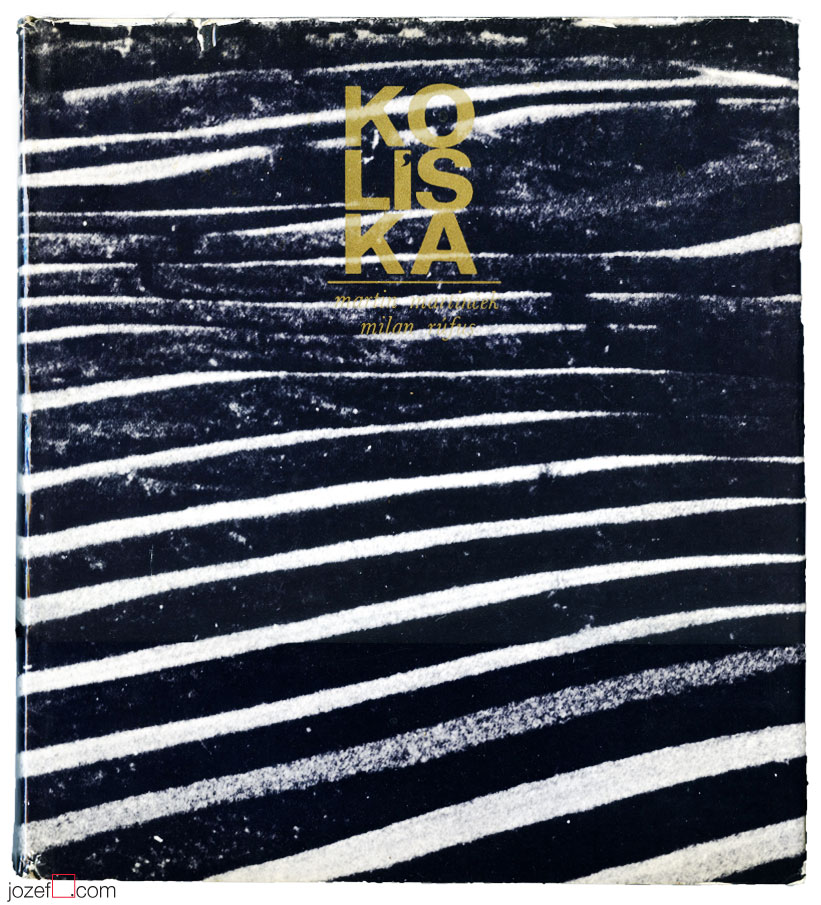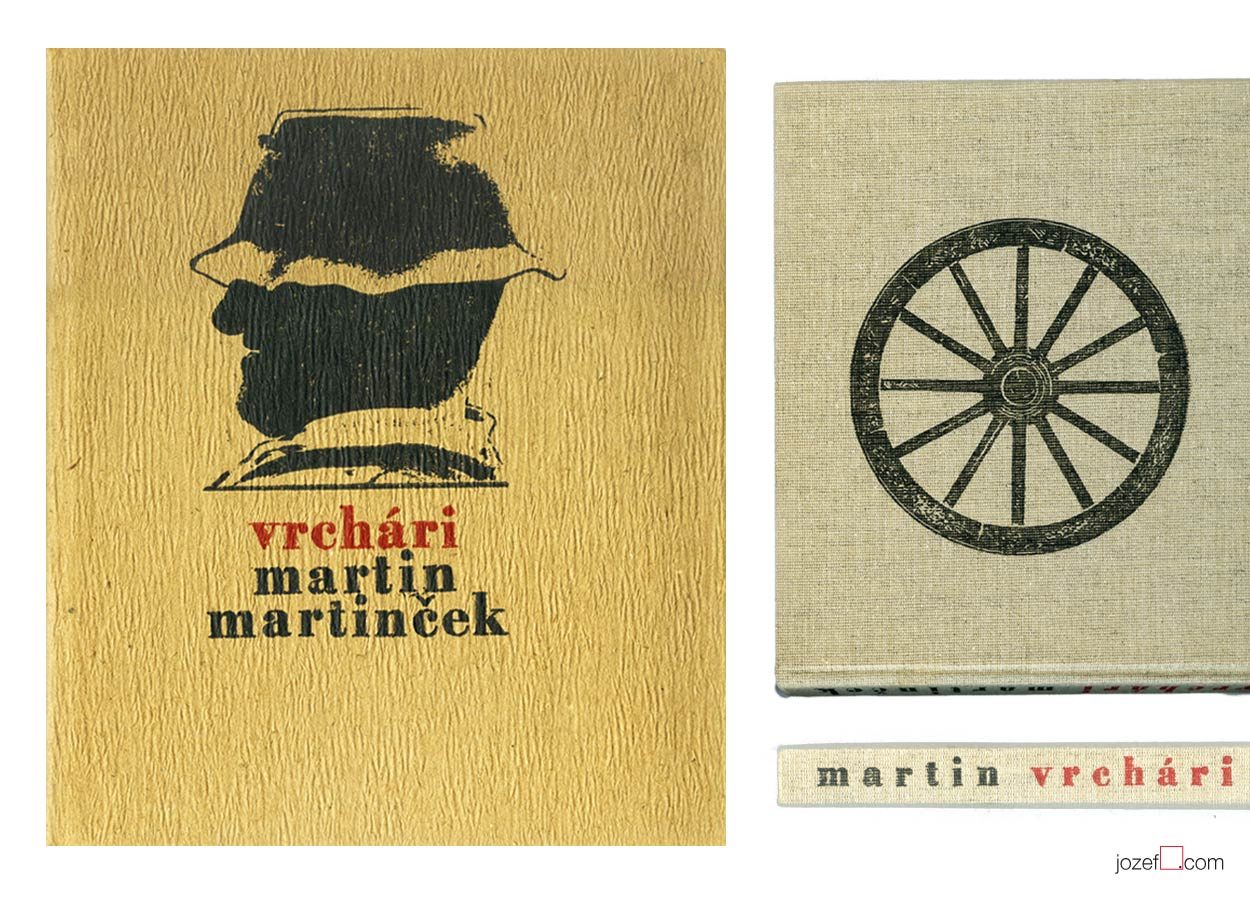Film posters / Made in Czechoslovakia. The story of film posters. Take 1.
Film posters in history. Poster story in few takes.
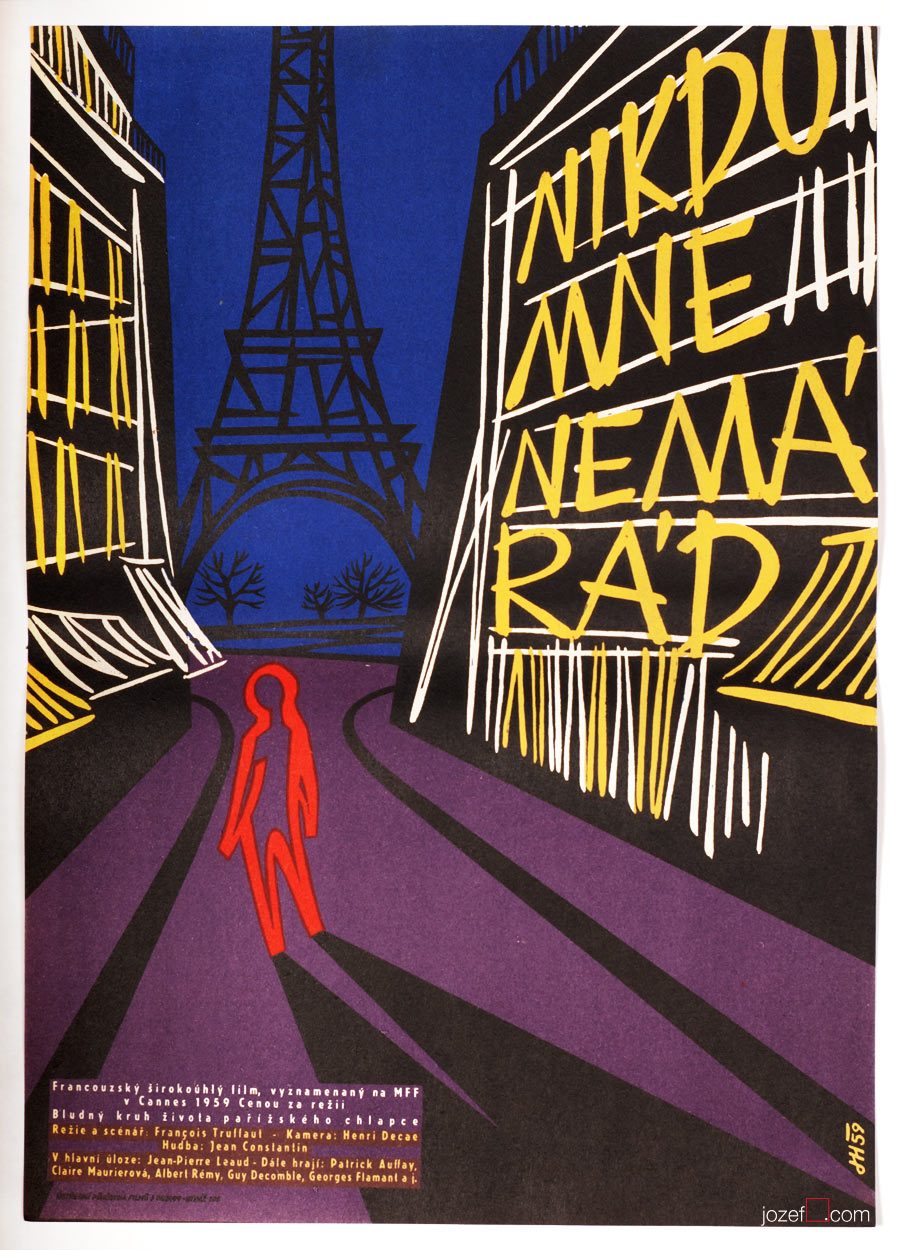
EXPO 58 – Brussels and travelling
It was not likely until 1958 EXPO show in Brussels when Czechoslovakia suddenly reappeared in the world wide art discussion. Overleaping thickness of Communist propaganda was overshadowing the cultural existence not only for another side of the Iron curtain. No wonder, as Stanislav Kolibal, one of the most refined Czech artist / sculptor recollects in his interview for Czech radio broadcast:
[quote]”Travelling before 1957 was just not happening.”[/quote]
It was not happening after that either, but things were a bit smoother and significantly moving towards lots of explorations.
• typical early example of the “Noodle” shaped film poster, returning as an idea back in 60s without any further success.
• film posters following old poster traditions.
• 50s film posters came very rarely with the signature.
Early days of film posters.
Unhealthy political regime in Czechoslovakia had very strong impact on cultural distribution within the country. Country was perfectly sealed off. Presence of cold war was also effecting the possibilities of any official cultural exchange. Art making was going through all kinds of metamorphosis, but in reality it only had one face. That face was called Social Realism and it had very clear, strong and long lasting statement. Visual disillusion would chase one everywhere. And if a little flag was’t displayed on the window seal on the 1st of May, one would be chased by someone else, too. Simply put; politicians were using art for their own propaganda and there was no way around it. Or maybe there was?
• fascinating starts from the “old school” representatives. Many artists were trying to cover the new medium. By the end of 50s poster still did not have that film look.
Film poster in Czechoslovakia was also going through many changes before it meets the doors of collectors and film festivals. All sorts of artists were trying out to fit the new medium, but it was not until early sixties when fresh new ideologies were presented in both films and similarly in film posters design. Poster designers had it very hard to make pleasing posters for bad propaganda or WWI-II films at the beginning. Significance of EXPO 58 and sudden interest of politicians in foreign currency from the fresh source1 turned a blind eye on art scene ever since. Censorship however remains necessity.
• Adolf Born is getting involved in poster making.
• another famous Czech sci-fi books illustrator Teodor Rotrekl designs several film posters.
Censors in form of critics were very much responsible for the public picture. That could never lack enough sympathy for the comrades from the Soviet union / countries of Warszaw pact and on the other hand it had to be critical enough towards anything coming out from the west.
In visual art weird symbols of the era were the most preferable. Motifs of smiling women standing behind the factory machine pretending they do enjoy the heavy work and at the same time they are equally helping in cultivating the nation. This and similar images, everyone possibly came across when they say Communism, were implied in every possible media and censors had to make sure there was enough of it visible.
• playful illustrations and collages of Jan Kubíček were accompanying Czechoslovak film poster all the way to seventies.
• photograph stretches all across the poster.
Thankfully not all of the art disciplines were destined for an extinction. Illustration, animated films as well as film posters remained intact with only few slight obstacles.2 By the beginning of 1960s several renown artists, graphic designers and illustrators such as Bedřich Dlouhý, Miloš Reindl, Richard Fremund, Zdeněk Palcr, Karel Teissig, Jaroslav Fišer were shaping up the future visuals of film posters. When award winning poster and graphic designer Zdeněk Ziegler meets the official film posters committee for the first time, he remembers his feelings were strongly in favour of his critics.
[quote]”There were always two or three graphic designers among commissioners who would defend fellow colleague. It was Karel Vaca and Dobroslav Foll in my case.” 3[/quote]
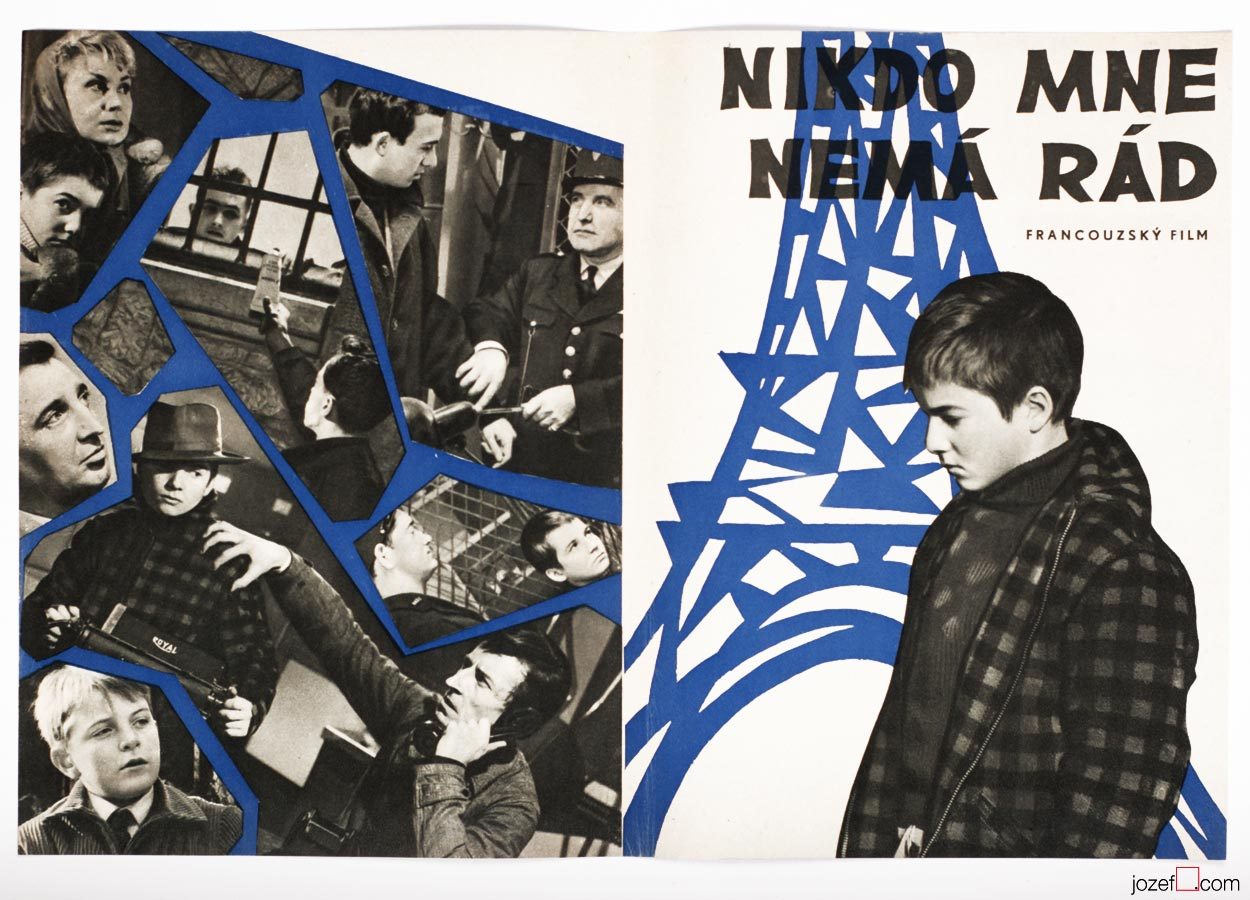
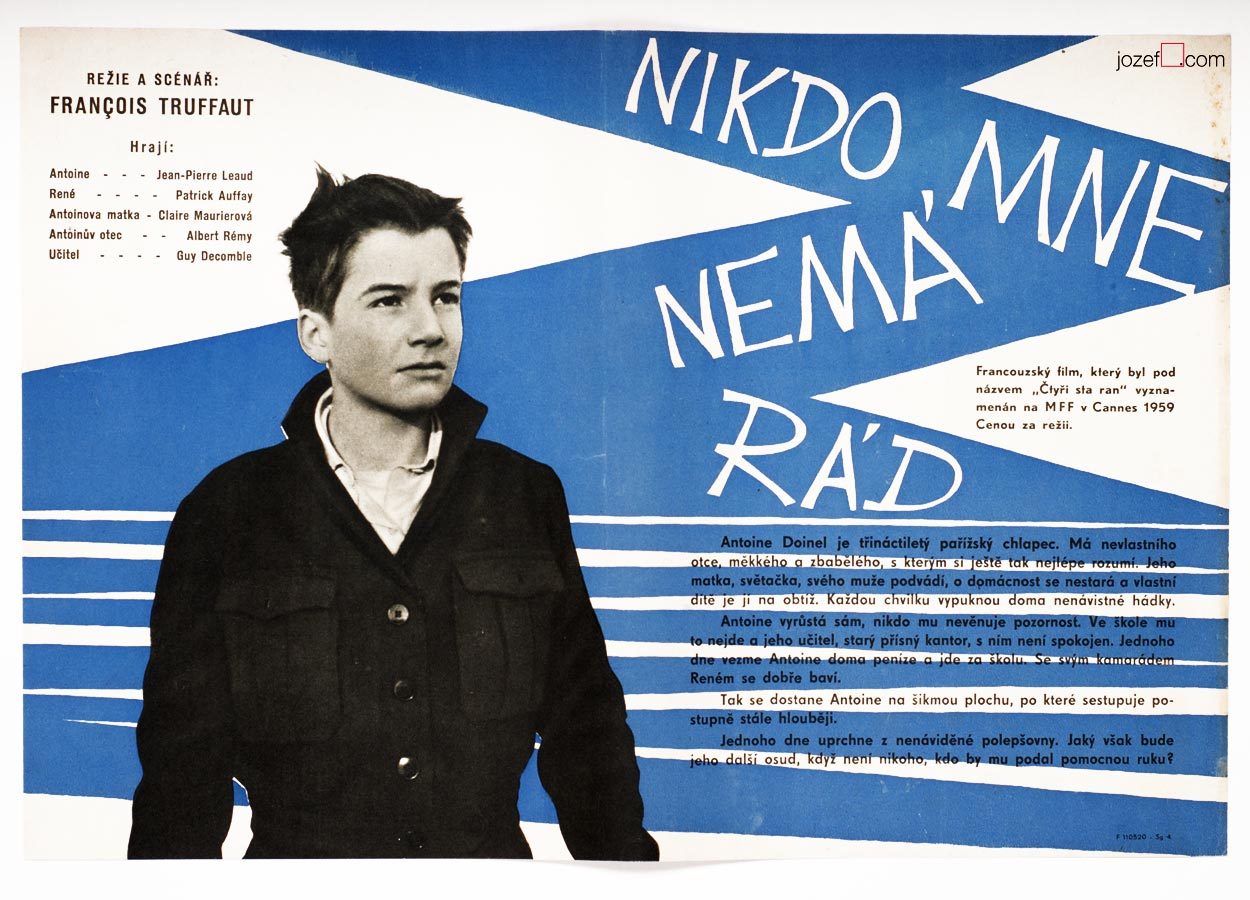
With increasing attendance at the international film festivals, film poster was also heading towards new directions. International success of movies created by Miloš Forman, Věra Chytilová, Jiří Menzel and other important directors of Czechoslovak New Wave, introduced Czechoslovak poster design to the foreign audience. Film posters designed in 1960s were created by some of the best poster designers of the era and we will be exploring them in more details in our next post.
•••
1. Enough currency was floating in the country. Czechoslovakia was one of the greatest business partners with the death at the time. Military industry was among the most popular and export was doing just fine. / 150 000 Slov – former exile magazine, X/91/27, p.3-5, Morálka musí počkat (Morale must wait), Inge Santnerová.
2. Vratislav Hlavatý for the Czech Radio Interview / 29.3.2013 (Several of his publications were banned throughout Communism).
3. Zdeněk Ziegler for the Czech Radio Interview / 15.5.2013.
Additional research:
Literature:
- Flashback / Czech and Slovak Film Posters 1959-1989, ed. Libor Gronský, Marek Perůtka, Michal Soukup, Olomouc Museum of Art, 2004.
Online web:
Note: For shop and blog highlights SUBSCRIBE to our weekly newsletter.

